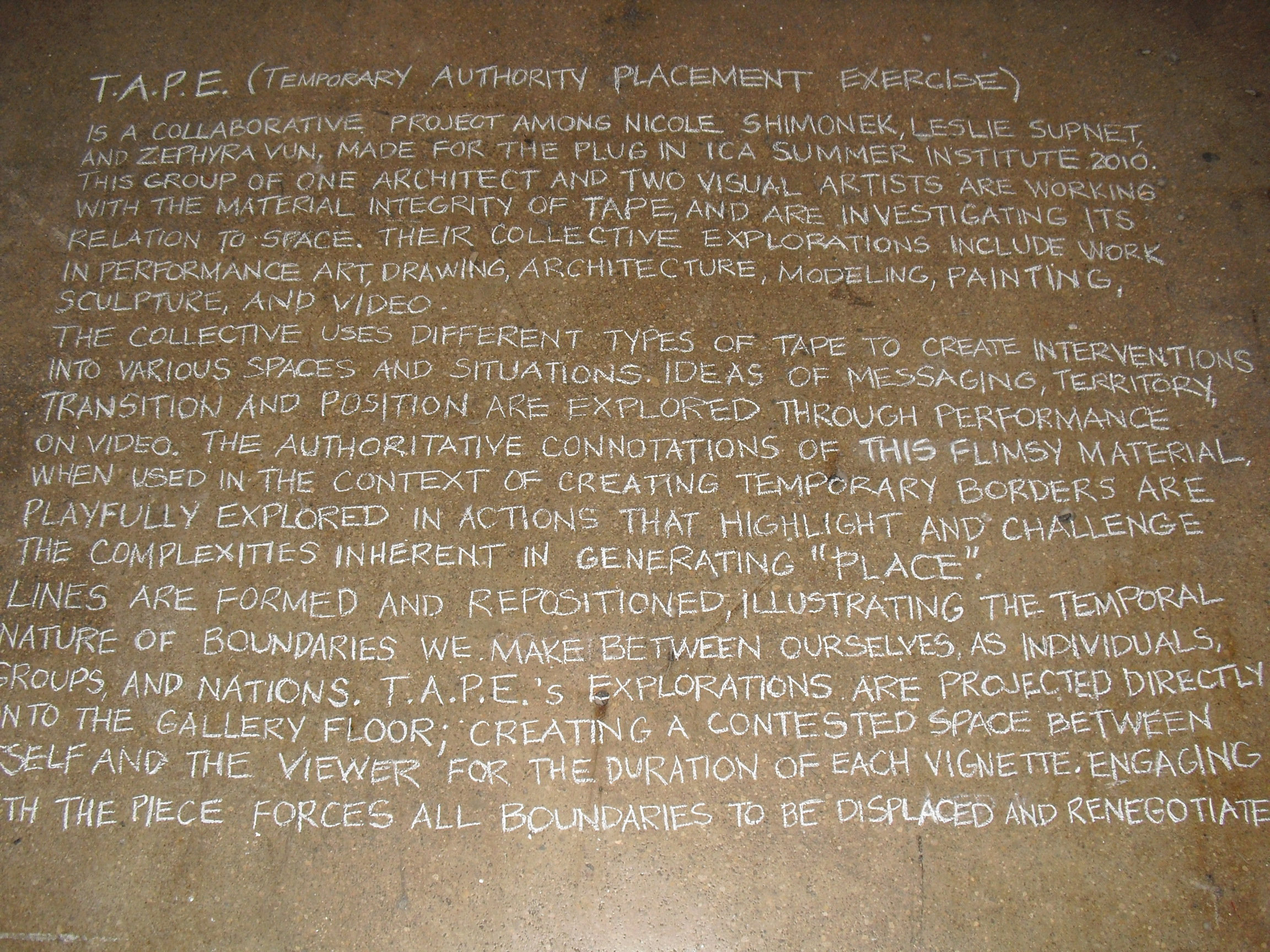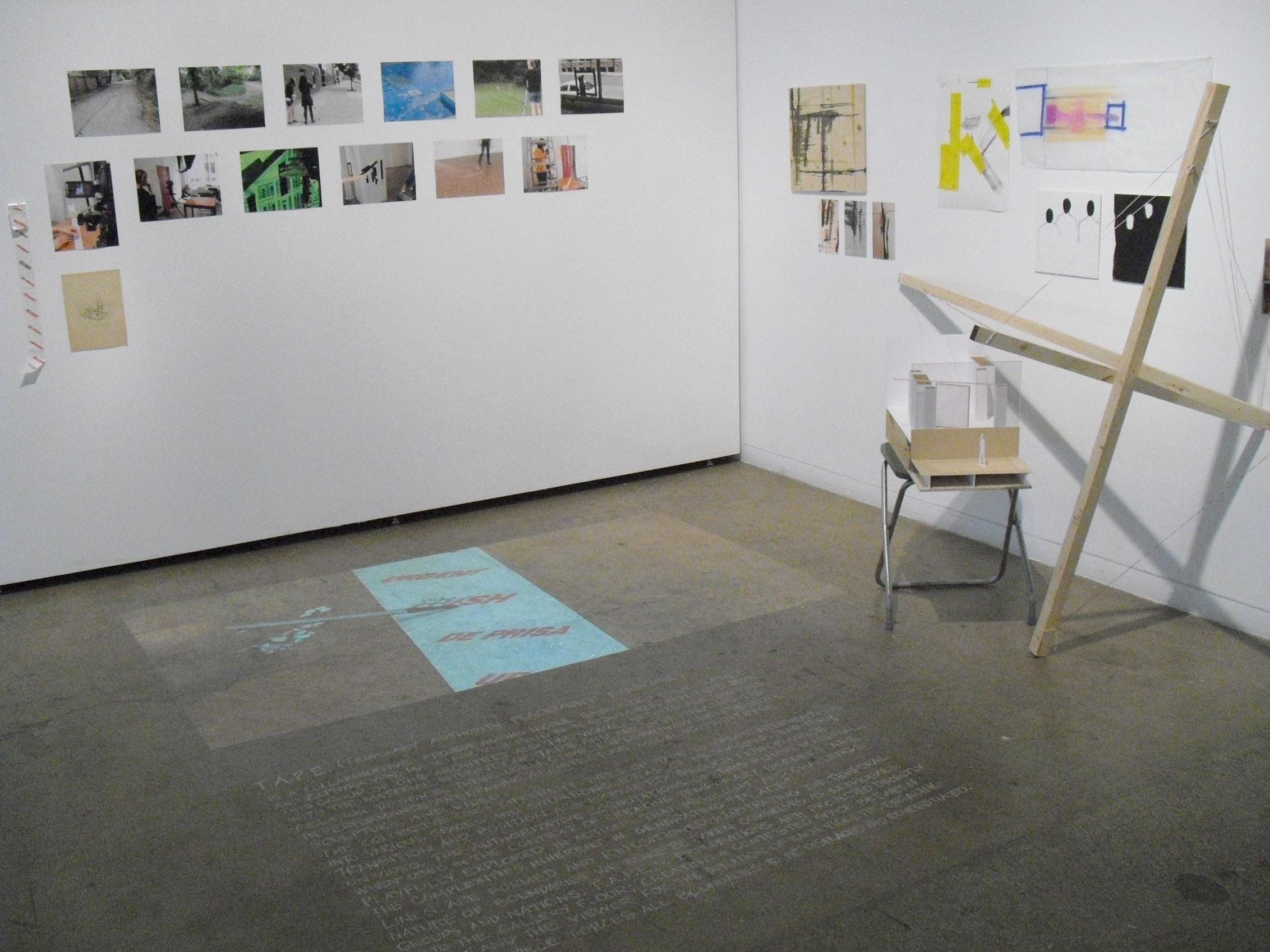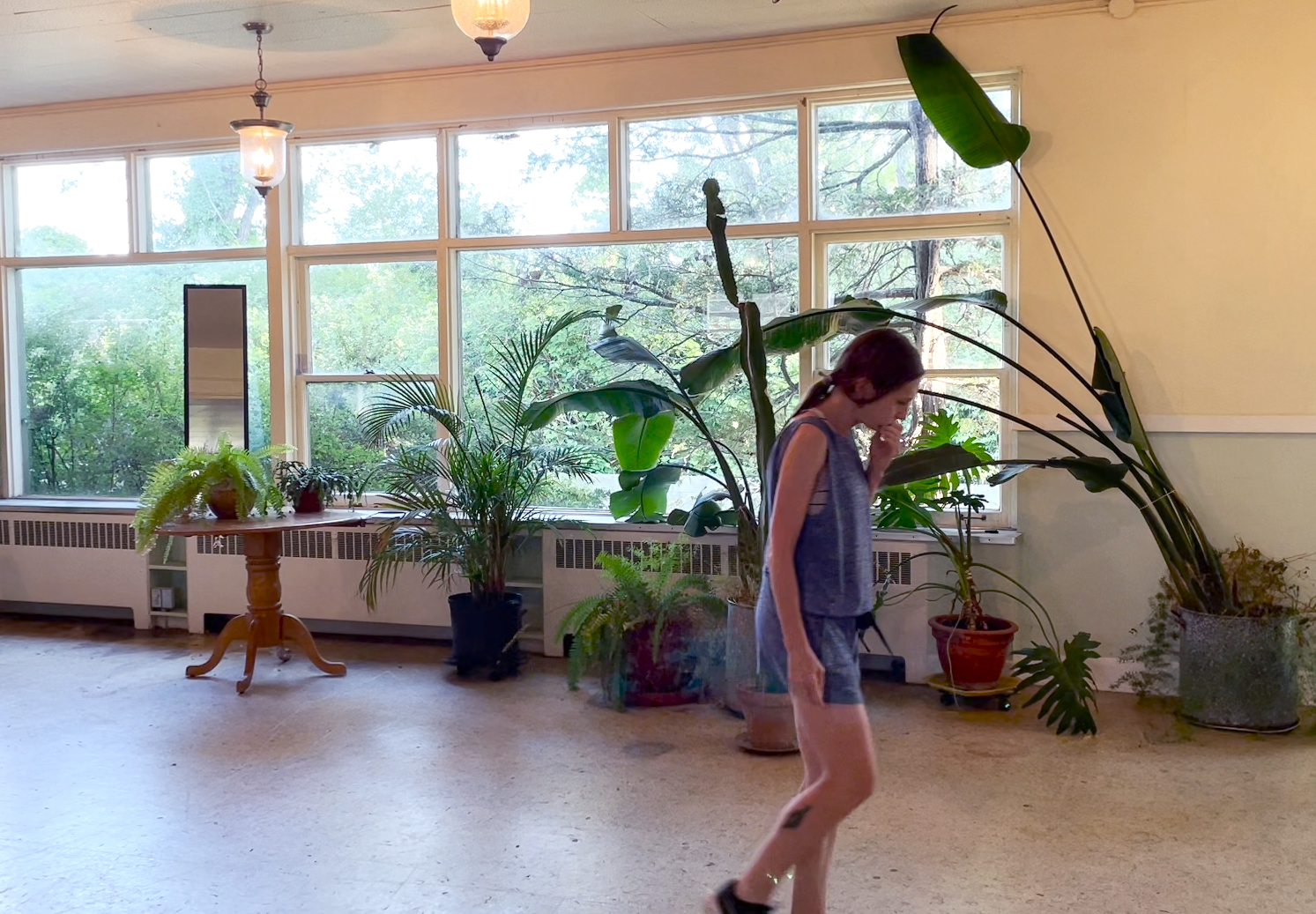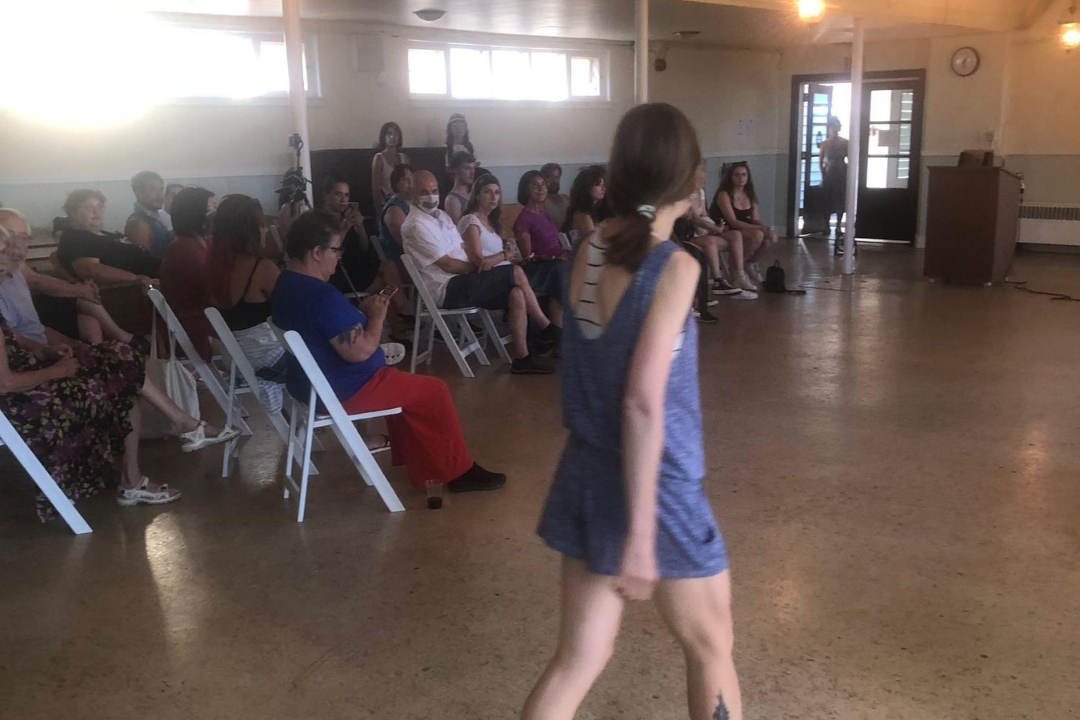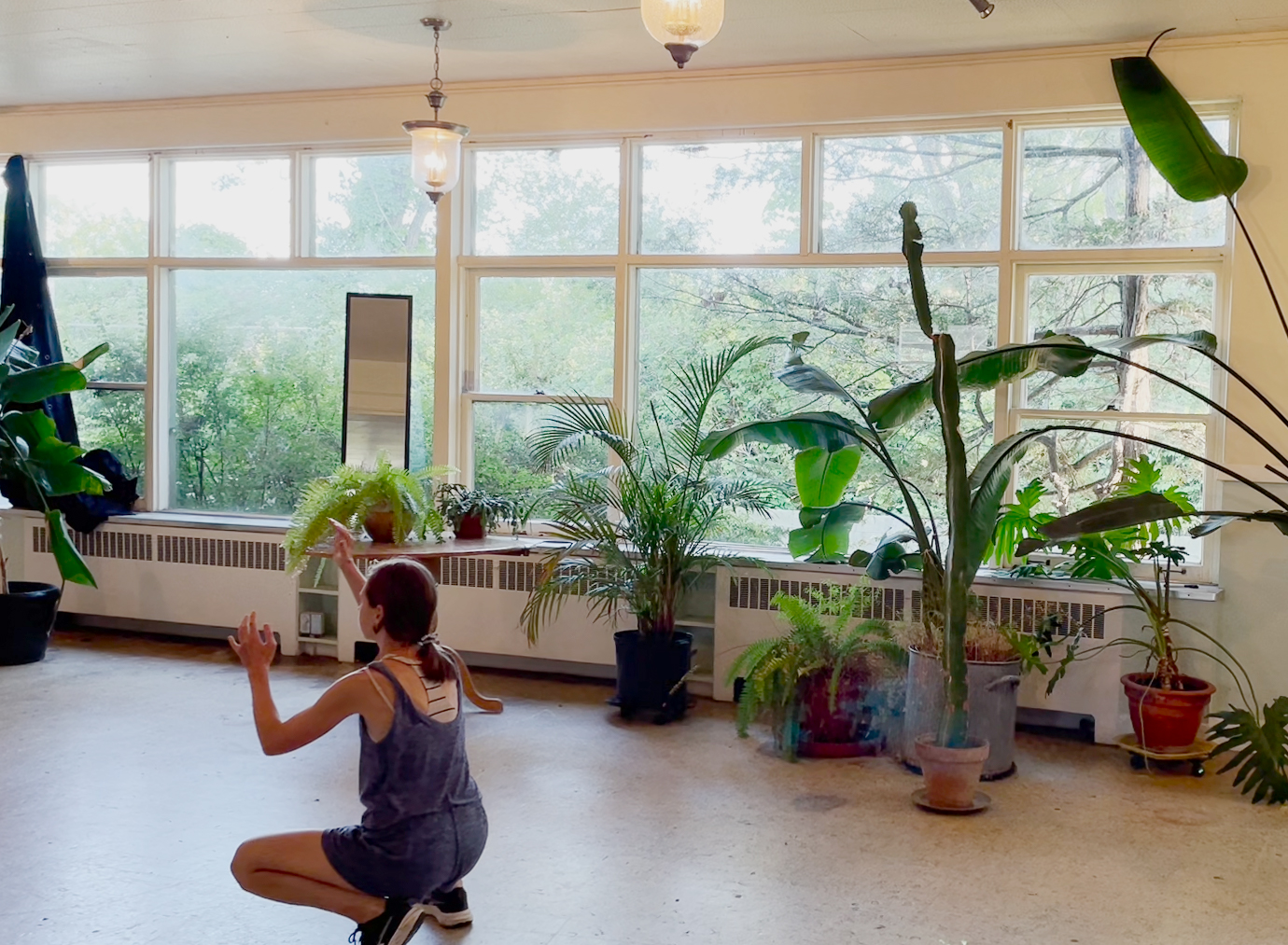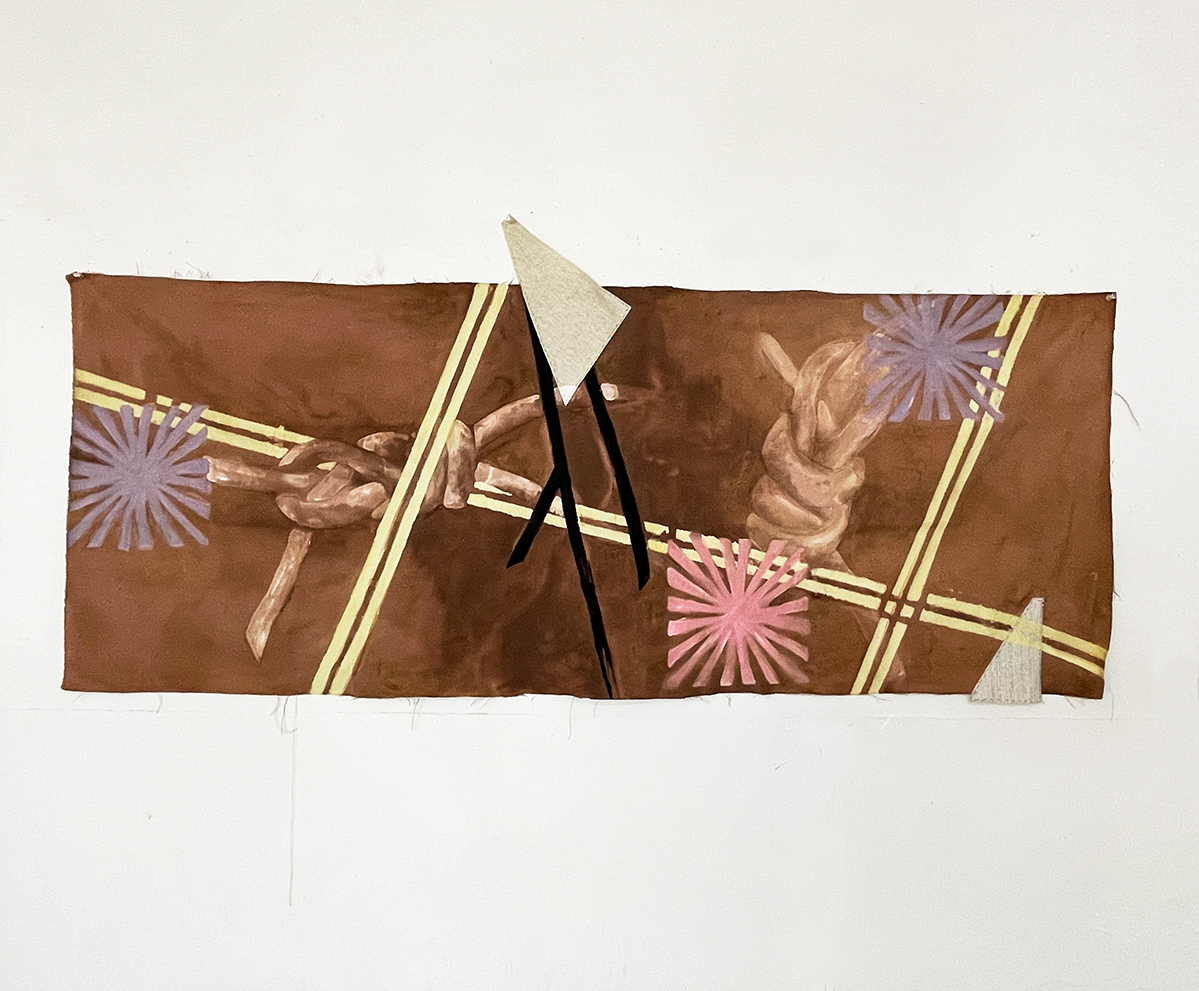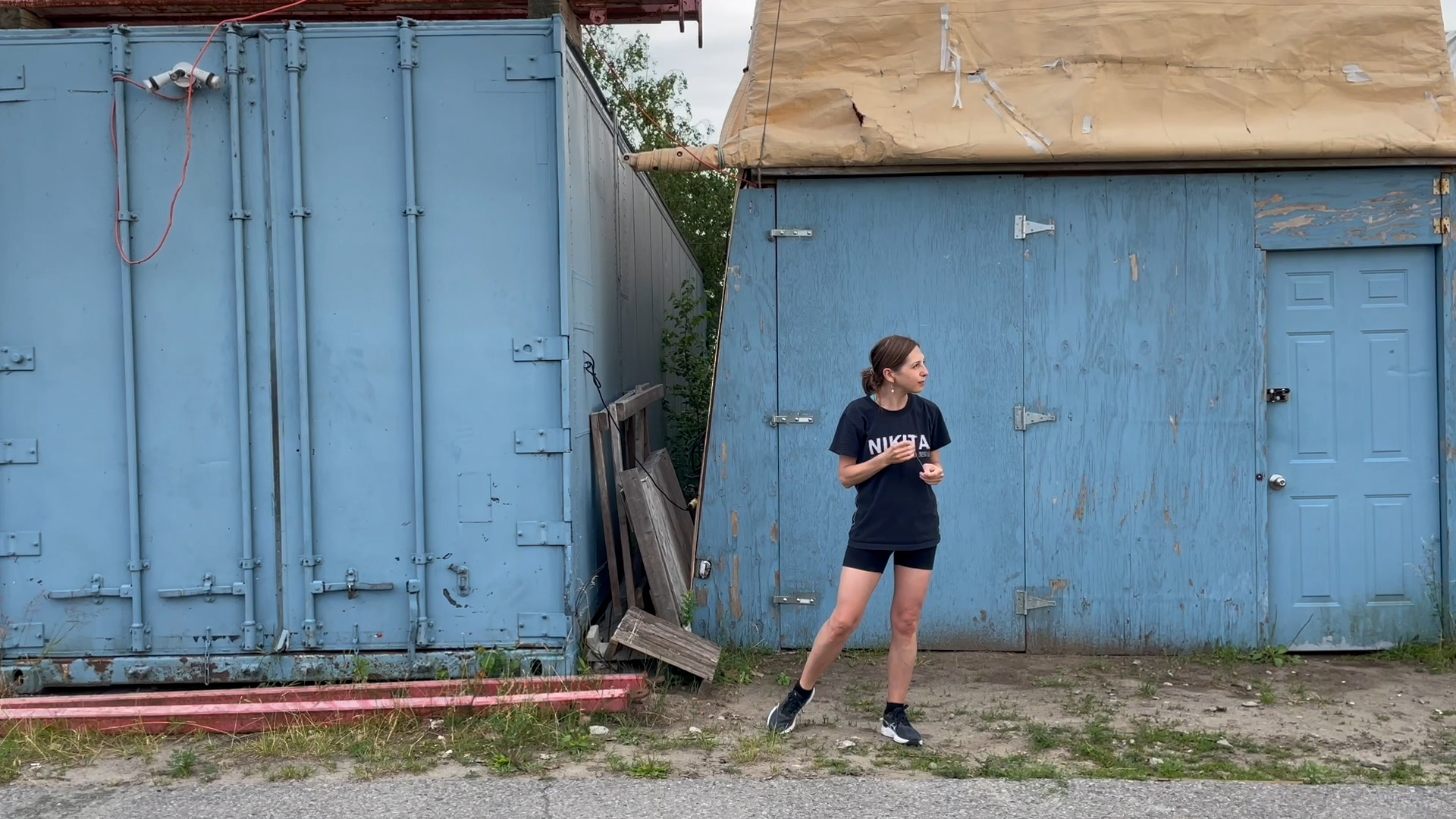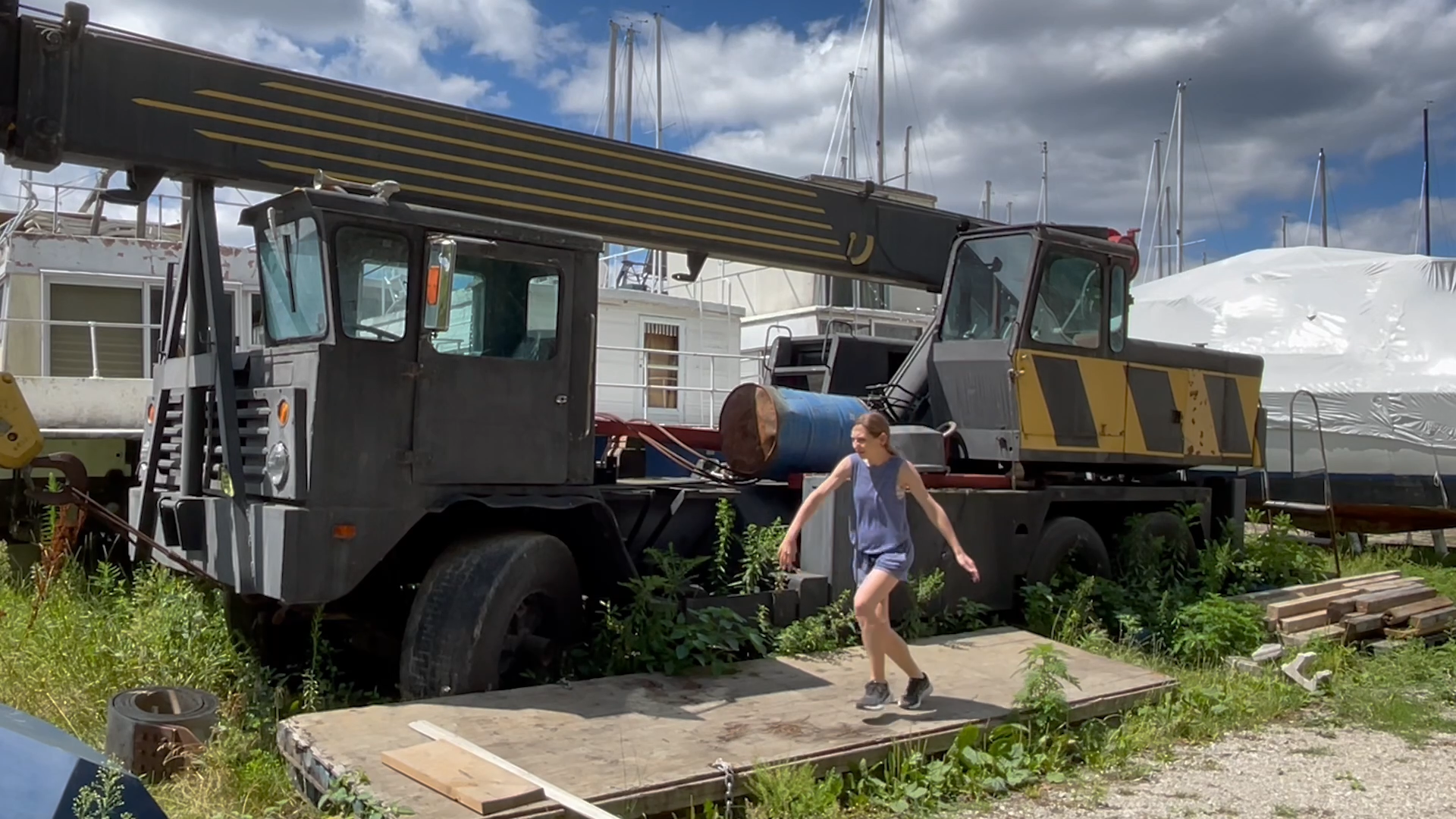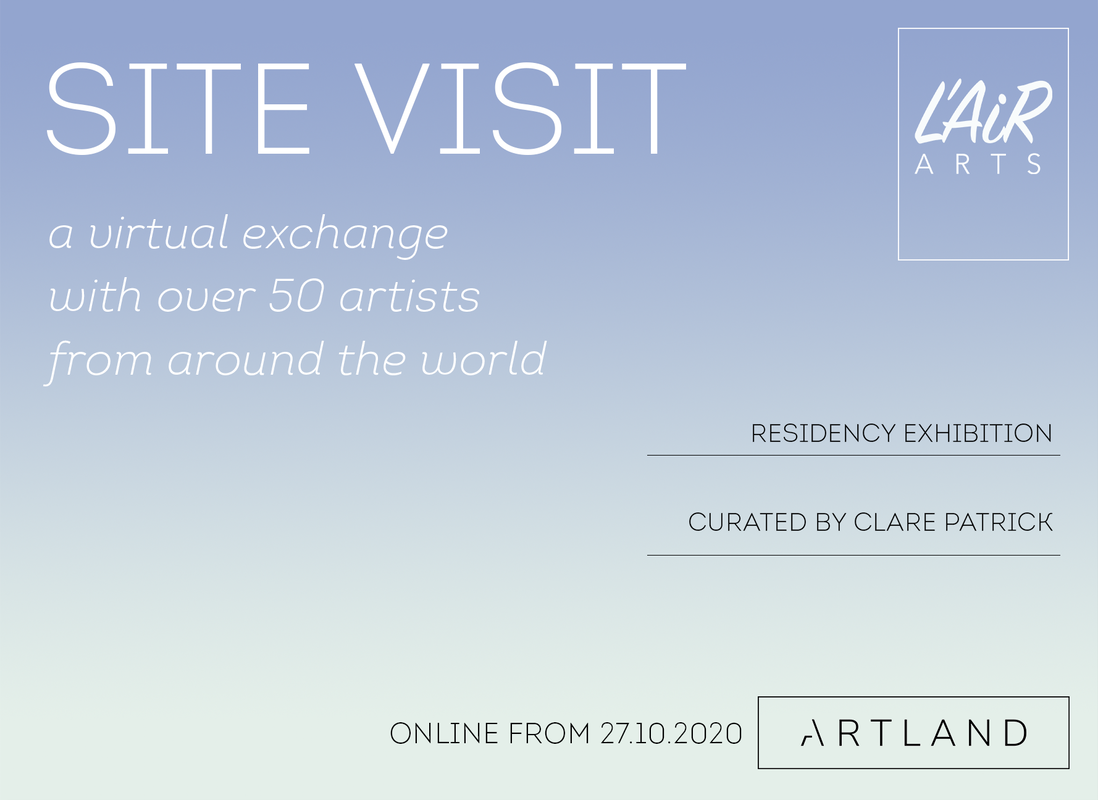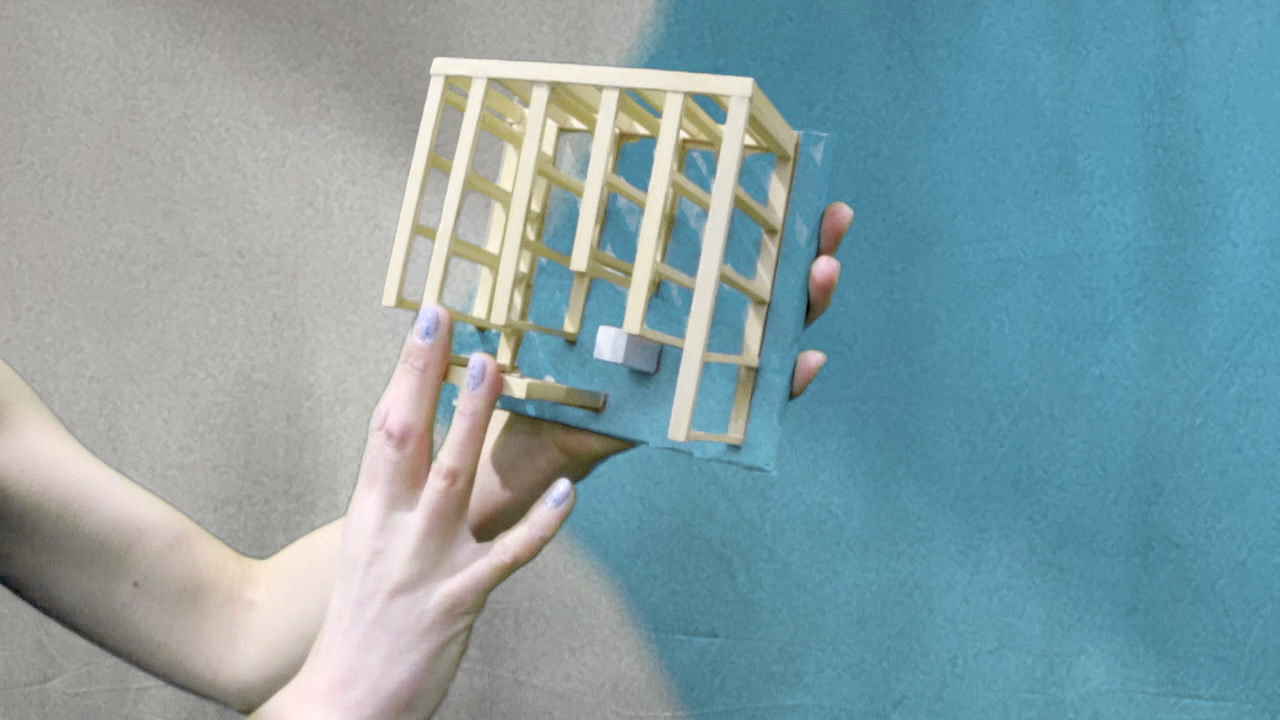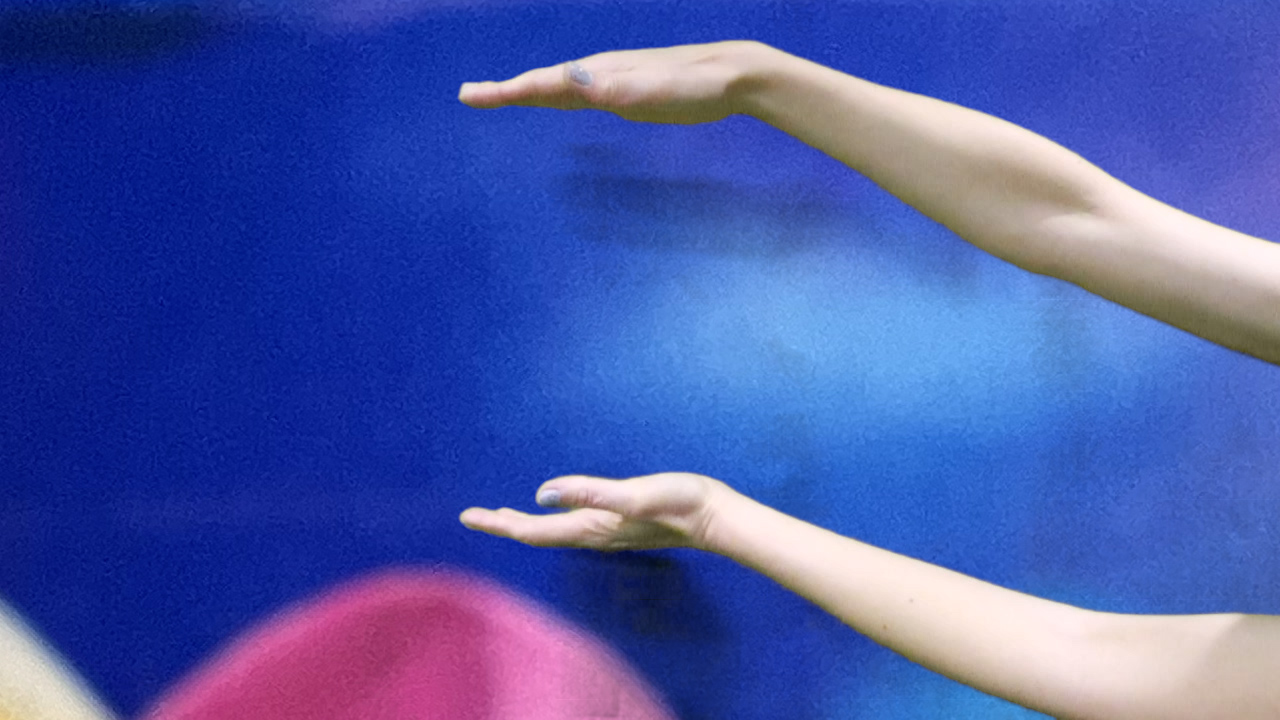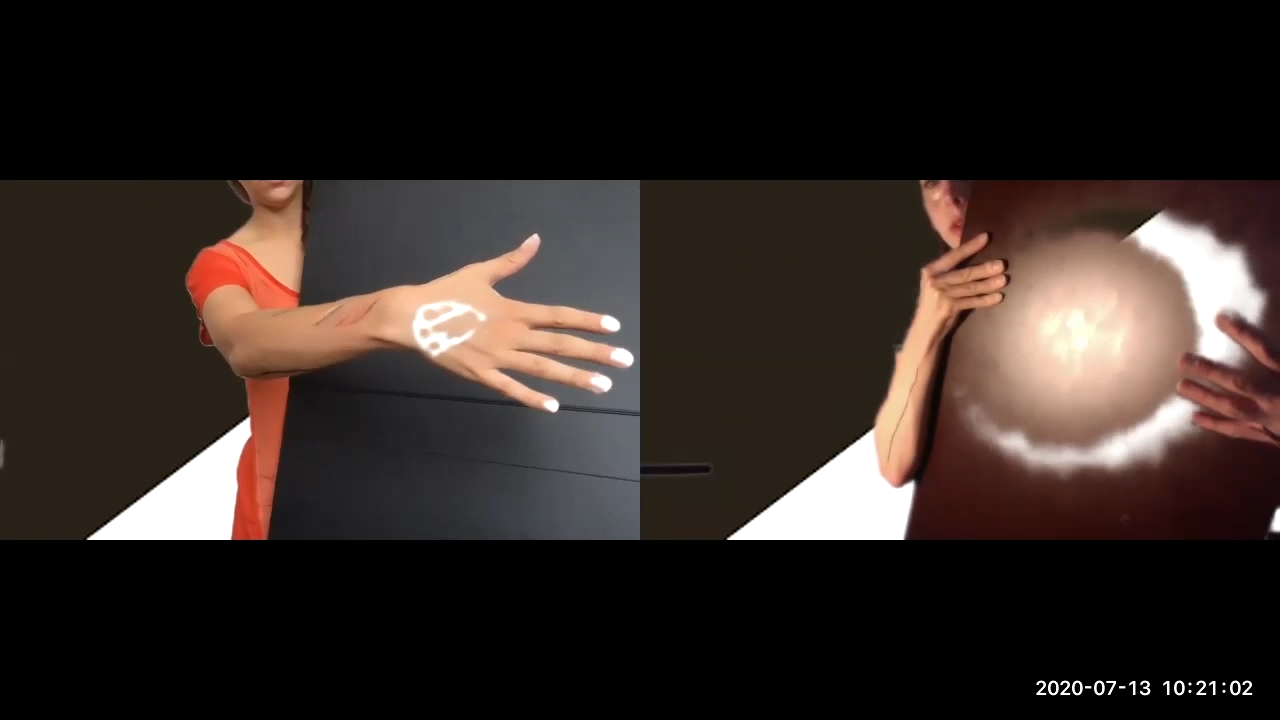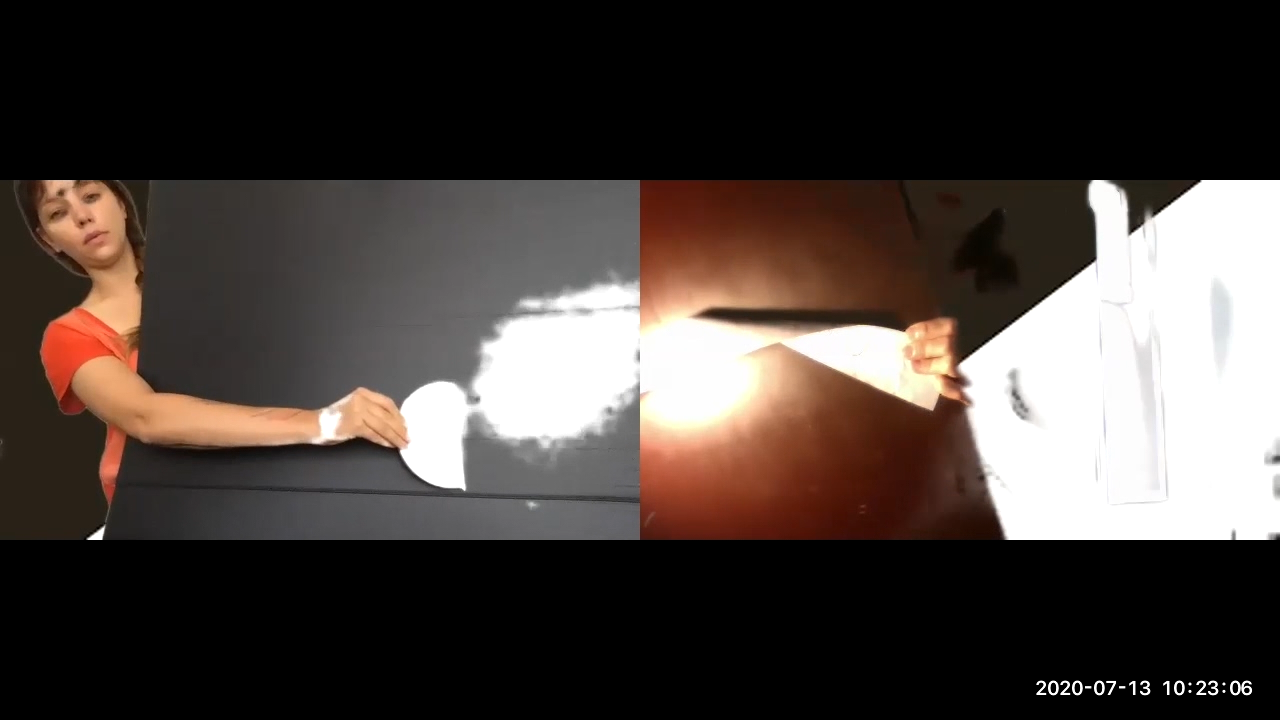Piece and Parse
226 Main, February 28 – March 9, 2025
Grace Han, Nicole Shimonek, and M.E. Sparks
Exhibition essay at bottom of page
The artworks in Piece and Parse embody a liminal space, they seek to make sense of their subject matter, as well as bring peace to uncertainty. All three artists have brought the act of dismantling into their practice, they’ve taken apart narrative structures to examine fragments as individuals. Through building upon and reconstructing these fragments, stories are revealed in the rubble. From the documentation of construction sites and empty homes to the collaging and patching of our cultural history, the works exist in the in between. They don’t aim to force classification on that which resists it, but confront contradictions and navigate the ambiguous nature of identity and belonging.
— Lindsay Inglis
photographer: Sarah Fuller
Artists:
Grace Han: Fragments (White 3), porcelain; Fragments (Black and Yellow), porcelain, luster; Fragements (Green and Red), porcelain; 2024 & 2025
M.E. Sparks: Draped Composition (in progress); 2025
Nicole Shimonek: Barrier Fencing, welded and blued steel; Property Subdivide 2 & 3, Malcolm Island, sublimation print on
broadcloth; Tallgrass Lane, video; 2025
226 Main, February 28 – March 9, 2025
Grace Han, Nicole Shimonek, and M.E. Sparks
Exhibition essay at bottom of page
The artworks in Piece and Parse embody a liminal space, they seek to make sense of their subject matter, as well as bring peace to uncertainty. All three artists have brought the act of dismantling into their practice, they’ve taken apart narrative structures to examine fragments as individuals. Through building upon and reconstructing these fragments, stories are revealed in the rubble. From the documentation of construction sites and empty homes to the collaging and patching of our cultural history, the works exist in the in between. They don’t aim to force classification on that which resists it, but confront contradictions and navigate the ambiguous nature of identity and belonging.
— Lindsay Inglis
photographer: Sarah Fuller
Artists:
Grace Han: Fragments (White 3), porcelain; Fragments (Black and Yellow), porcelain, luster; Fragements (Green and Red), porcelain; 2024 & 2025
M.E. Sparks: Draped Composition (in progress); 2025
Nicole Shimonek: Barrier Fencing, welded and blued steel; Property Subdivide 2 & 3, Malcolm Island, sublimation print on
broadcloth; Tallgrass Lane, video; 2025
| " |
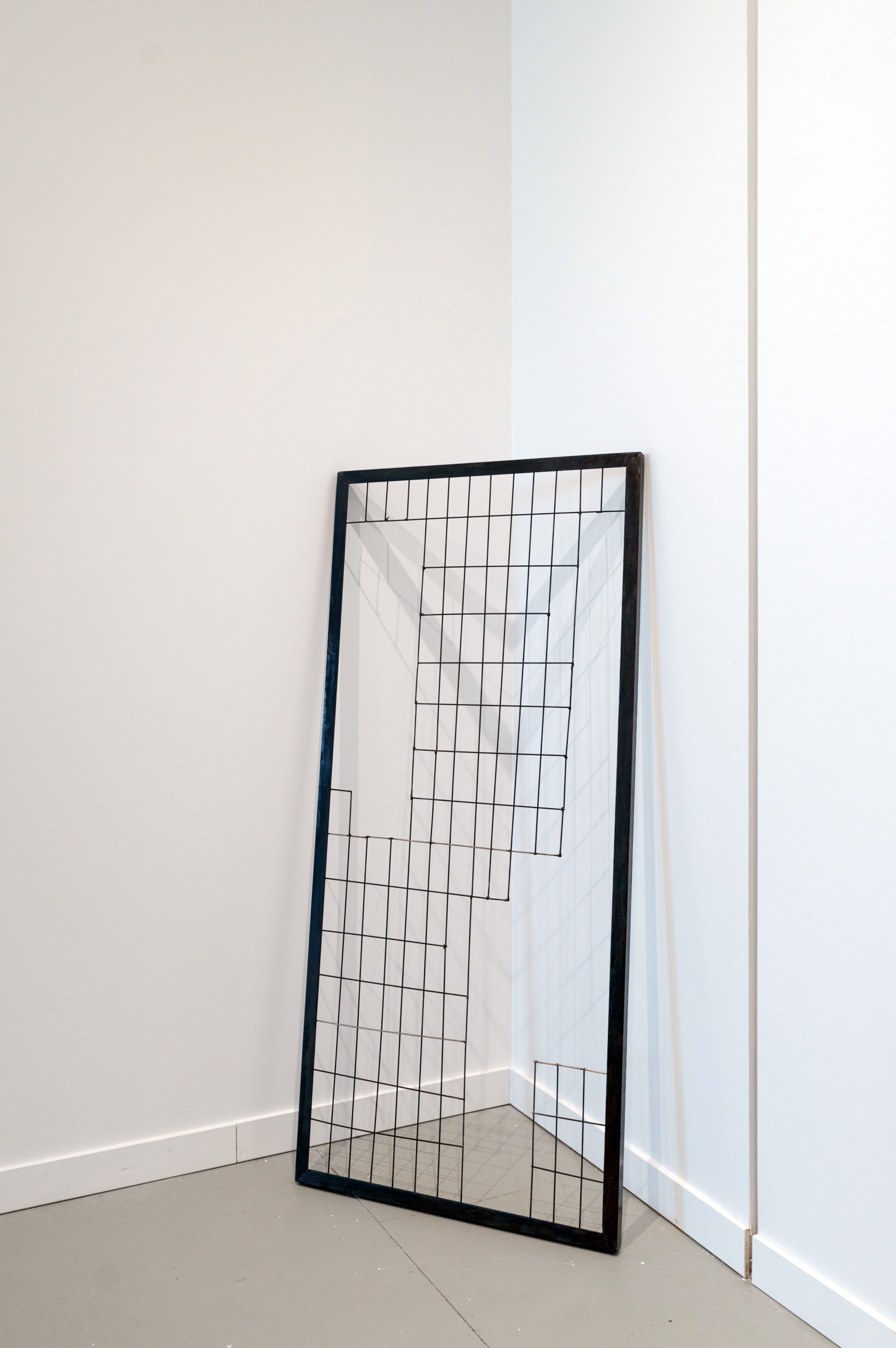
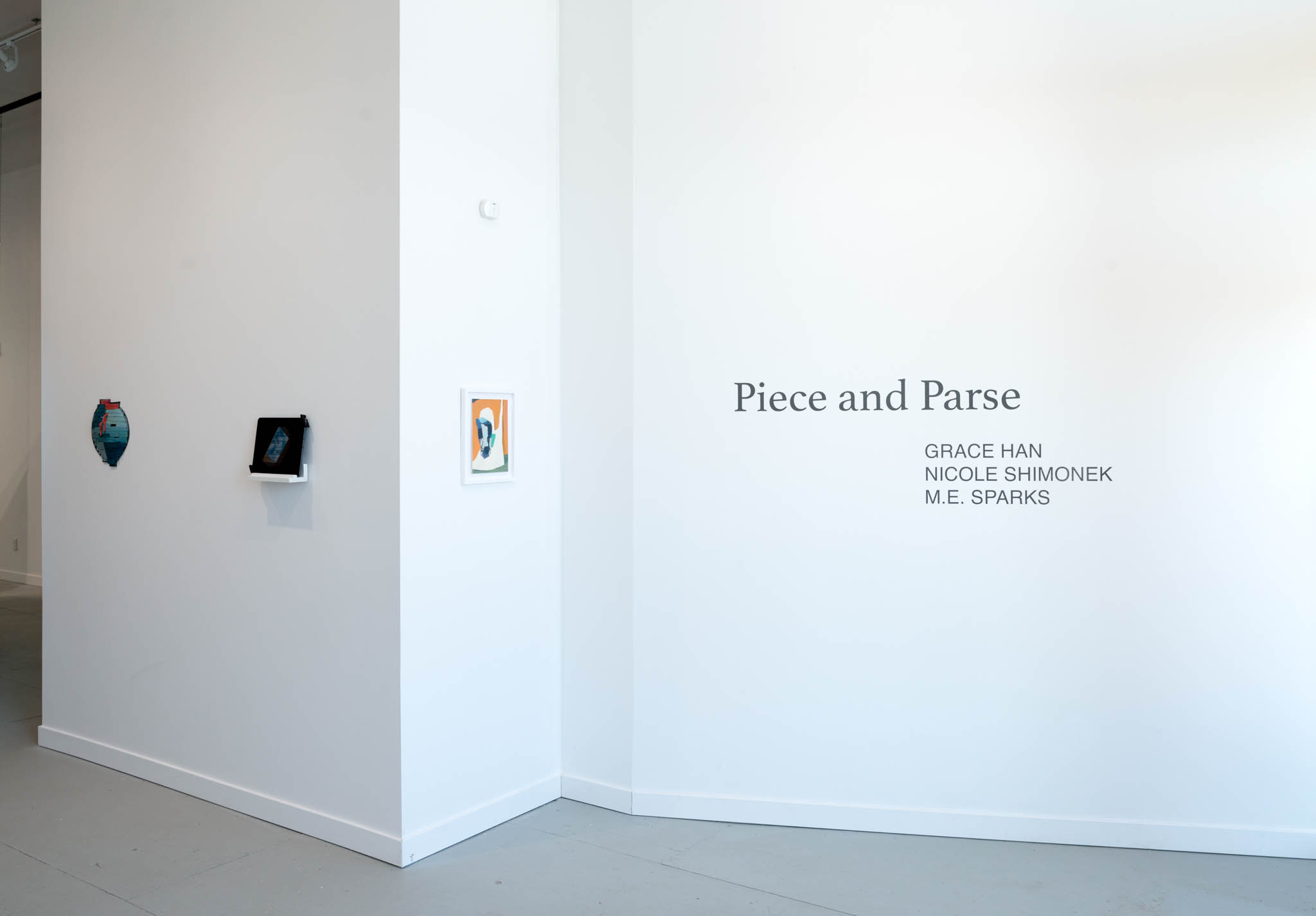
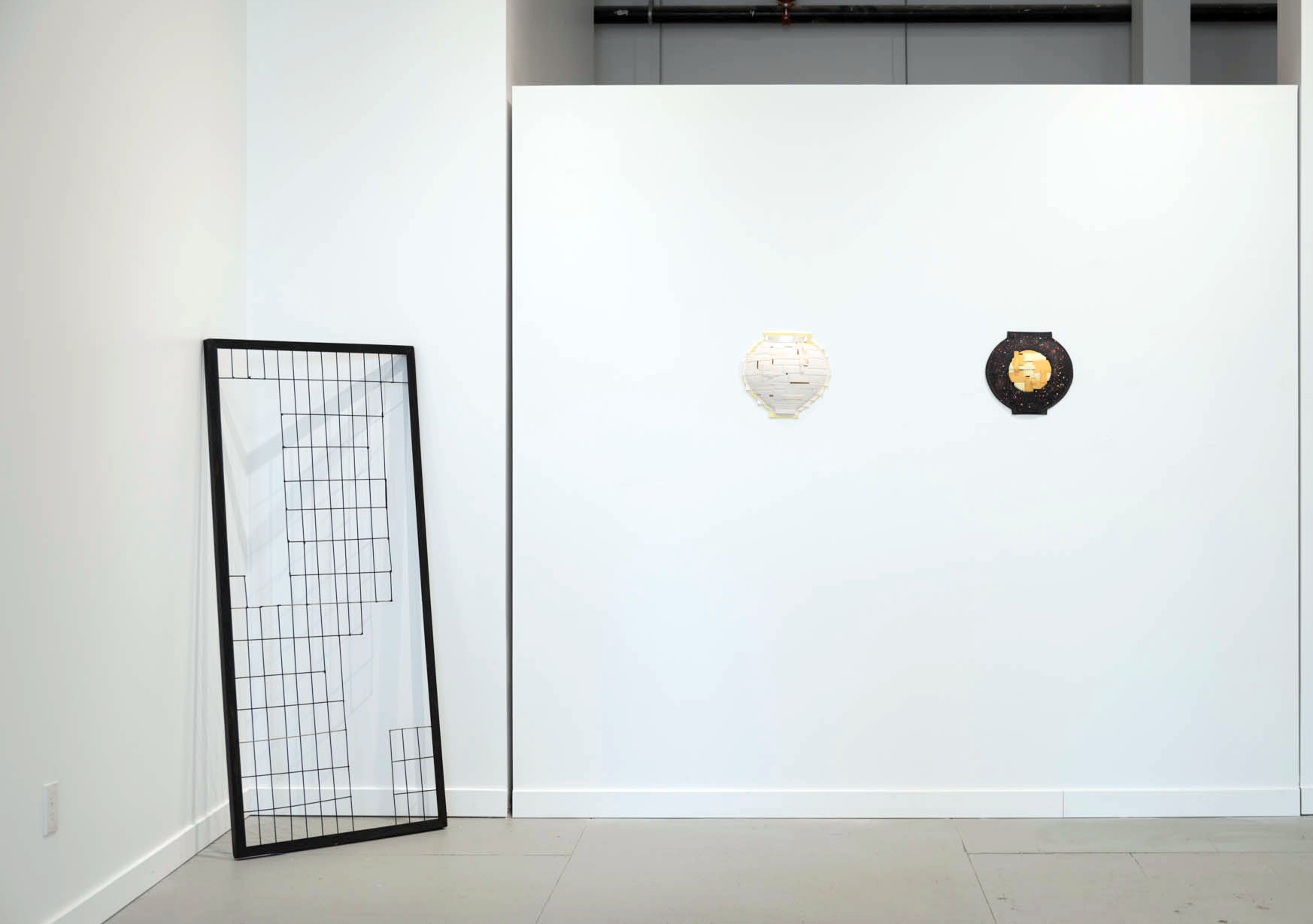
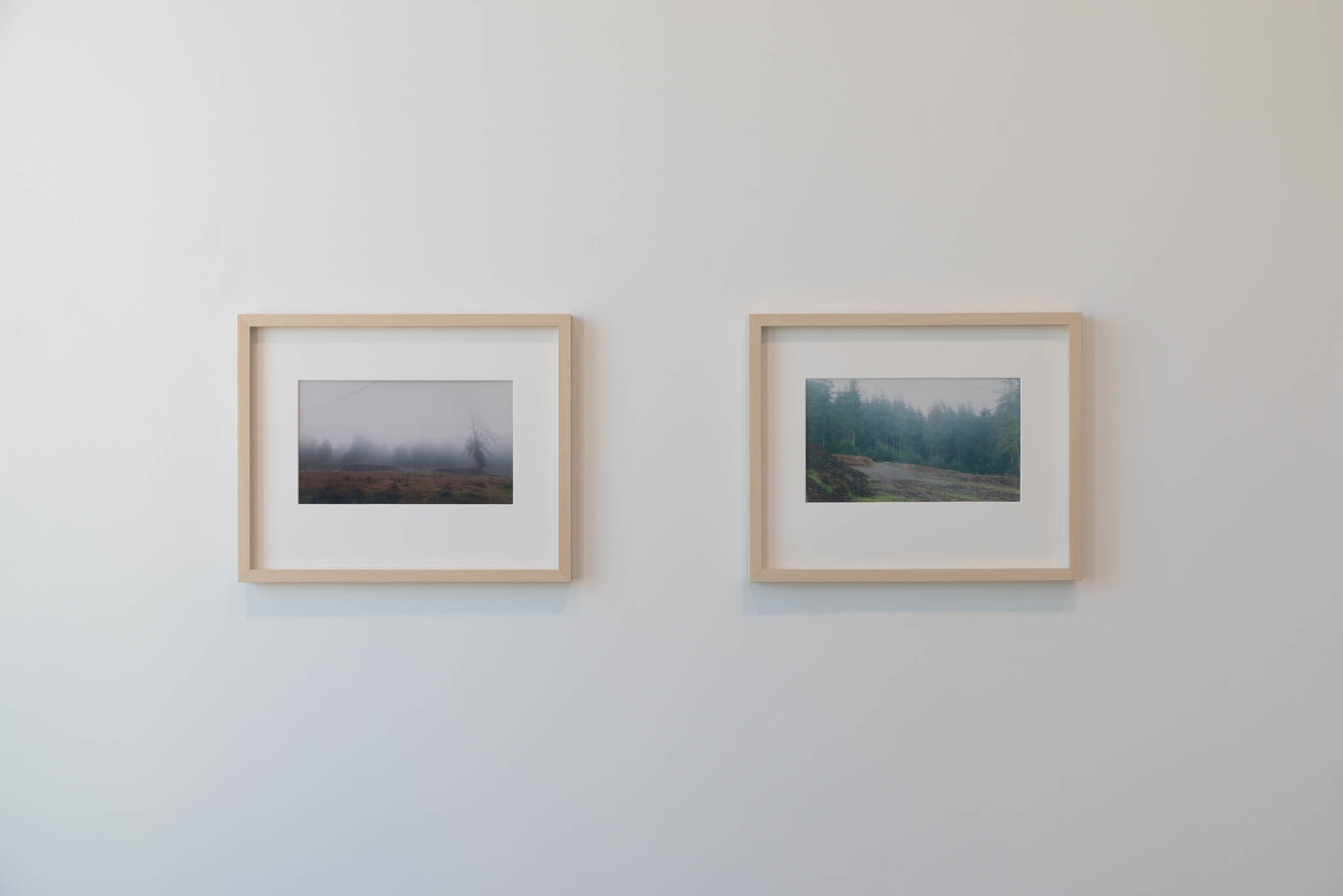
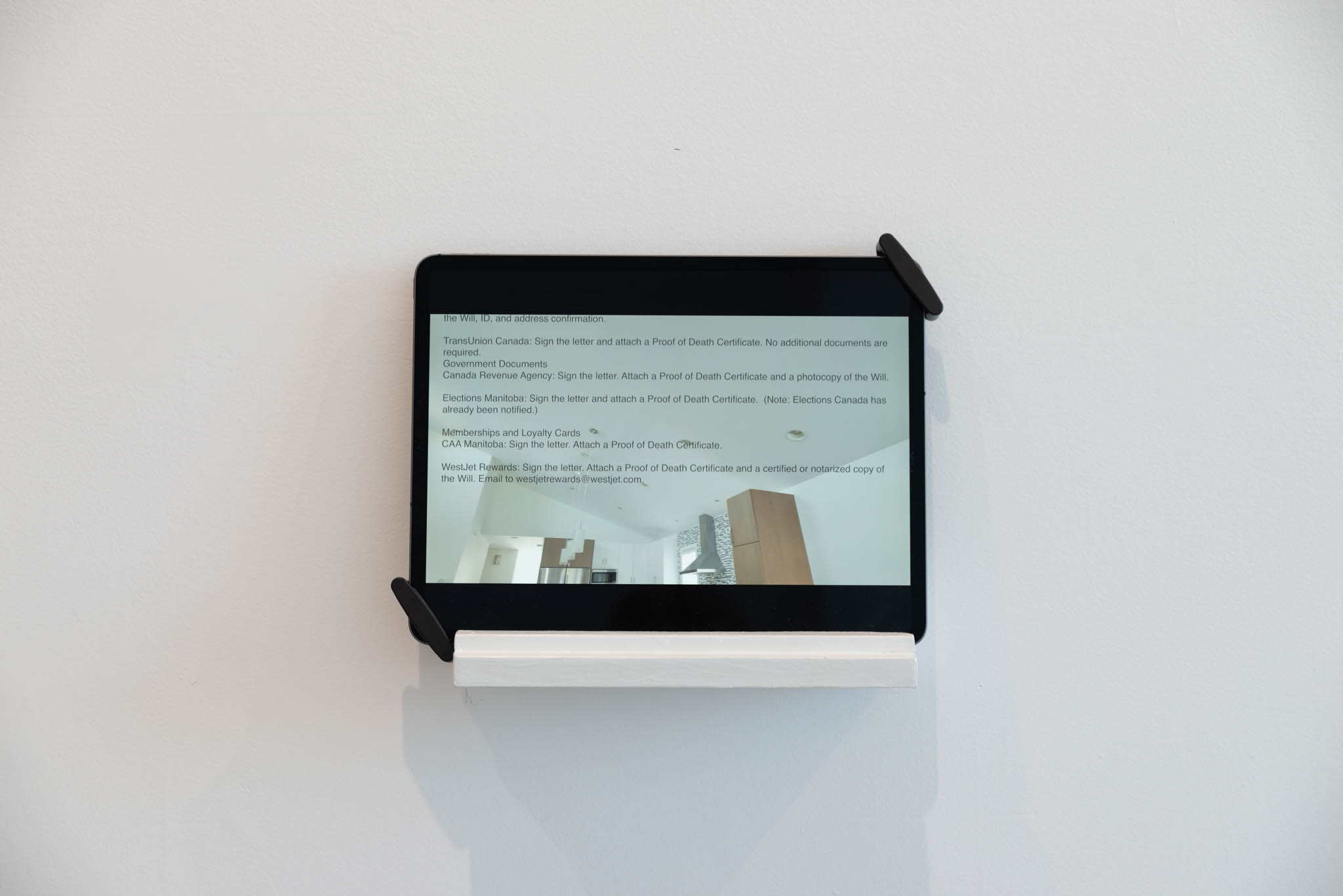
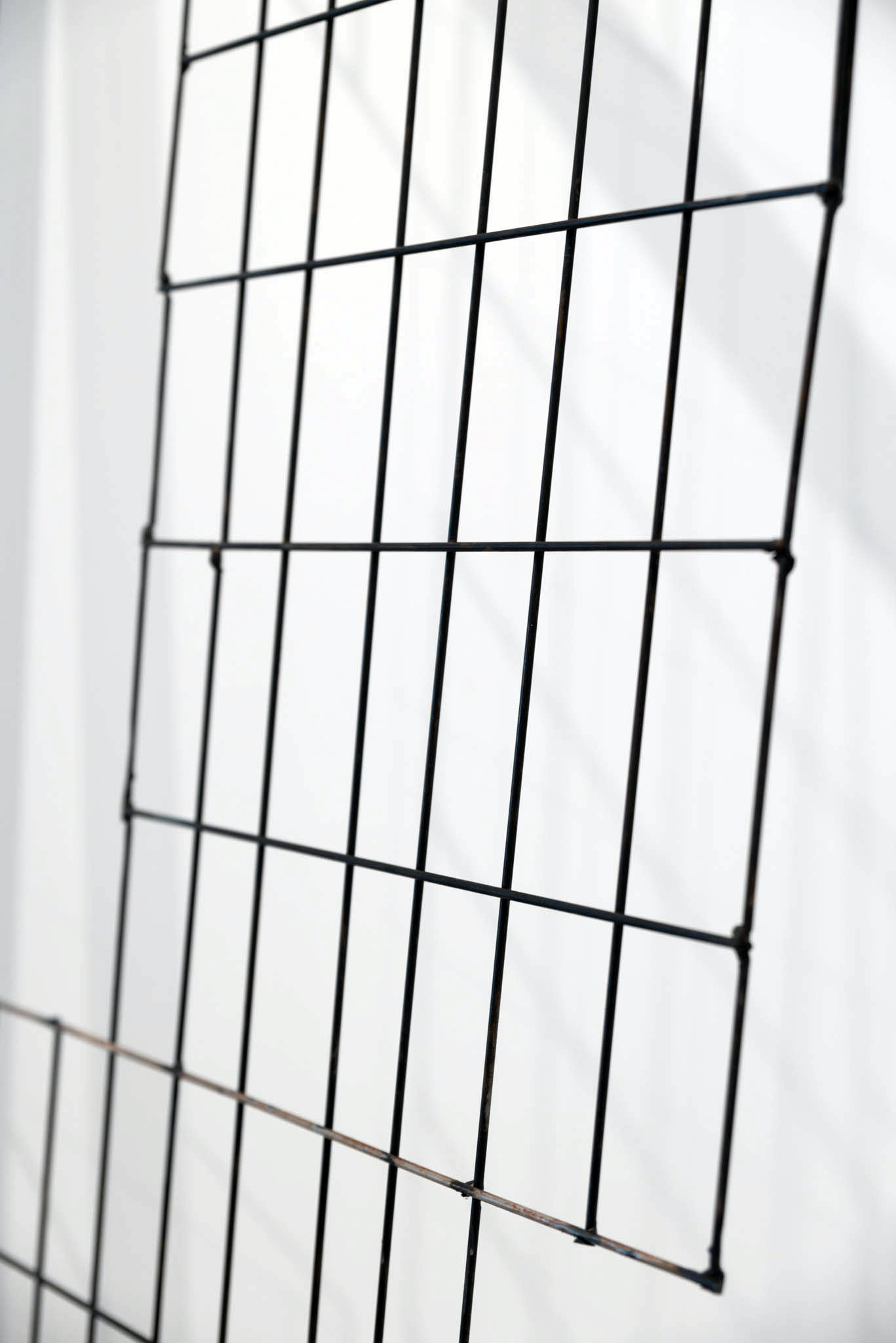
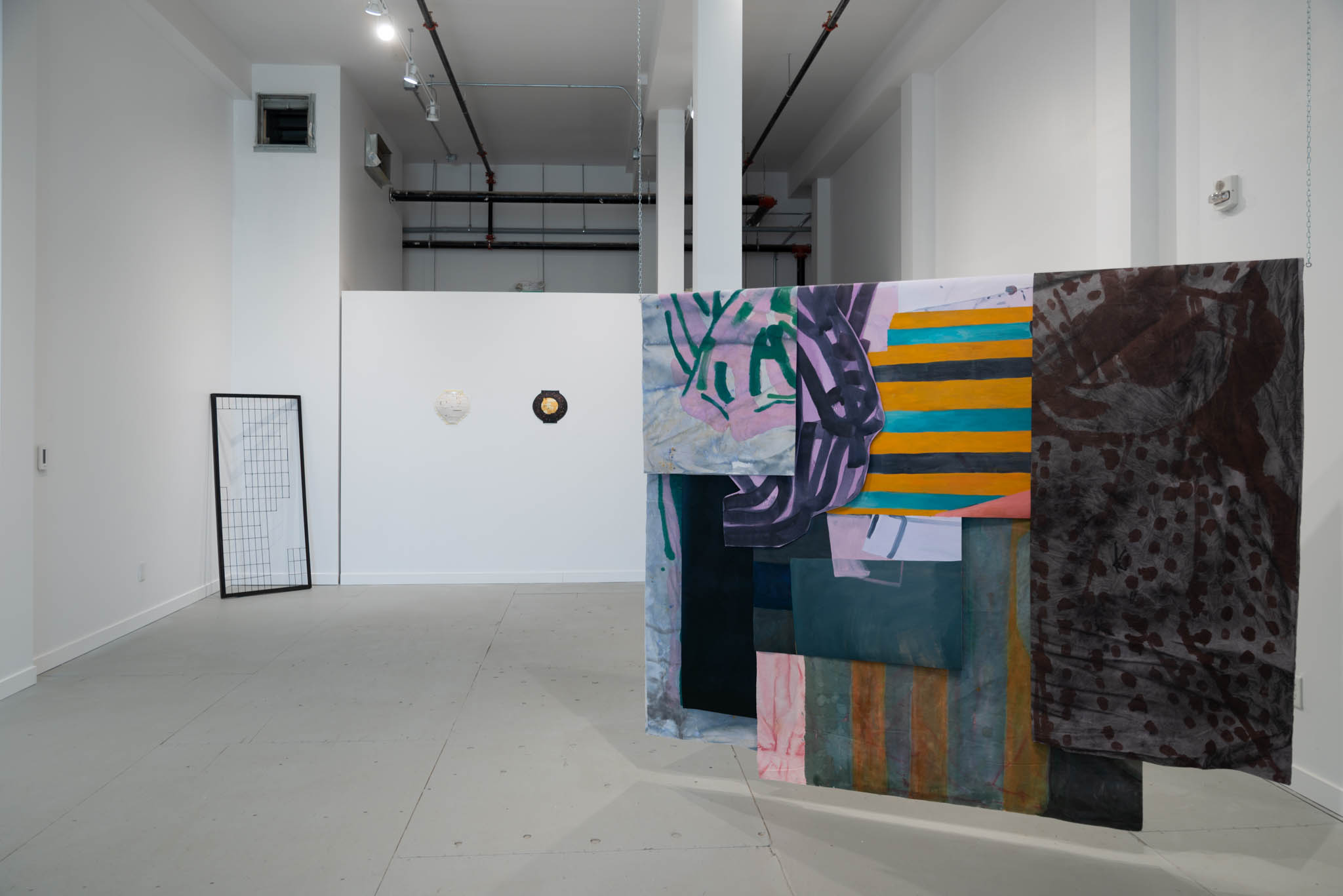

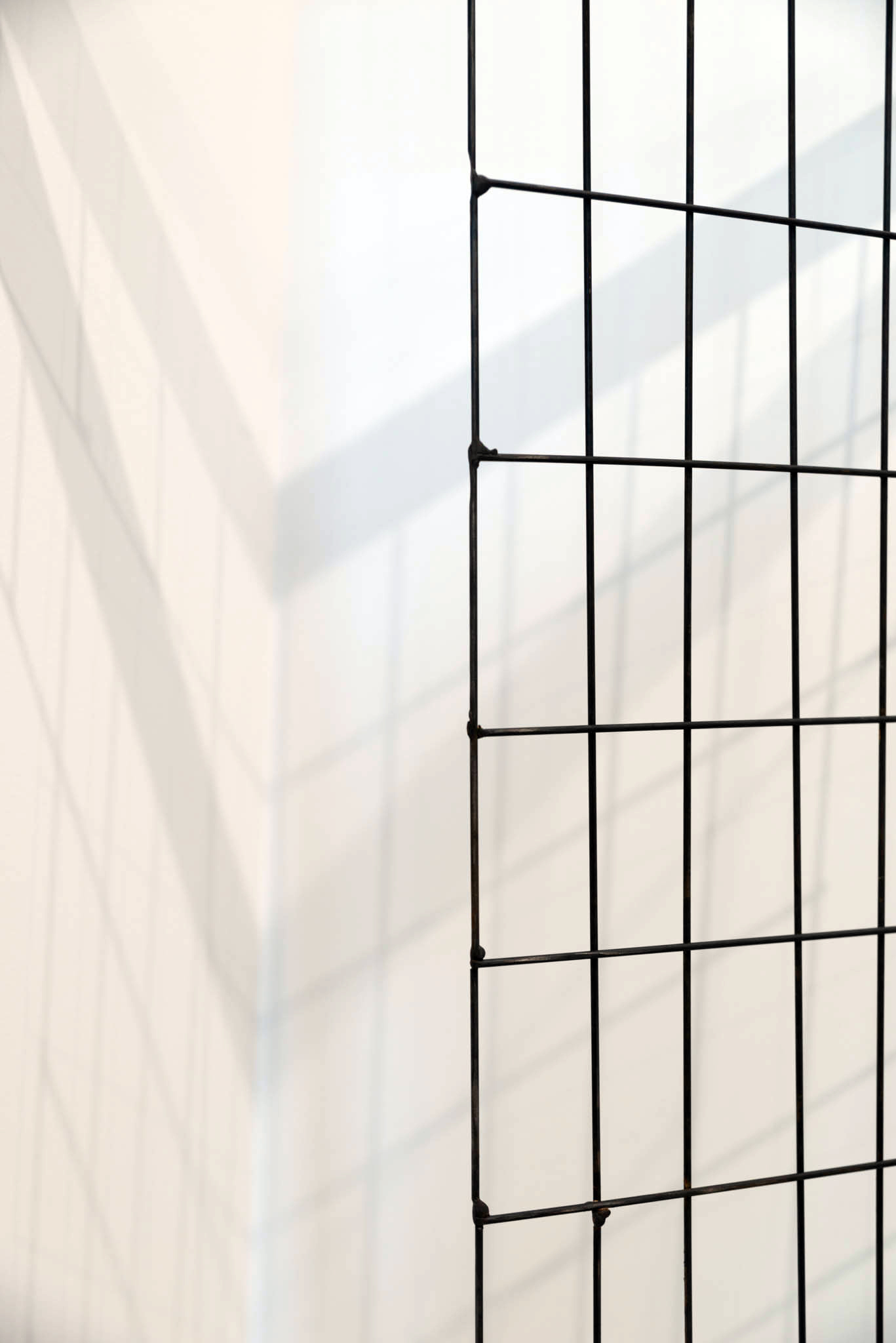
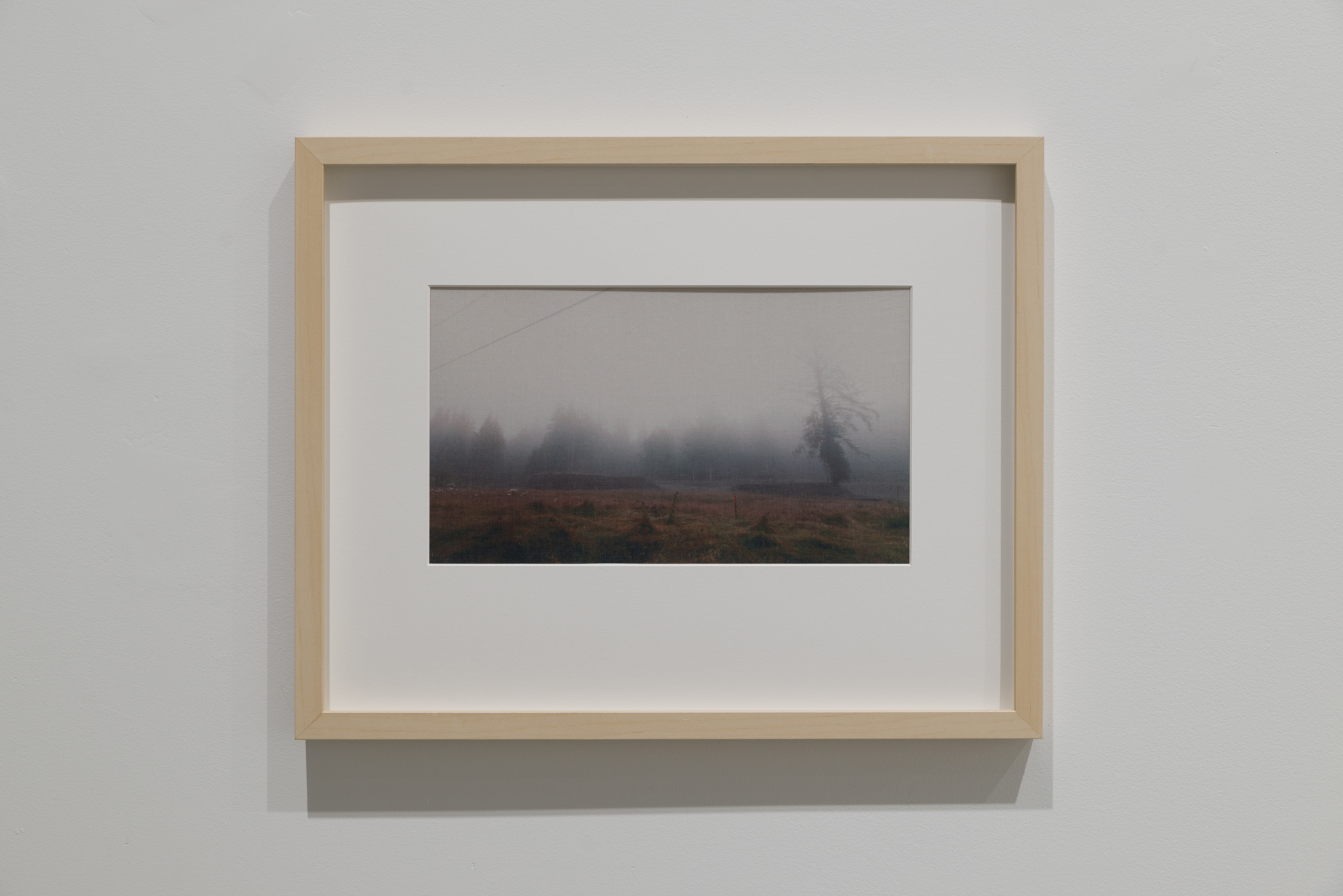
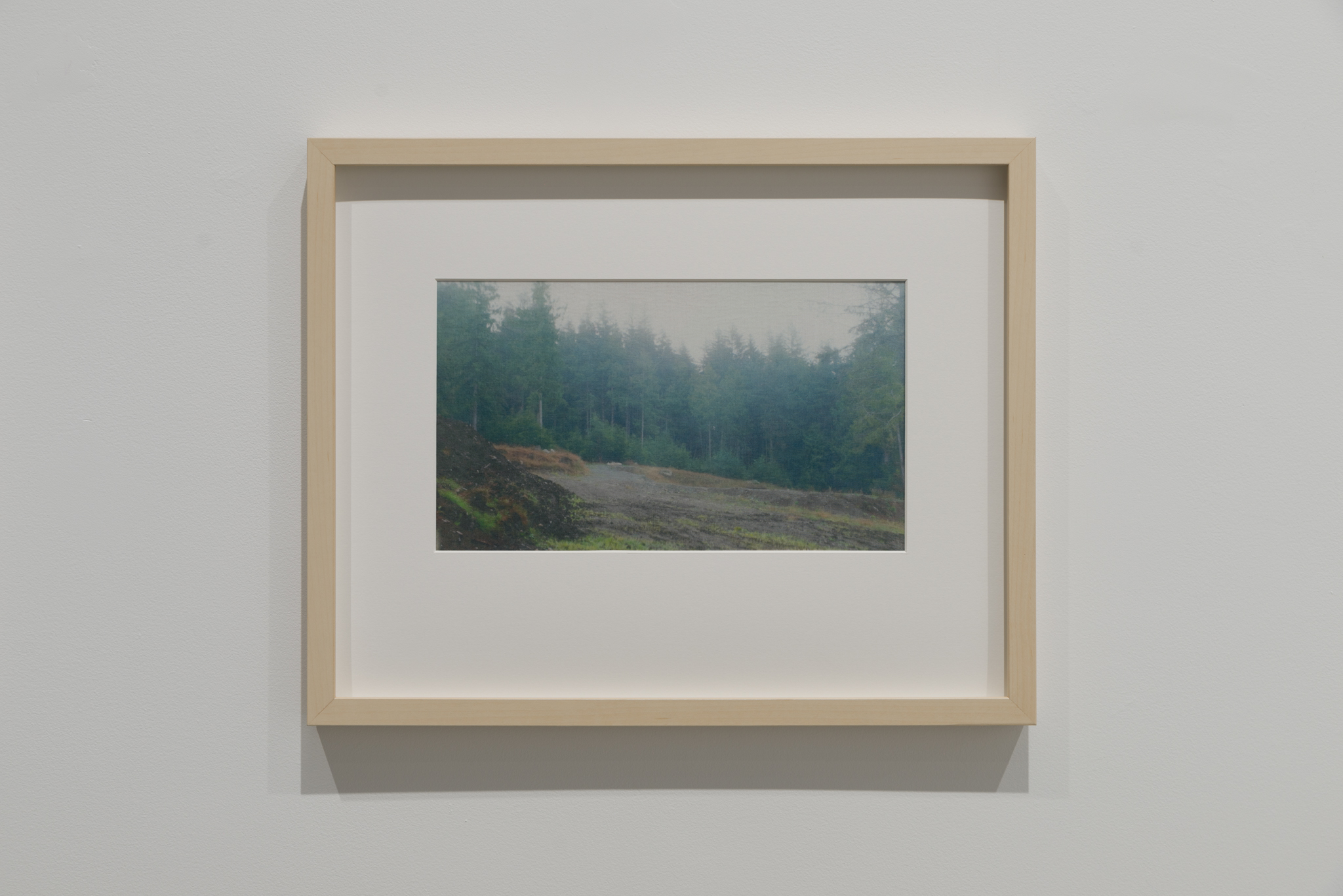
Liminal Gathering
Piece and Parse celebrates the unknown, not by trying to define it, but through its fragmentation. All three artists have brought the act of dismantling into their practice, taking apart narrative structures to examine the pieces individually. Through building upon and reconstructing these fra
gments, stories are revealed in the rubble.
While spending time on Malcolm Island in BC, Nicole Shimonek regularly visited an abandoned lot that was meant to be developed but got left behind amid zoning disputes. She spent time documenting the land and, aside from one encounter with an angry neighbor, only came into contact with the deer that had taken up residence.
Based in Winnipeg, Shimonek left for BC days after her mother’s funeral and returned to Winnipeg in time to say goodbye to her mother’s empty condo, after all her mother’s belongings were sorted through and packed away. Her mother’s health deteriorated suddenly and Shimonek decided to go ahead with her trip to BC as a way to process her grief. Spending time at the abandoned lot, she contemplated structures that signify residence, and how those structures are represented in times of transition. Shimonek created a metal grate reminiscent of boundaries on construction sites, placed to keep pedestrians out. The grate signifies a time of transition, hinting at a structure, but rather than offering shelter, its placement severs spaces.
Upon her return to Winnipeg, Shimonek filmed her mother’s empty condo. The footage is shown with emails from lawyers and estate agents layered on top of each other discussing the sale of the property. The overlapping text becomes incomprehensible, it’s too overwhelming to take in let alone read every word, just as it was for Shimonek to receive these messages shortly after her mother’s passing. Nearby, her photographs of the BC property create a moment of respite for viewers, while seeped in bureaucracy, the land offers a peaceful environment in which to navigate uncertainty and change.
Transitions have long been the root of Grace Han’s practice. She moved to Canada from South Korea in 2011 and used her artwork to process the uprooting of her life and the subsequent contradicting identities. In Seoul, Han trained in traditional ceramics and began experimenting with the conceptual while establishing her practice in Winnipeg. Her work examines the act of being in between something or somewhere. While she initially saw this liminality as a negative and a lack of belonging, she’s grown to view the in between as a form of freedom.
Han has transitioned from traditional ceramics to creating patchwork vessels. By piecing fragments together to create a whole, Han is integrating the different aspects of her identity into one form. Seemingly stitched together, these porcelain patches leave gaps throughout the vessel as though leaving room for the vessel to change over time with additional patching. She’s embraced the in between nature of her existence and is creating vessels that honour her identity, piecing contradictions together, but leaving room to breathe.
M.E. Sparks explores disorientation in her work, her collage paintings are at the cusp of legibility, but she’s not aiming to give the viewer an understandable image. She cuts out segments of her paintings and overlaps them on a hanging dowel. Her stretched paintings mimic the collage of the cut outs, only the layers don’t add up. The foreground and background are often intertwined, inviting confusion without resolution. Just as Han has found freedom in contradictions and the in between, Sparks celebrates that which resists definition.
She’s currently working on a video work that emphasizes the motion and changeability of her hanging works. She began the work in a residency this winter in Vermont and will continue working on it at the gallery during the run of Piece and Parse. At several points throughout the exhibition, while the gallery is closed to the public, Sparks will come in and film the work as she changes its composition. Her hanging works are already freed from their stretchers, Work in Progress is now freed from the arbitrary stamp of completion, it’s a living work that will continue to evolve throughout the exhibition. Like the land in Shimonek’s photographs, gallery visitors are seeing a site that’s not yet resolved.
Sparks further explores disorientation through in_your_painting, a hand-coded computer program that uses titles from Balthus’ paintings to generate phrases that change every time. These phrases create poetic stanzas that are visual yet don’t add up to a clear image. Phrases such as “_in your closet I searched for the liquid mirror / _in your drawer I took your arms / _and left the dandelion for later” hint at a complex story of which the viewer is only given a glimpse, allowing the viewer space to sit and accept the unknown, toexist between the comprehensible and the inconceivable.
Together, Shimonek, Han, and Sparks bring peace to uncertainty. Through taking up space in abandoned lots and slicing through clay and canvas, they’ve dismantled and reconstructed their surroundings, coming together in a gathering of liminality. - Lindsay Inglis

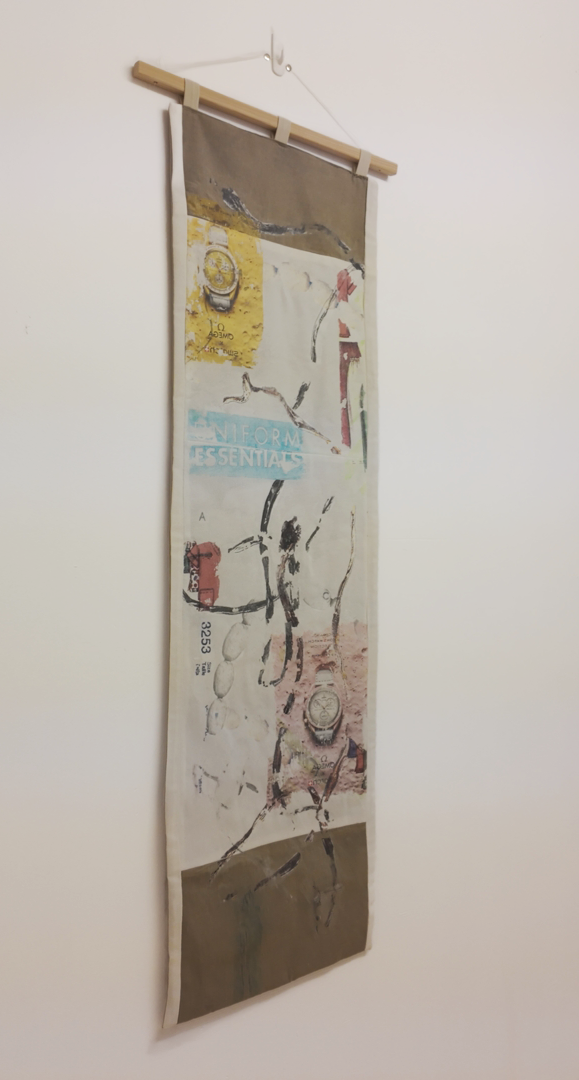
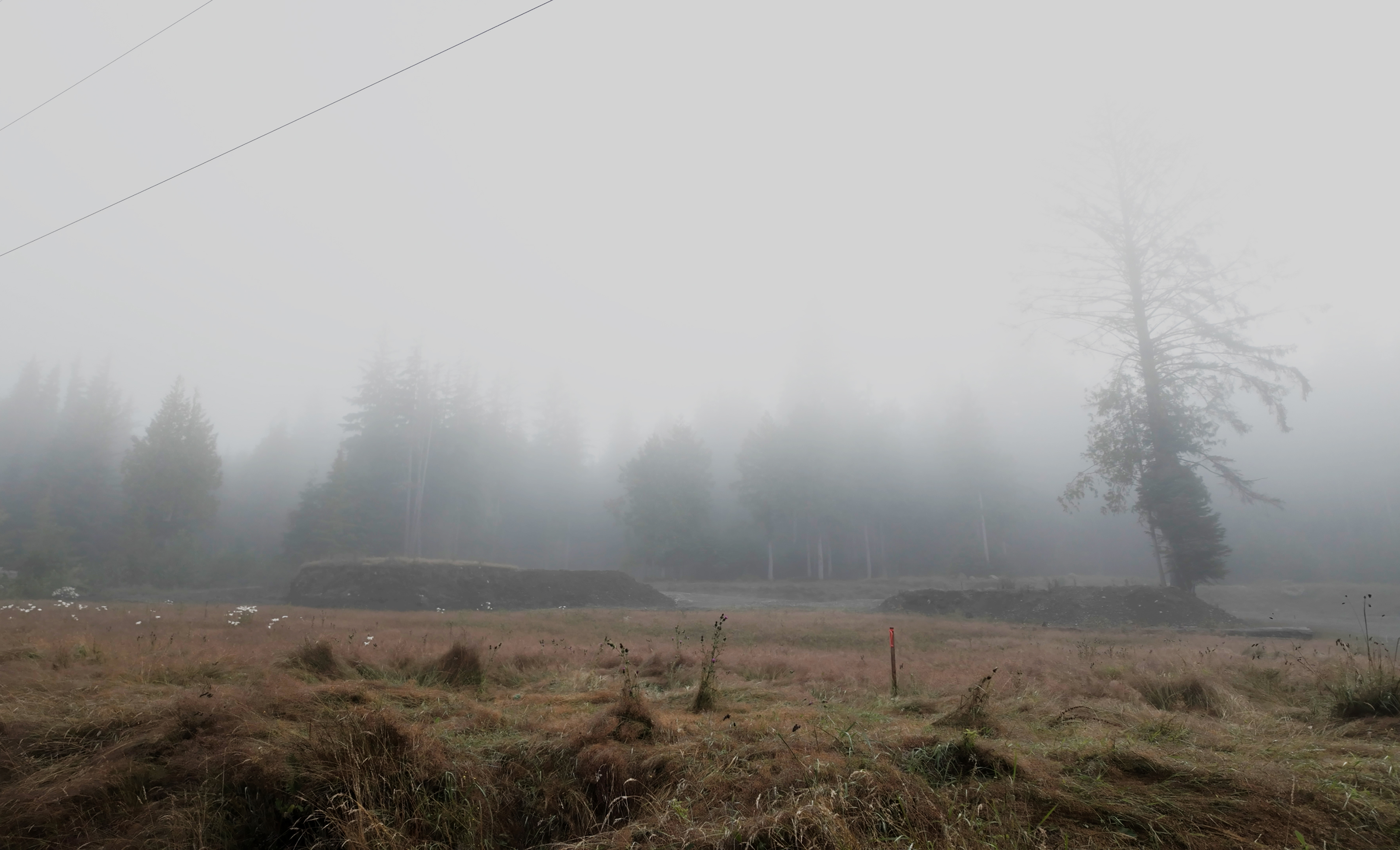

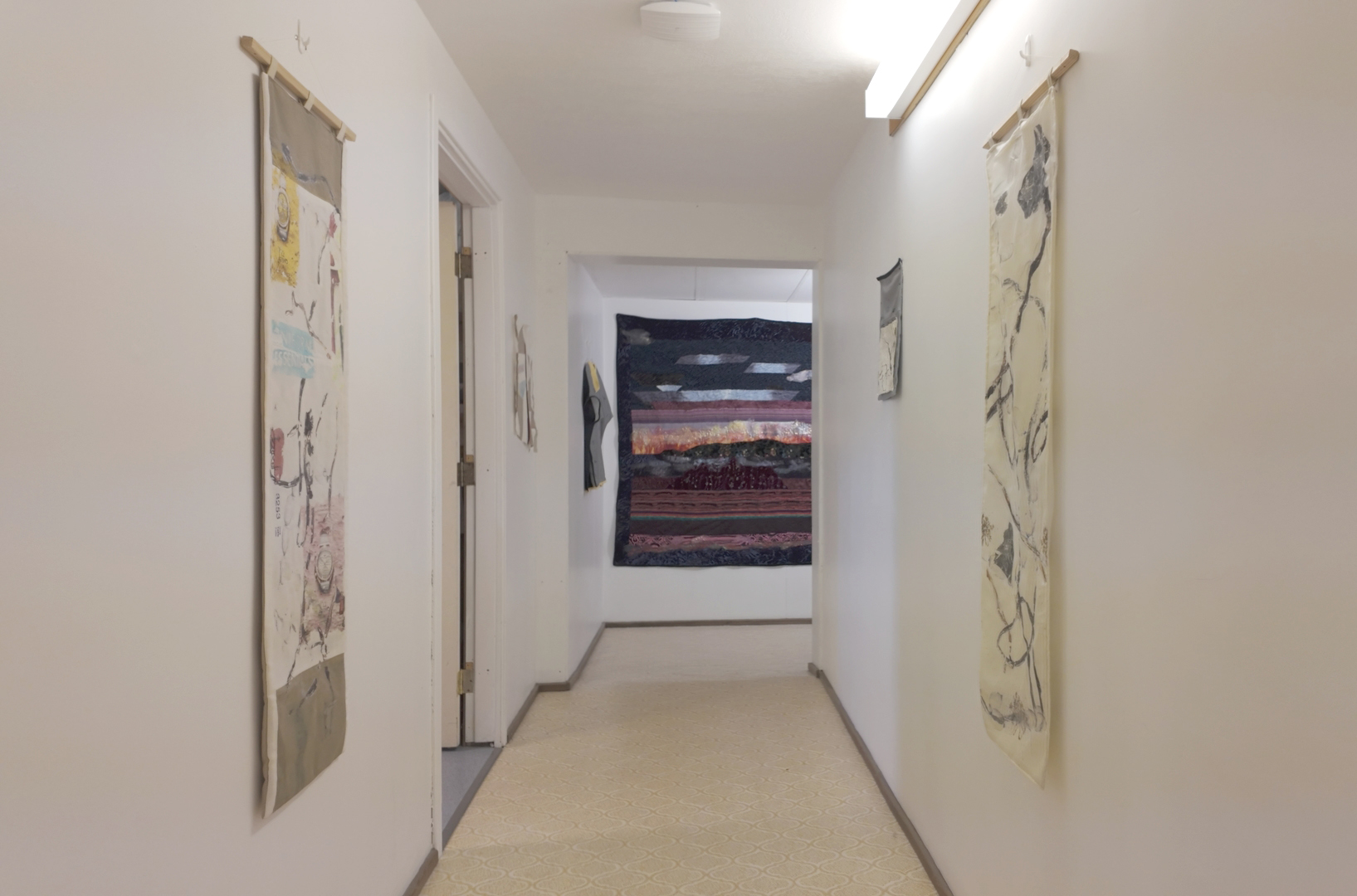
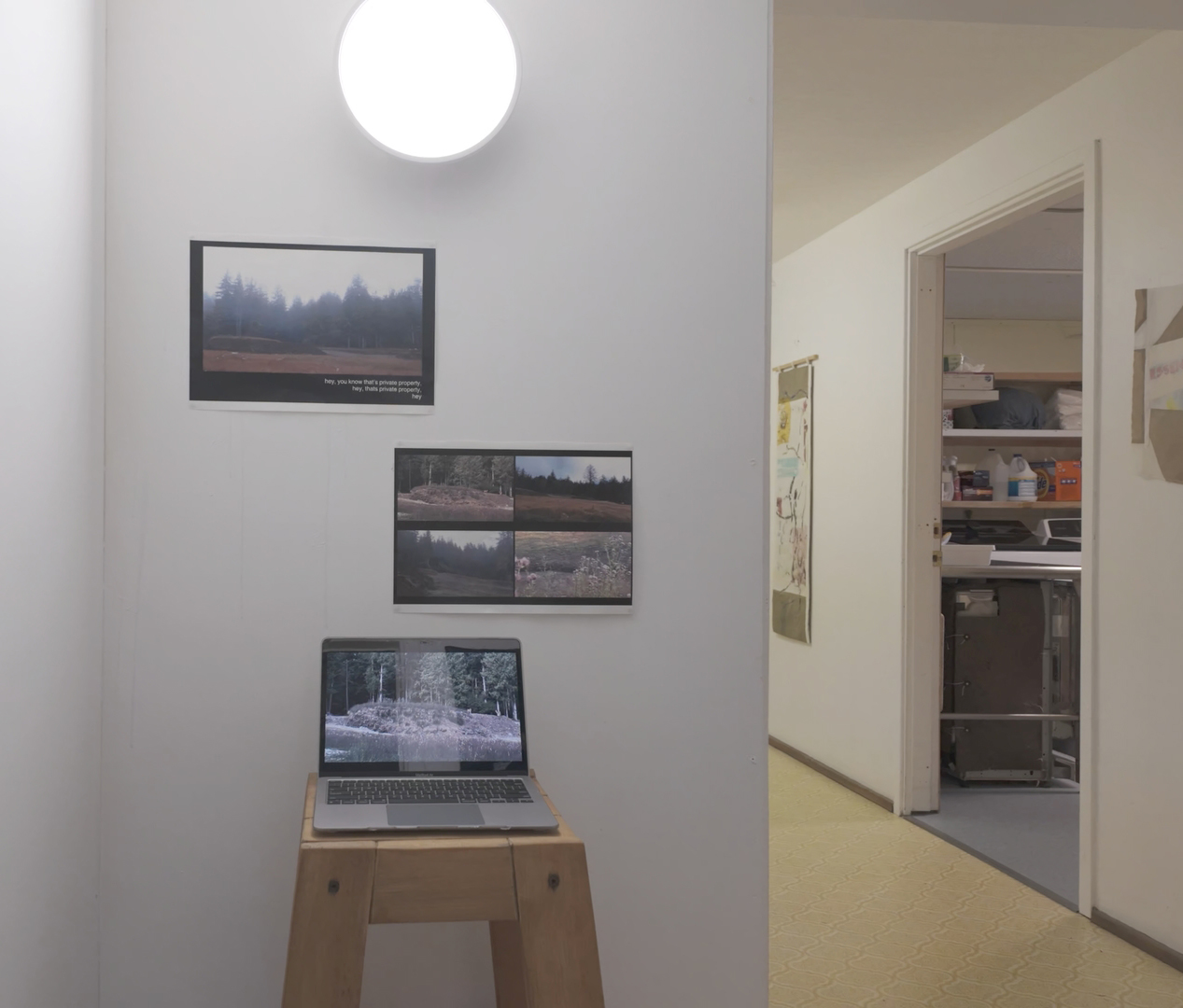
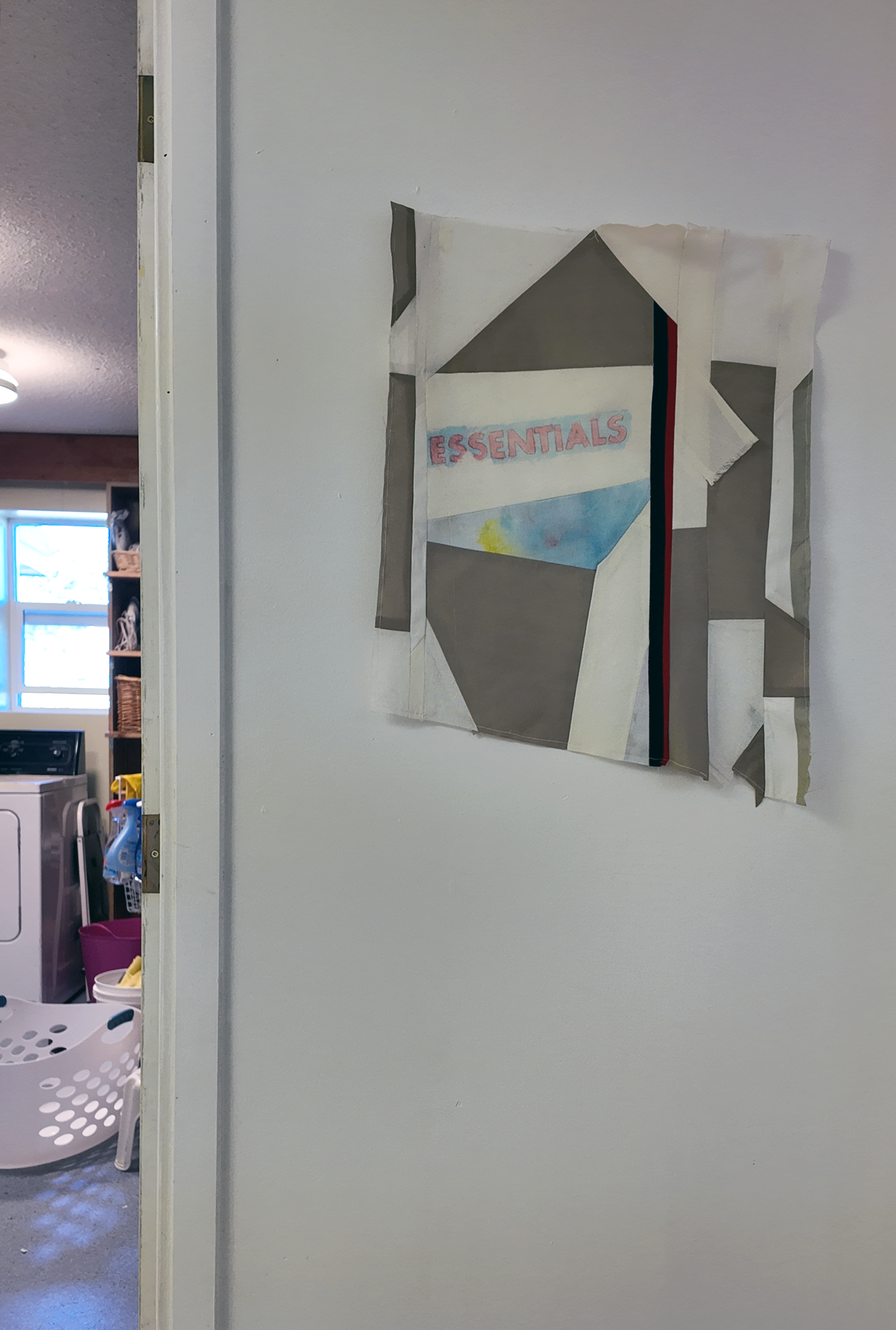

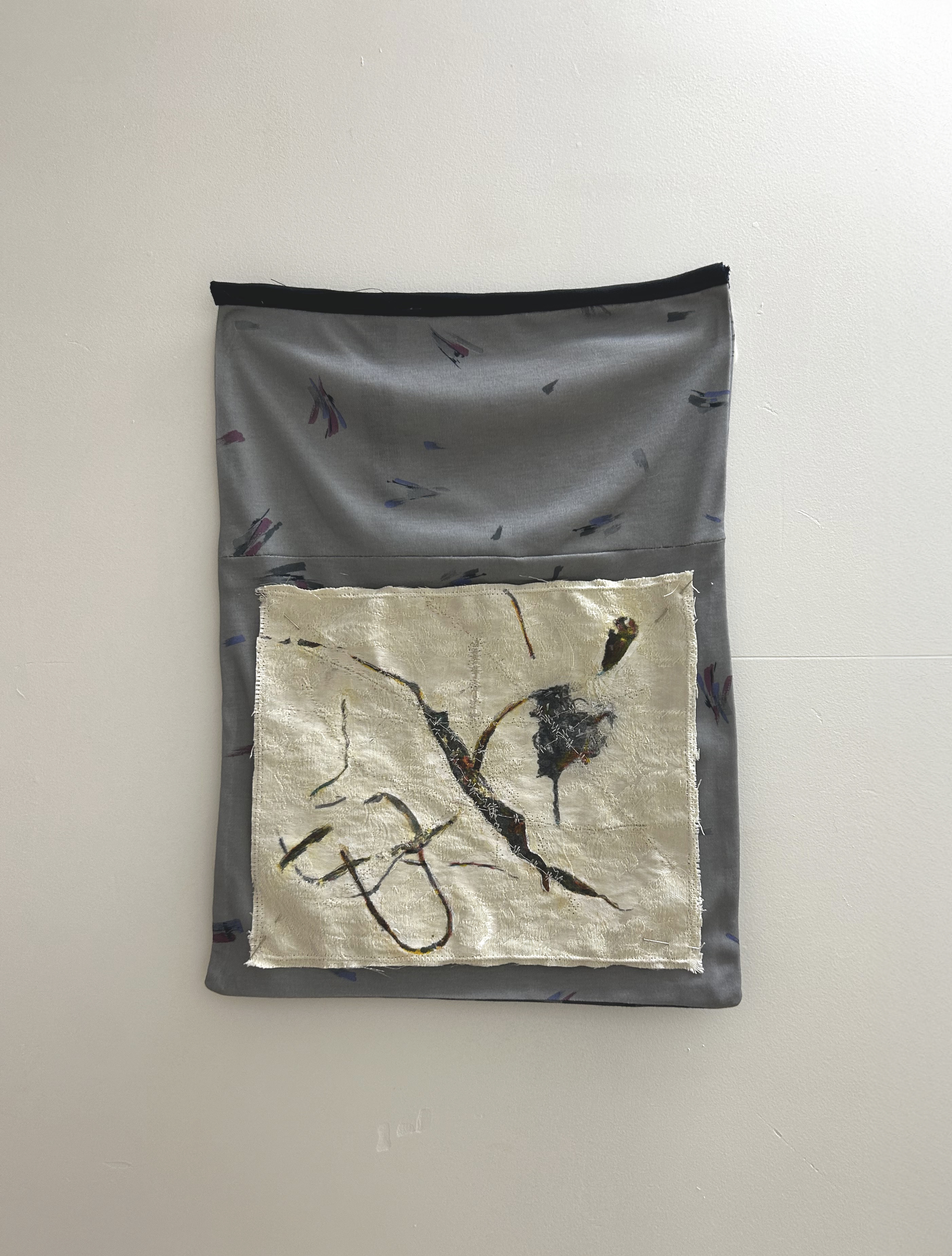
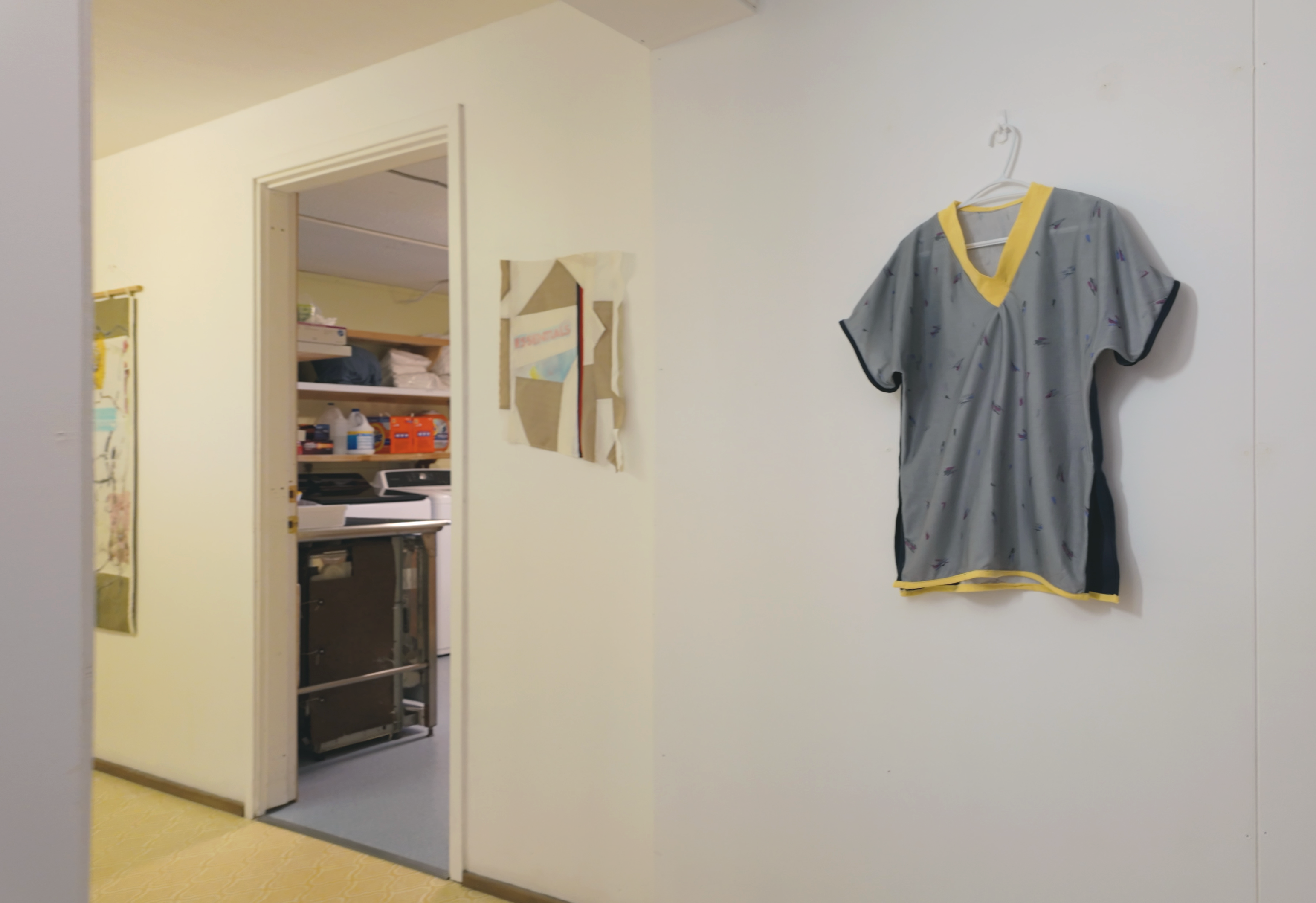
The Fragile Power of Drawing, L’AiR Artists International Residency, Paris, France 2021
“Asymmetrical dress” is a series of self-portraits I made while studying the work of French artist Chana Orloff (1888-1968). I used my body and its relationship to drawing to make a series of staged photographs and prints featuring a one-armed dress.
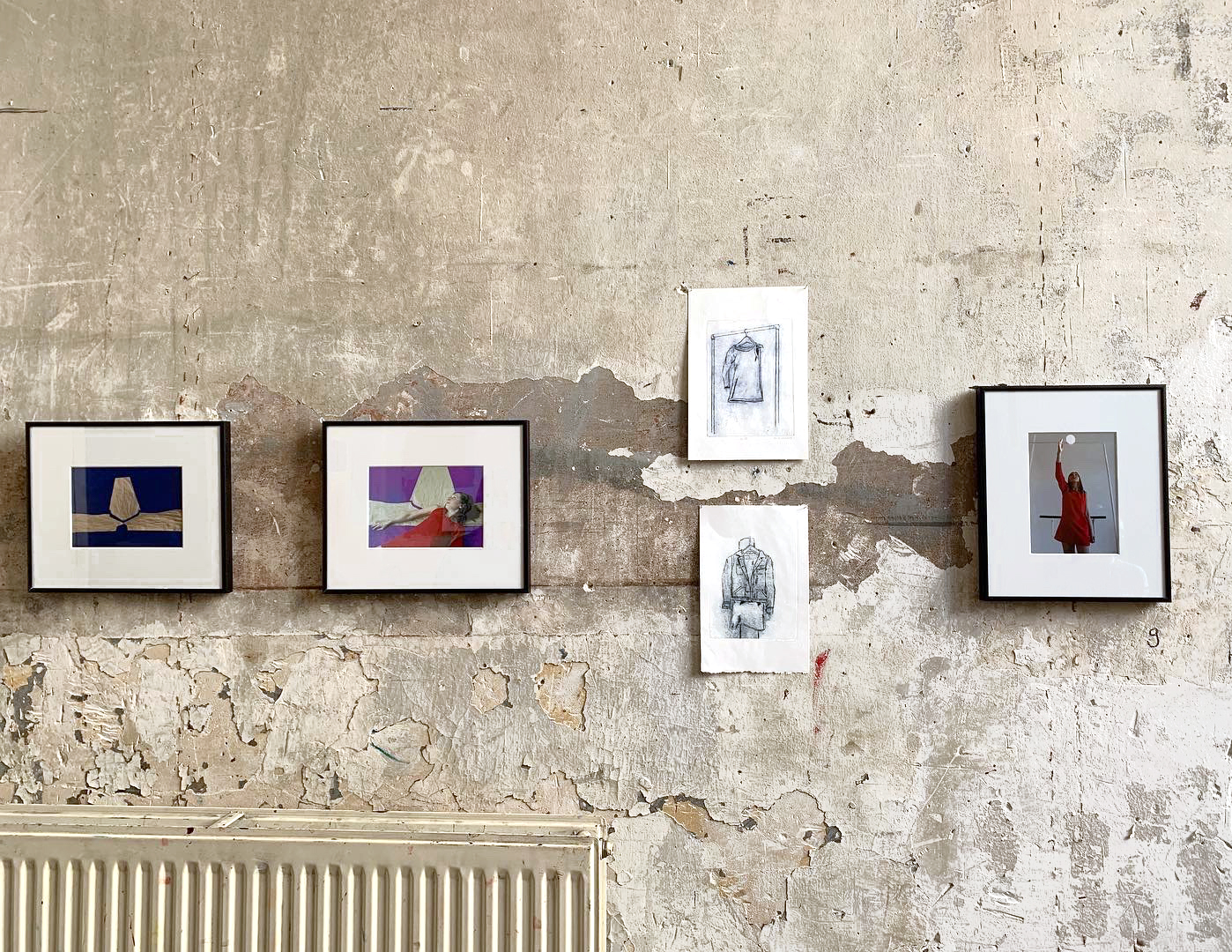
drawing, sculpture, photograph

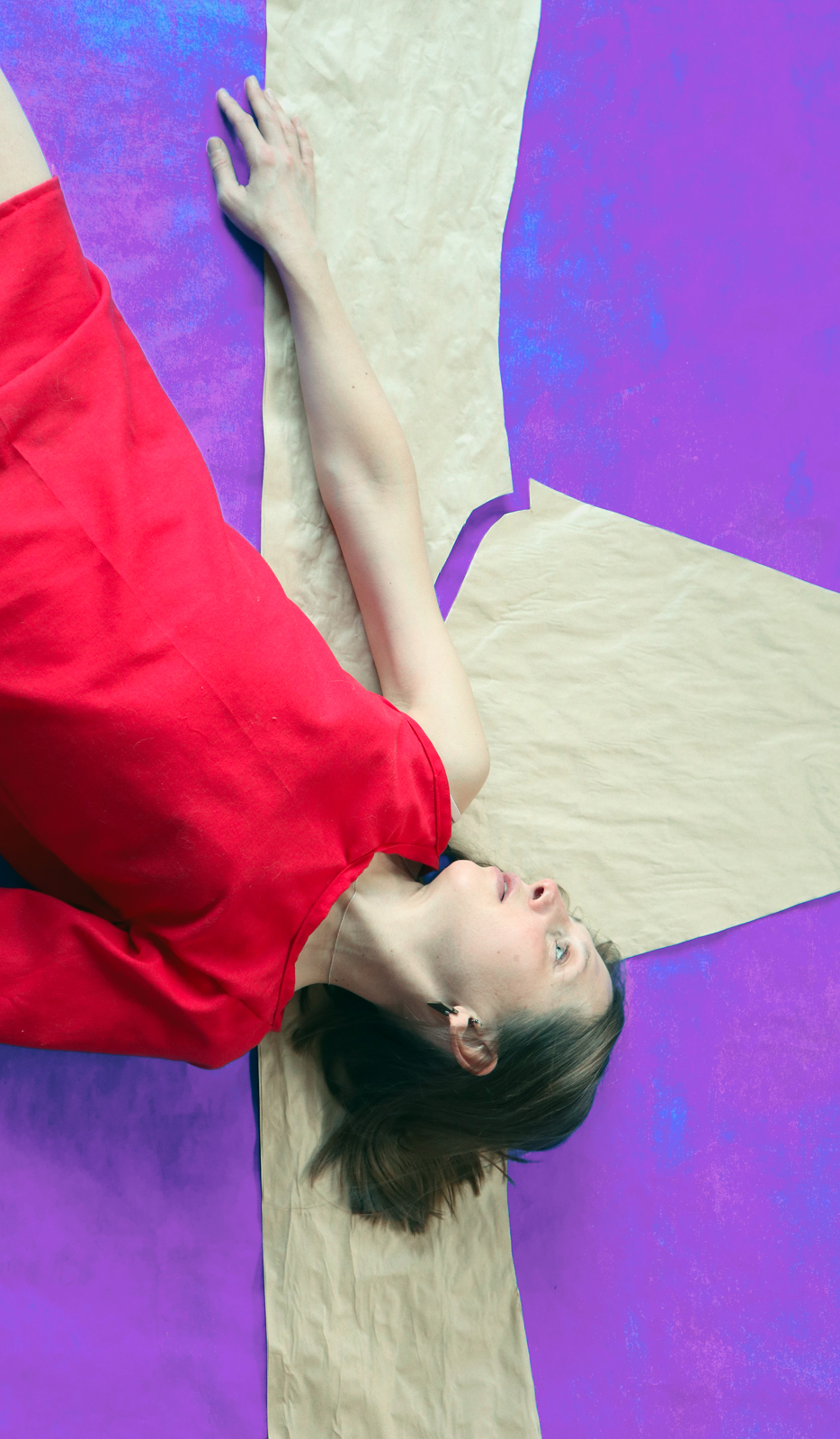

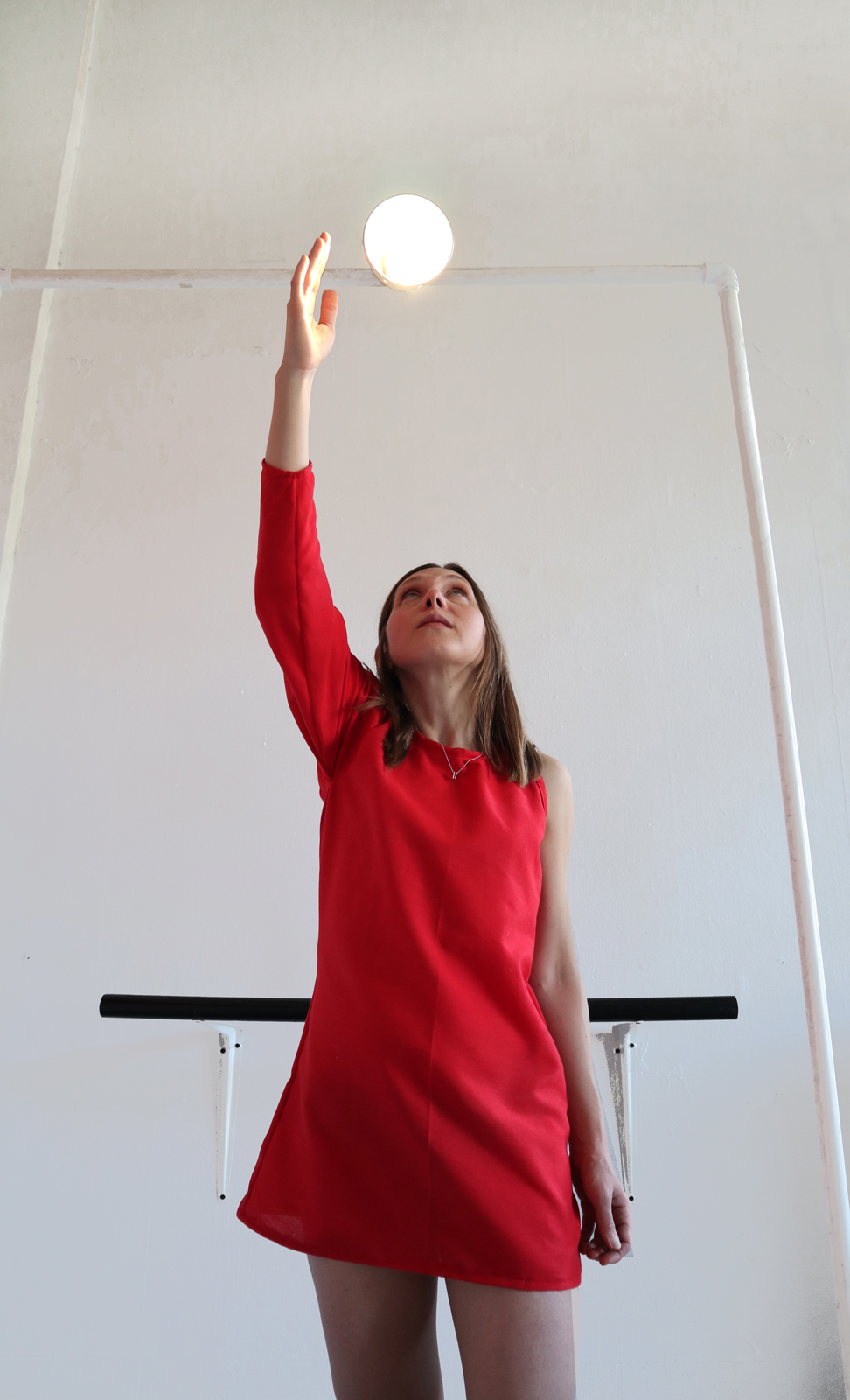
Exhibition statement:
The Fragile Power of Drawing- LAiR Arts International Residency
For over a century now, artists from all over the world have been flocking to Paris for inspiration. Those seeking to satisfy their passion for drawing attended the independent art academies of Montparnasse, which offered intellectual and artistic freedom from the constraints imposed by the fine art schools of the time.
Throughout the 19th and 20th centuries, artists from abroad also spent countless hours studying works held in museum collections. Chaïm Soutine's still lifes were influenced by the works of Chardin and Rembrandt in the Louvre, while its Egyptian collection inspired Modigliani and Zadkine; Marc Chagall’s struggles for modernity drew on Delacroix’s art.
An essential part of the production process for many artists, drawing was historically overshadowed by the monumental mediums of sculpture and painting. Yet in the context of contemporary art, drawing is re-emerging as a powerful medium of its own.
Our Drawing Research Residency seeks to pursue this tradition of drawing research: participants in the 2020/21 residency were invited to explore the online collections of three Paris museums and make a drawing or series of drawings inspired by any work or group of works they choose. The studio-museums of the sculptors Ossip Zadkine, Chana Orloff and Antoine Bourdelle contain many treasures reflecting the richness and variety of the Ecole de Paris, that may be freely reinterpreted from a contemporary point of view. In the spirit of the experimental art academies and ateliers of Montparnasse, all drawing styles, techniques and materials were permitted, in dialogue with the past.
- Rahma Khazam
The Fragile Power of Drawing- LAiR Arts International Residency
For over a century now, artists from all over the world have been flocking to Paris for inspiration. Those seeking to satisfy their passion for drawing attended the independent art academies of Montparnasse, which offered intellectual and artistic freedom from the constraints imposed by the fine art schools of the time.
Throughout the 19th and 20th centuries, artists from abroad also spent countless hours studying works held in museum collections. Chaïm Soutine's still lifes were influenced by the works of Chardin and Rembrandt in the Louvre, while its Egyptian collection inspired Modigliani and Zadkine; Marc Chagall’s struggles for modernity drew on Delacroix’s art.
An essential part of the production process for many artists, drawing was historically overshadowed by the monumental mediums of sculpture and painting. Yet in the context of contemporary art, drawing is re-emerging as a powerful medium of its own.
Our Drawing Research Residency seeks to pursue this tradition of drawing research: participants in the 2020/21 residency were invited to explore the online collections of three Paris museums and make a drawing or series of drawings inspired by any work or group of works they choose. The studio-museums of the sculptors Ossip Zadkine, Chana Orloff and Antoine Bourdelle contain many treasures reflecting the richness and variety of the Ecole de Paris, that may be freely reinterpreted from a contemporary point of view. In the spirit of the experimental art academies and ateliers of Montparnasse, all drawing styles, techniques and materials were permitted, in dialogue with the past.
- Rahma Khazam
L’AiR Arts Residency and exhibiton generously funded by the:


* description at bottom of page
Performance: July 31, 2022: watching from a dream, 4:00
About the performances:
playing catch: "Playing catch" relates to what a young rural woman might do to occupy herself while she is alone. This video is part of a series of performance vignettes made while Nicole was artist in residence at Luminous Bodies, at Artscape Gibraltar Point on Toronto Island in Canada.
heavy equipment: A vignette relating to what a young rural woman might do to occupy herself while she is alone such as playing around an abandoned truck. Choreography is from contemporary dance classes taught by Treasure Waddell at Osborne Village Dance Club, Winnipeg, Canada.
watching from a dream: A multi-narrative performance performed while at Luminous Bodies about a looming danger. It has 3 segments: a dream, introductions, and conversations with a friend. A section of this performance is inspired by a workshop led by dance artist Ali Robson.
playing catch: "Playing catch" relates to what a young rural woman might do to occupy herself while she is alone. This video is part of a series of performance vignettes made while Nicole was artist in residence at Luminous Bodies, at Artscape Gibraltar Point on Toronto Island in Canada.
heavy equipment: A vignette relating to what a young rural woman might do to occupy herself while she is alone such as playing around an abandoned truck. Choreography is from contemporary dance classes taught by Treasure Waddell at Osborne Village Dance Club, Winnipeg, Canada.
watching from a dream: A multi-narrative performance performed while at Luminous Bodies about a looming danger. It has 3 segments: a dream, introductions, and conversations with a friend. A section of this performance is inspired by a workshop led by dance artist Ali Robson.
stay | flame a postcard from my home, 2021
Site Visit on Artland, 2020
stay | flame a postcard from my home is a colour-shifting video of a spinning ceiling fan. Originally conceived during the COVID-19 lockdown, the circular plane-shifting movement and transforming colours become a portal to somewhere beyond the confines of the room. Stay | flame is a subtle spectacle representing the emergence from private to public emerging from the isolation of the COVID-19 pandemic.


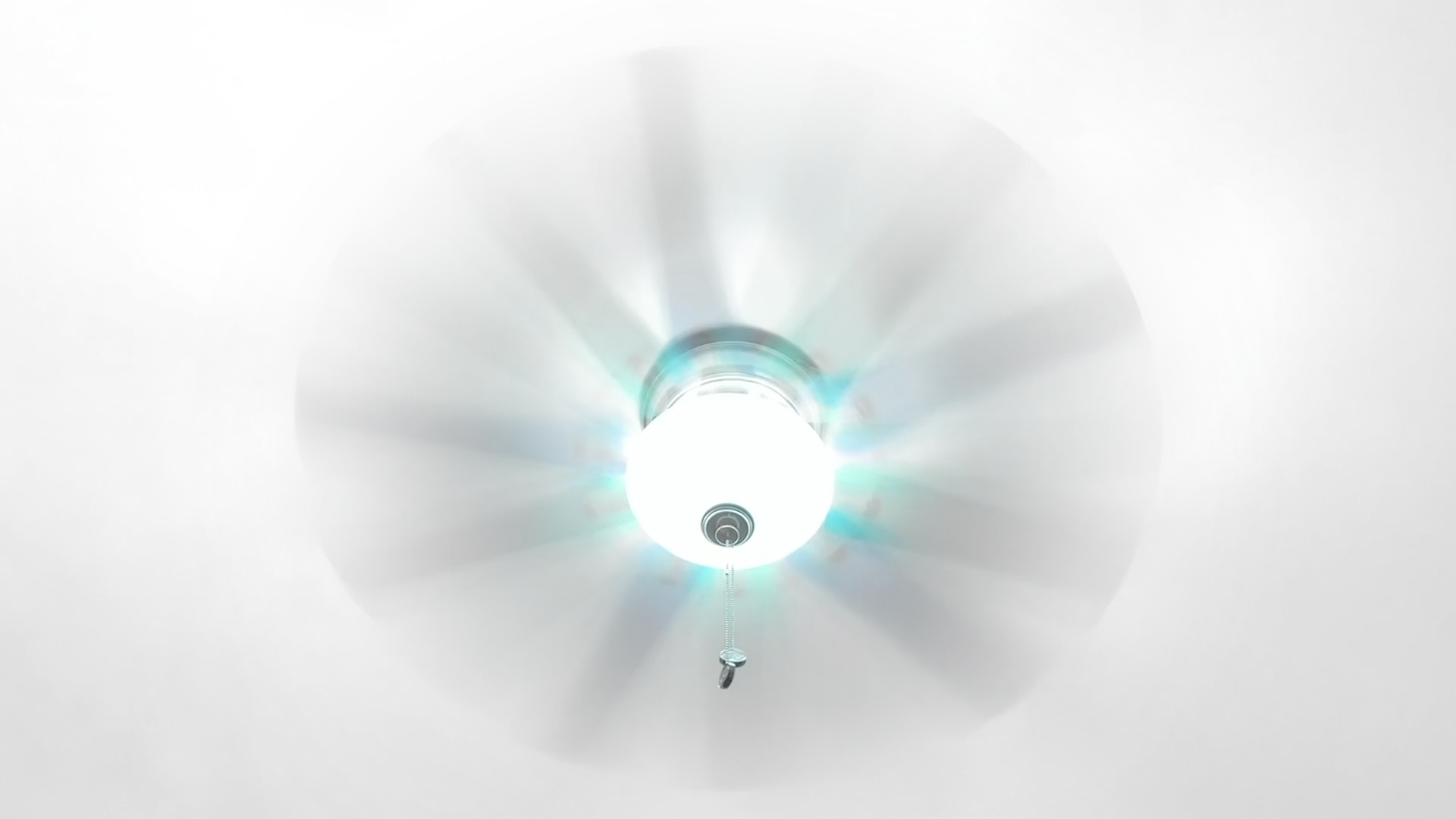
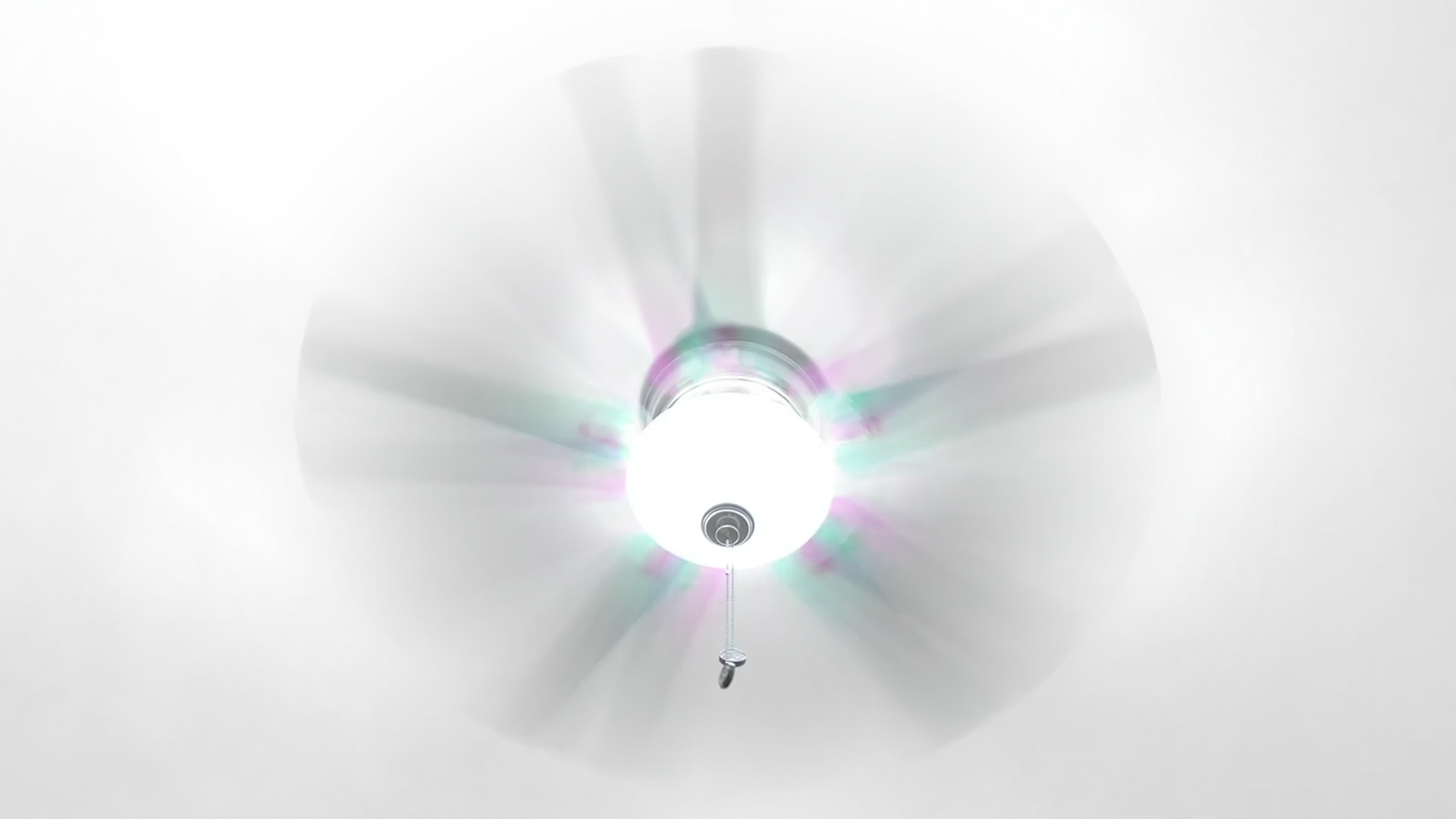

Visit Exhibition Here
Site Visit Pivoting around the symbolism, associations and format of the postcard and carte de visite, this exhibition is a collective project that brings together artists from around the world to share and celebrate intercultural connection and artistic engagement. The title SITE VISIT refers to the importance of place, but also to the way we now visit online sites in place of physical meetings. It is a play on words with carte de visite as well as a play on the dynamic of sight/site and being in a place physically or virtually. This exhibition hopes to bring together artists from around the world with a shared understanding of the power of place, creative power and a nostalgia for the people and conversations that were had, at a time when we could be together in person.
Postcards are ways that we can connect with each other, or connect ourselves with the place they’re from as keepsakes. Perhaps they connect us with the person we were ourselves, when in a particular place. Maybe it’s the only way we can purchase an artwork at our current budget - a photographic rendering on a small card - yet it is a way to bring a part of the trip and art back to our homes.
The carte de visite is one of the earliest examples of a postcard - where instead of a letter accompanied by small illustrations or keepsakes - an photograph and an accompanying caption was used to present a place, a people, an experience. The carte de visite was patented in Paris. It offered one of the earliest ways to record and keep memories of places through photography. The trend of collecting images and the portraits of loved ones, celebrities and places became ubiquitous through the carte de visite - because of its format and relative accessibility from being inexpensive. Adapted from a calling card, and later transforming into a business card, the carte de visite was a means of person to person connection, passed from hand to hand in its manageable size. In this way there is a divergence between the function of a carte de visite as a signifier of presence and meeting through exchange, and the postcard as a symbol of journeying and distance being travelled.
This exhibition is intended to become a continuous project connecting together artists from different continents, contexts and cultural experiences.
The proceeds from sales go directly to the artists, including 10% collected towards the residency scholarship fund to enable future artists to benefit from our programs.
Graphic design: Anastasia Venkova
Site Visit Pivoting around the symbolism, associations and format of the postcard and carte de visite, this exhibition is a collective project that brings together artists from around the world to share and celebrate intercultural connection and artistic engagement. The title SITE VISIT refers to the importance of place, but also to the way we now visit online sites in place of physical meetings. It is a play on words with carte de visite as well as a play on the dynamic of sight/site and being in a place physically or virtually. This exhibition hopes to bring together artists from around the world with a shared understanding of the power of place, creative power and a nostalgia for the people and conversations that were had, at a time when we could be together in person.
Postcards are ways that we can connect with each other, or connect ourselves with the place they’re from as keepsakes. Perhaps they connect us with the person we were ourselves, when in a particular place. Maybe it’s the only way we can purchase an artwork at our current budget - a photographic rendering on a small card - yet it is a way to bring a part of the trip and art back to our homes.
The carte de visite is one of the earliest examples of a postcard - where instead of a letter accompanied by small illustrations or keepsakes - an photograph and an accompanying caption was used to present a place, a people, an experience. The carte de visite was patented in Paris. It offered one of the earliest ways to record and keep memories of places through photography. The trend of collecting images and the portraits of loved ones, celebrities and places became ubiquitous through the carte de visite - because of its format and relative accessibility from being inexpensive. Adapted from a calling card, and later transforming into a business card, the carte de visite was a means of person to person connection, passed from hand to hand in its manageable size. In this way there is a divergence between the function of a carte de visite as a signifier of presence and meeting through exchange, and the postcard as a symbol of journeying and distance being travelled.
This exhibition is intended to become a continuous project connecting together artists from different continents, contexts and cultural experiences.
The proceeds from sales go directly to the artists, including 10% collected towards the residency scholarship fund to enable future artists to benefit from our programs.
Graphic design: Anastasia Venkova
stand alone projects
 laces, waterjet steel and textile, 2023, 20" x 34" x 1.5", made for the exhibit “Look”, a response to the writings of Victor Enns.
laces, waterjet steel and textile, 2023, 20" x 34" x 1.5", made for the exhibit “Look”, a response to the writings of Victor Enns. 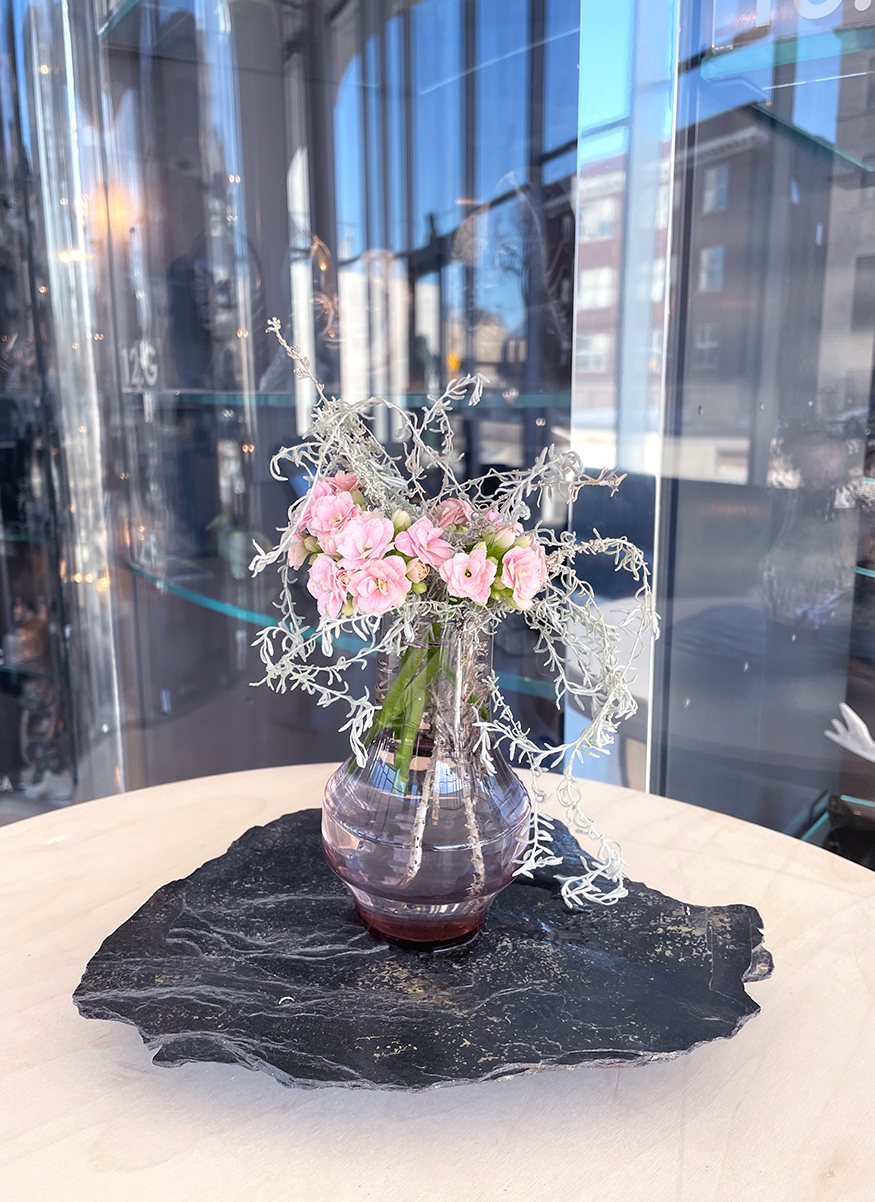
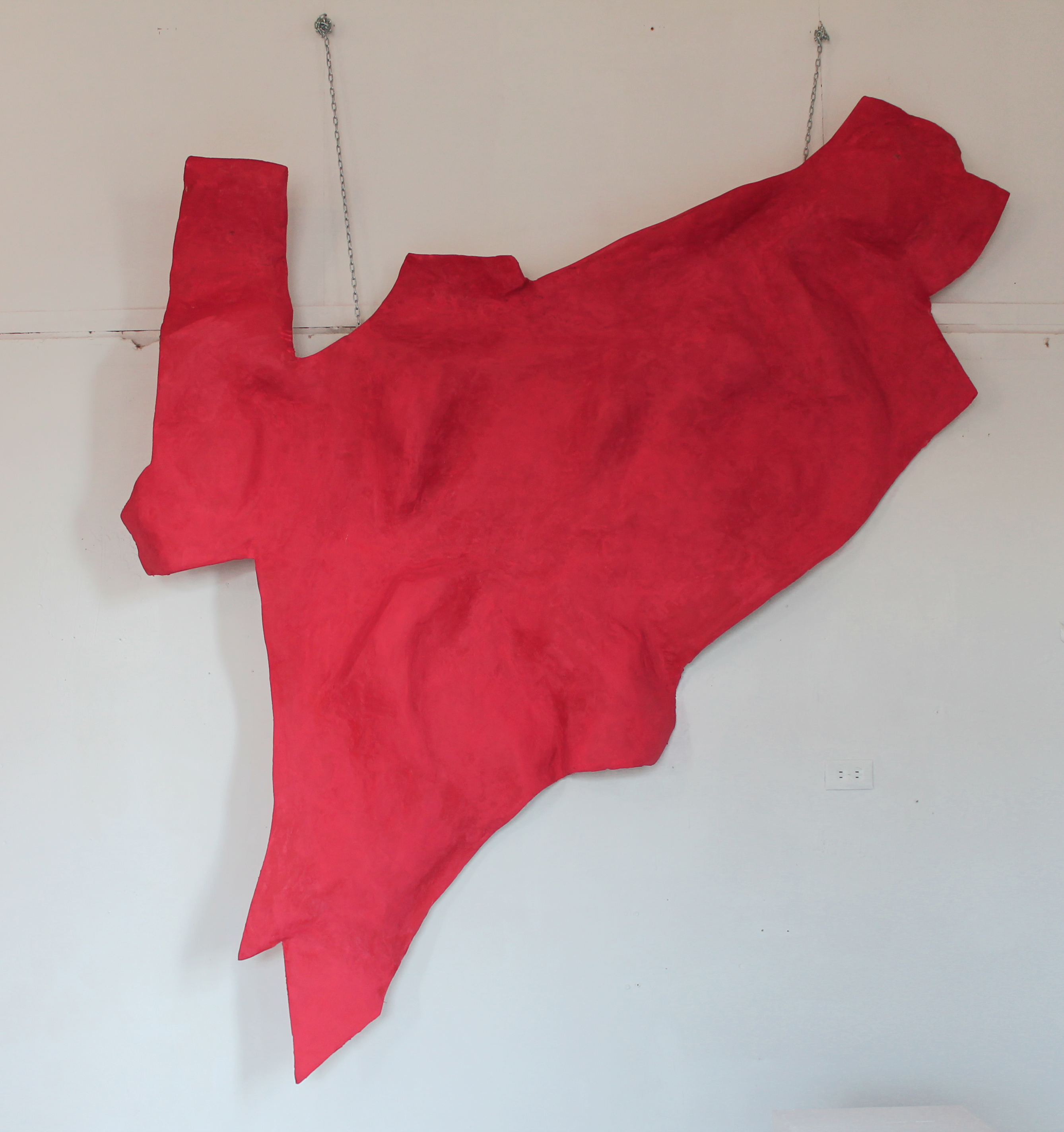
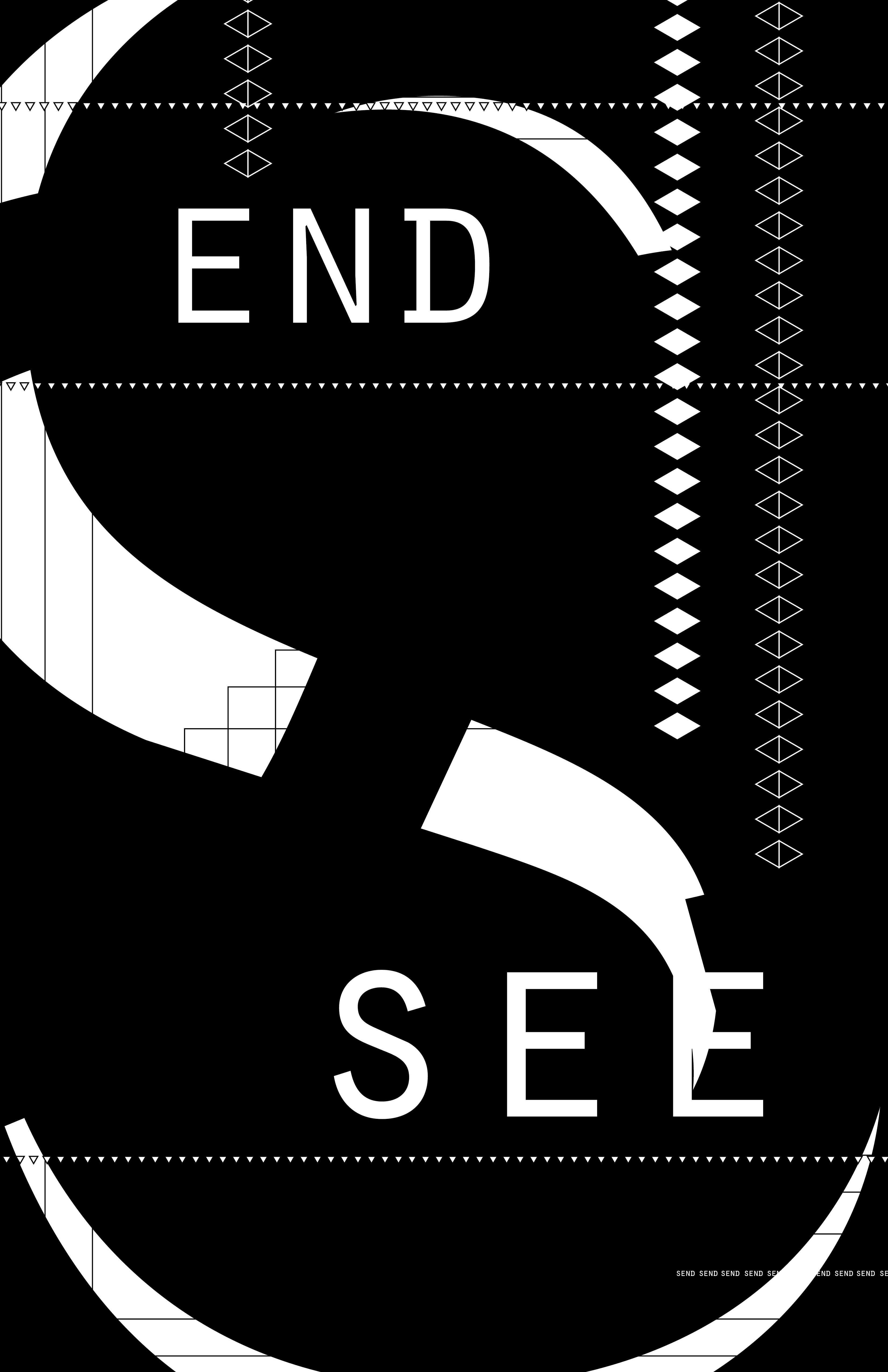

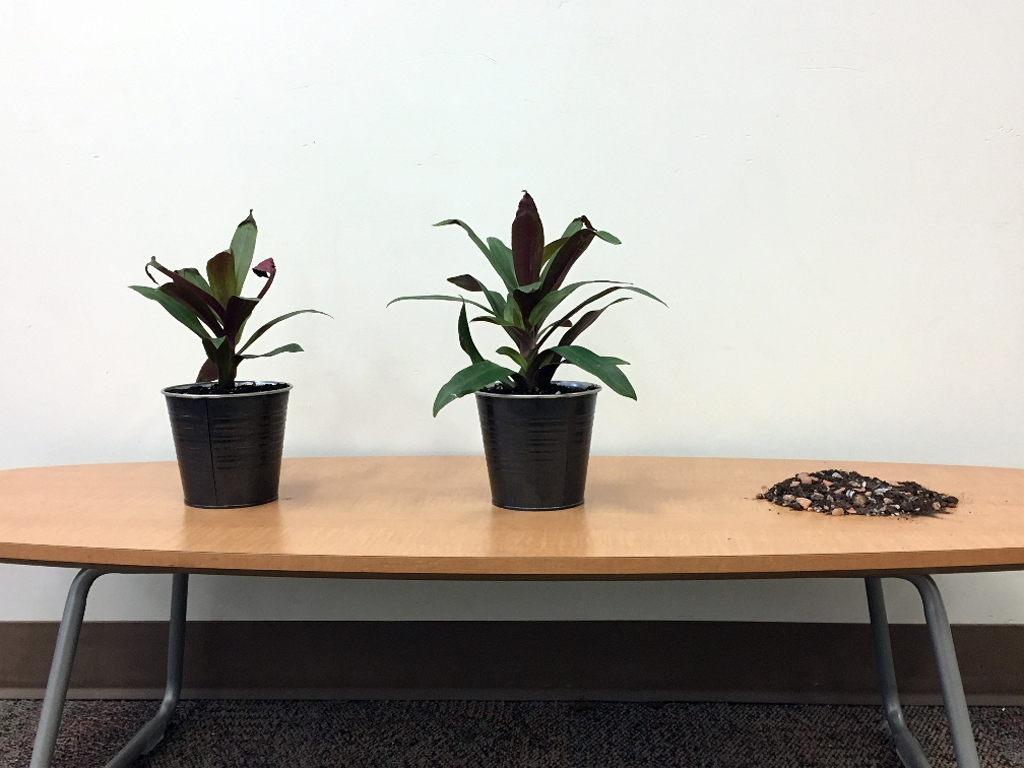

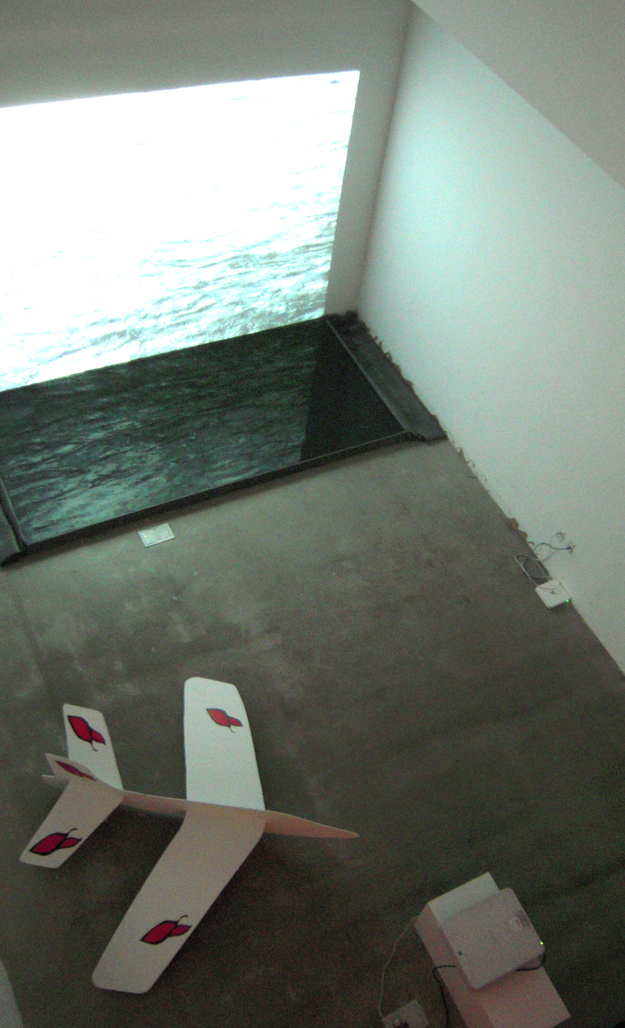
Escaped Alone Presented by Full of Days Collective
Winnipeg, Manitoba, Prairie Theatre Exchange, Colin Jackson Studio, October 2022
Actors from left to right: Vi - Patricia Hunter, Lena - Jane Burpee, , Sally - Megan McArton and Mrs. J - Maggie NagleDirector/Producer - Krista Jackson, Lighting Designer - Scott Henderson, Designer - Nicole Shimonek, Stage Manager - Margaret Brook, Assistant Lighting Designer - Kara Pankiw, Assistant Director/Producer - Emma Welham
Playwright - Caryl Churchill, Funded by the Canada Arts Council, Manitoba Arts Council and Winnipeg Arts Council

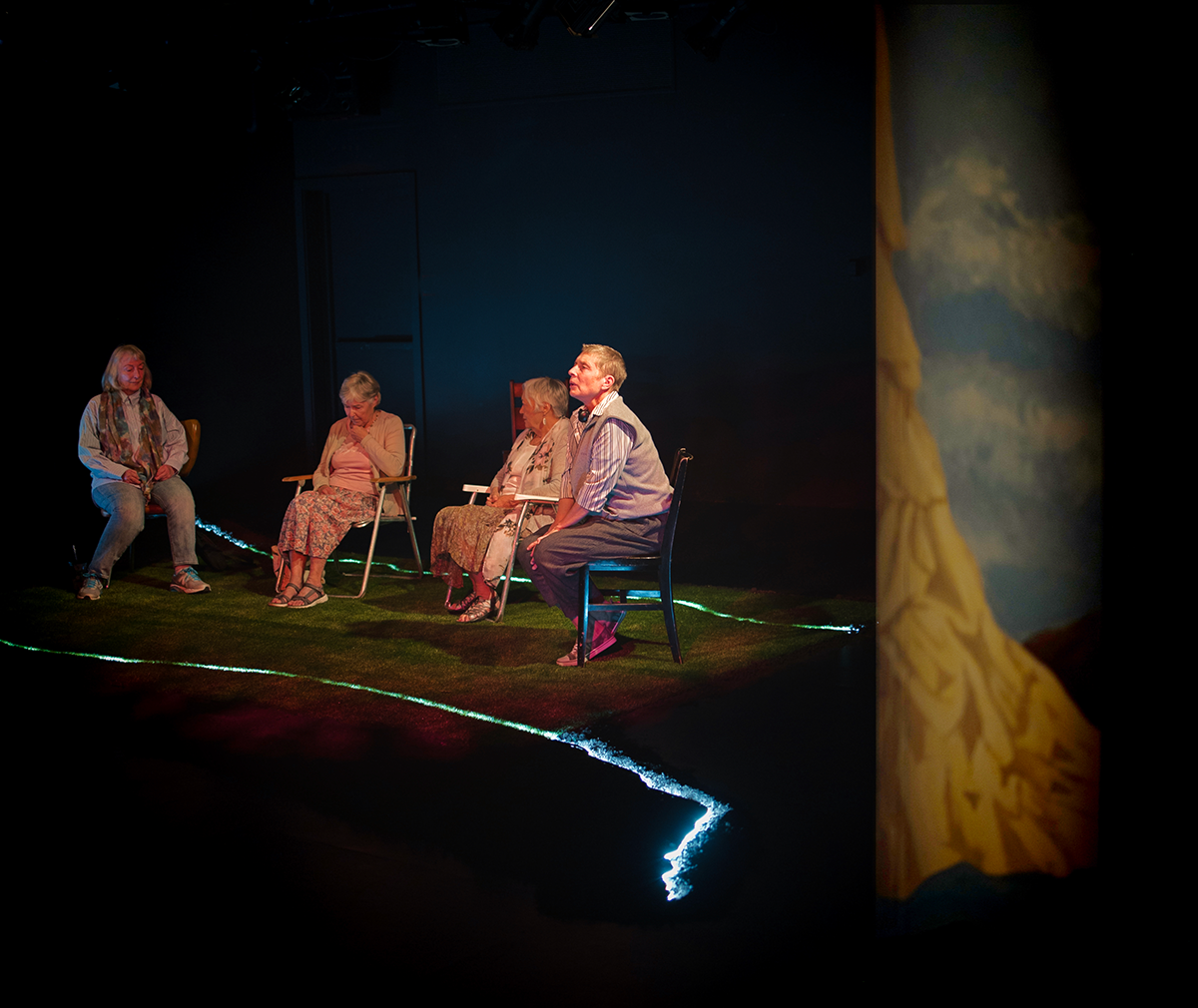

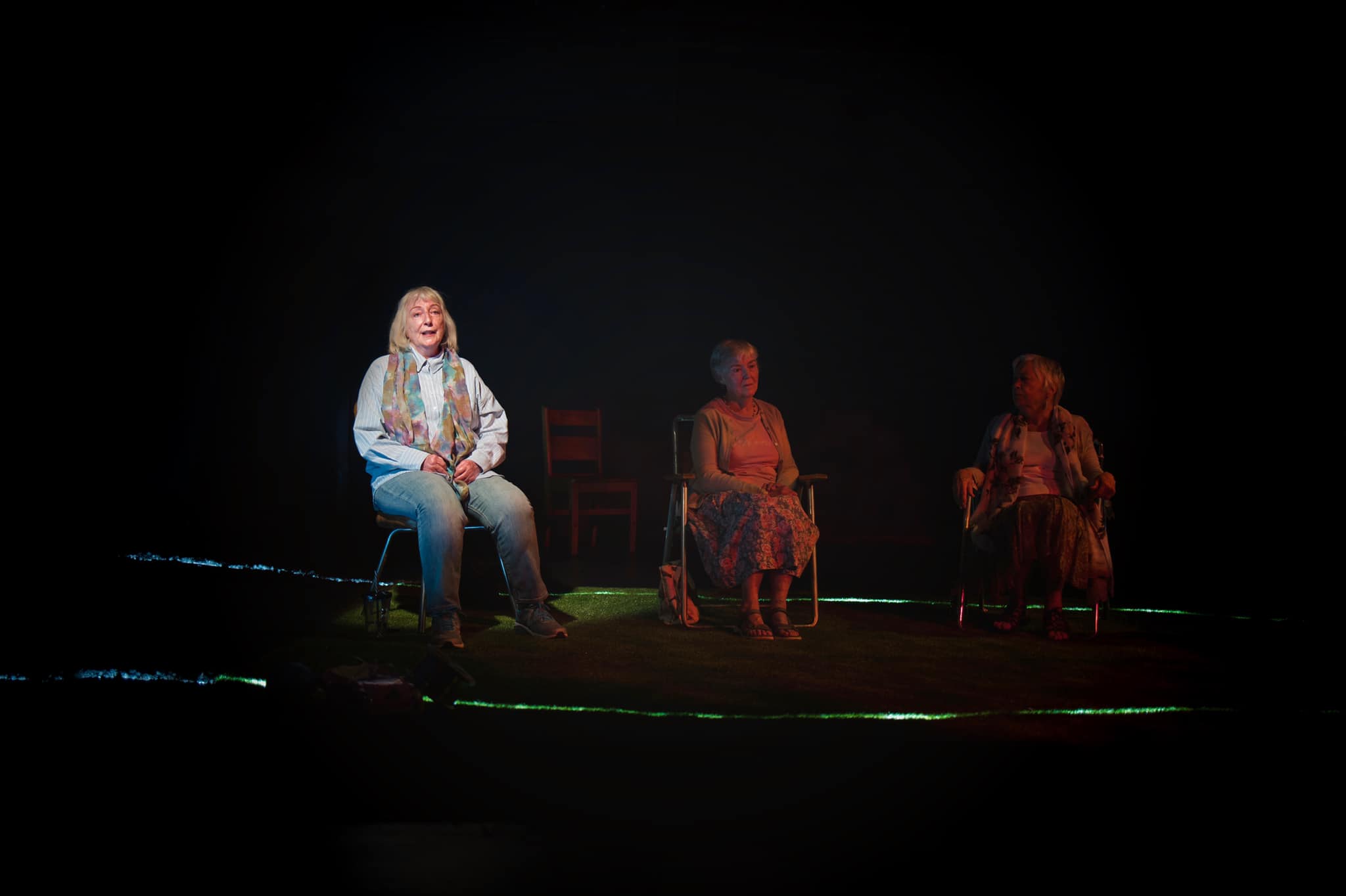

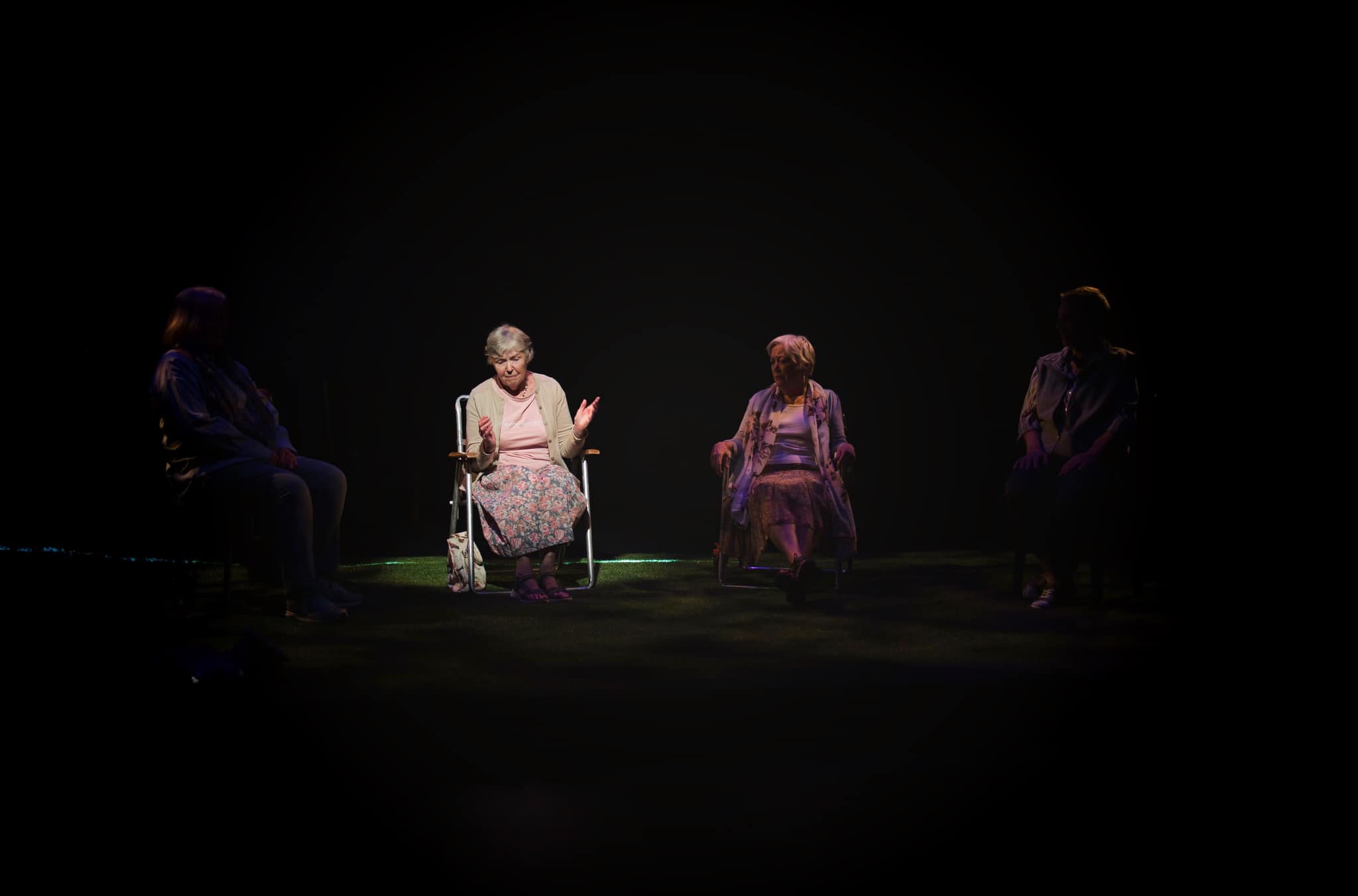


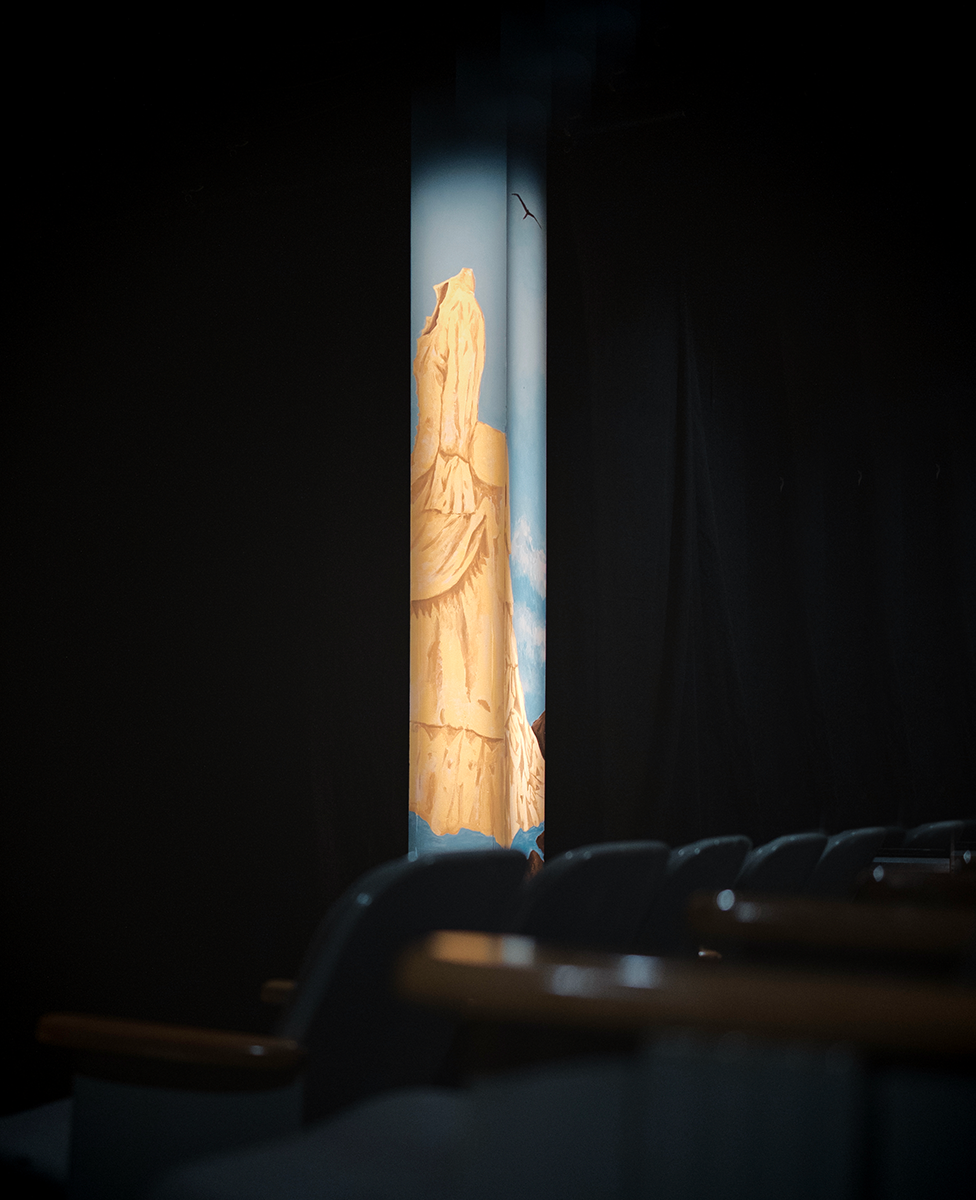
project: Study Untitled Study
:30 seconds
* description at bottom of page
“stationery (untitled)” is a performance for the gallery/proposal "study untitled study" using Collin Zipps sculpture “untitled study”.
Cats in the Alley 2014
Urban Idea Winnipeg: The Creative Placemaking Challenge
Two separate light projections (gobos) of a cat chasing laser lights in an alley. Pedestrians trigger the laser and cat projections.
Ten installations were mounted in the alleys of Winnipeg’s West Exchange District. The project “provided passers-by with the opportunity to look at space differently, to engage in a wide variety of activities, and to experience first-hand how embedding creativity and the arts into our neighbourhoods can be transformational for cities" Urban Idea 2014
technical help: Ken Gregory
Urban Idea Winnipeg: The Creative Placemaking Challenge
Two separate light projections (gobos) of a cat chasing laser lights in an alley. Pedestrians trigger the laser and cat projections.
Ten installations were mounted in the alleys of Winnipeg’s West Exchange District. The project “provided passers-by with the opportunity to look at space differently, to engage in a wide variety of activities, and to experience first-hand how embedding creativity and the arts into our neighbourhoods can be transformational for cities" Urban Idea 2014
technical help: Ken Gregory



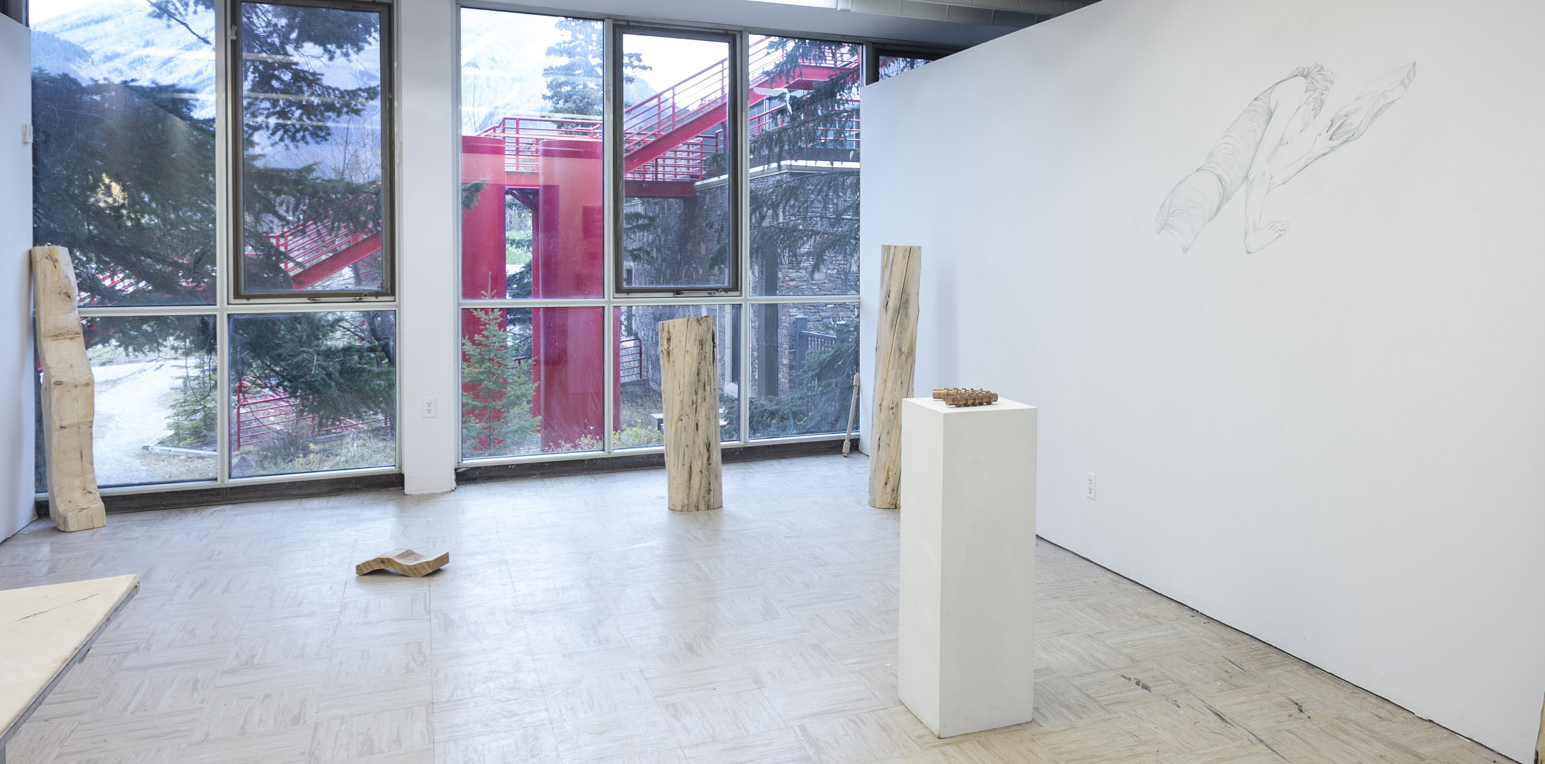
explorations: performance for sculpture
During an artist residency at the Banff Centre, I experimented with using drawing and sculpture to express my body movement.
Elements include a spruce tree, tree carving, lathed objects, cast bronze sculpture, wood carvings and several wall drawings of myself performing with a basswood performance prop. Ideas of permanence vs. impermanence were explored and most components of the installation are temporal existing only through documentation.
I produced explorations: performance for sculpture at the Banff Centre with the support of Travel Professional Development grants from the Winnipeg Arts Council & Manitoba Arts Council and the Keith Evans Scholarship from the Banff Centre for the Arts.
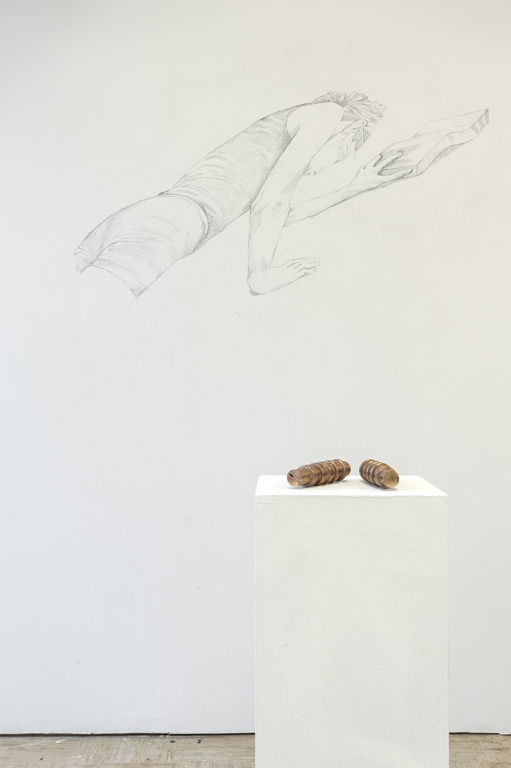

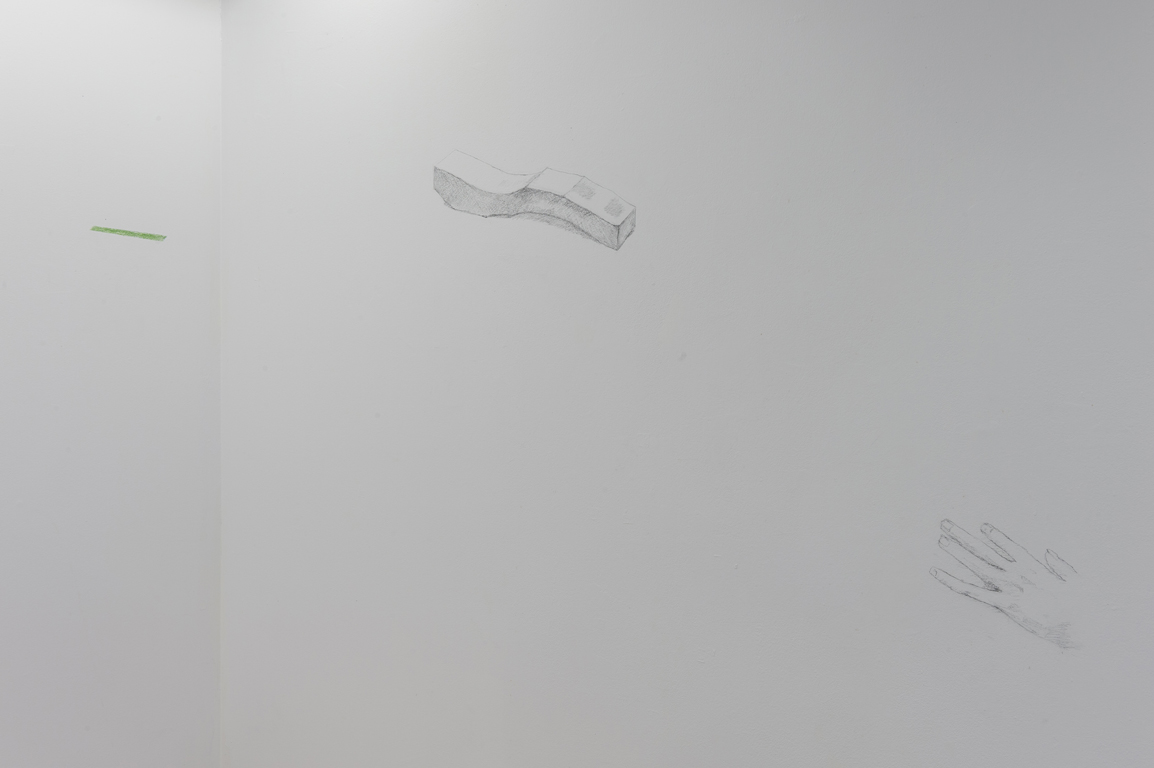
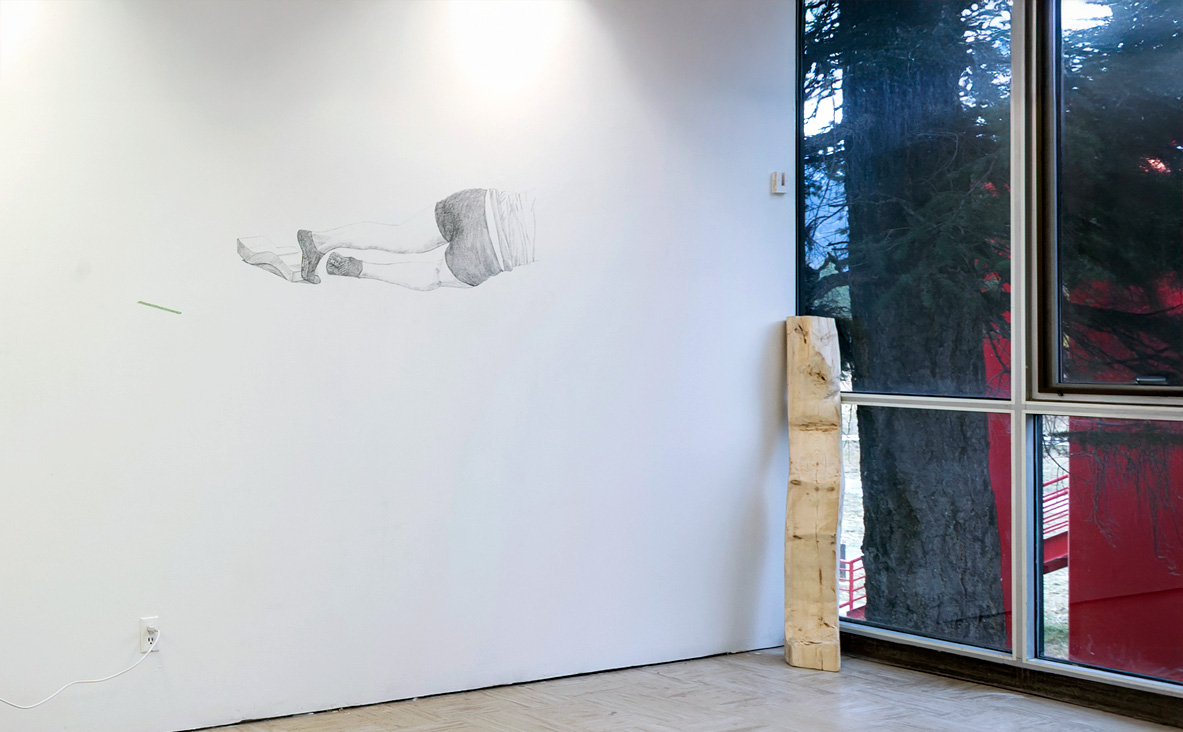
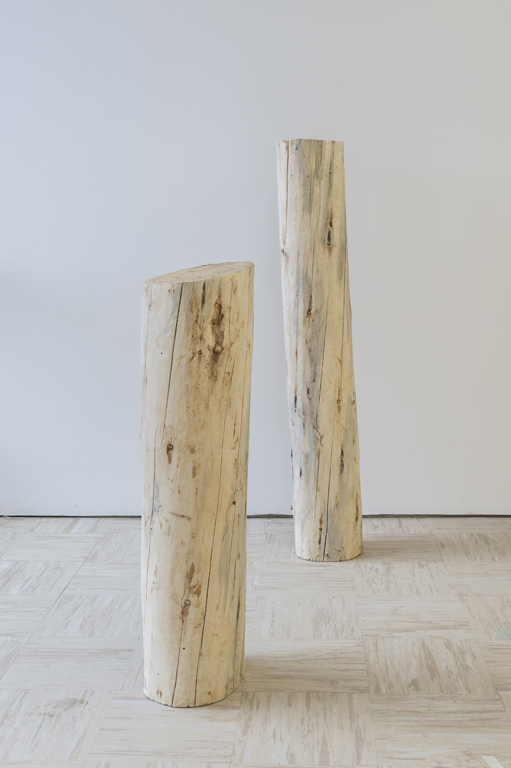
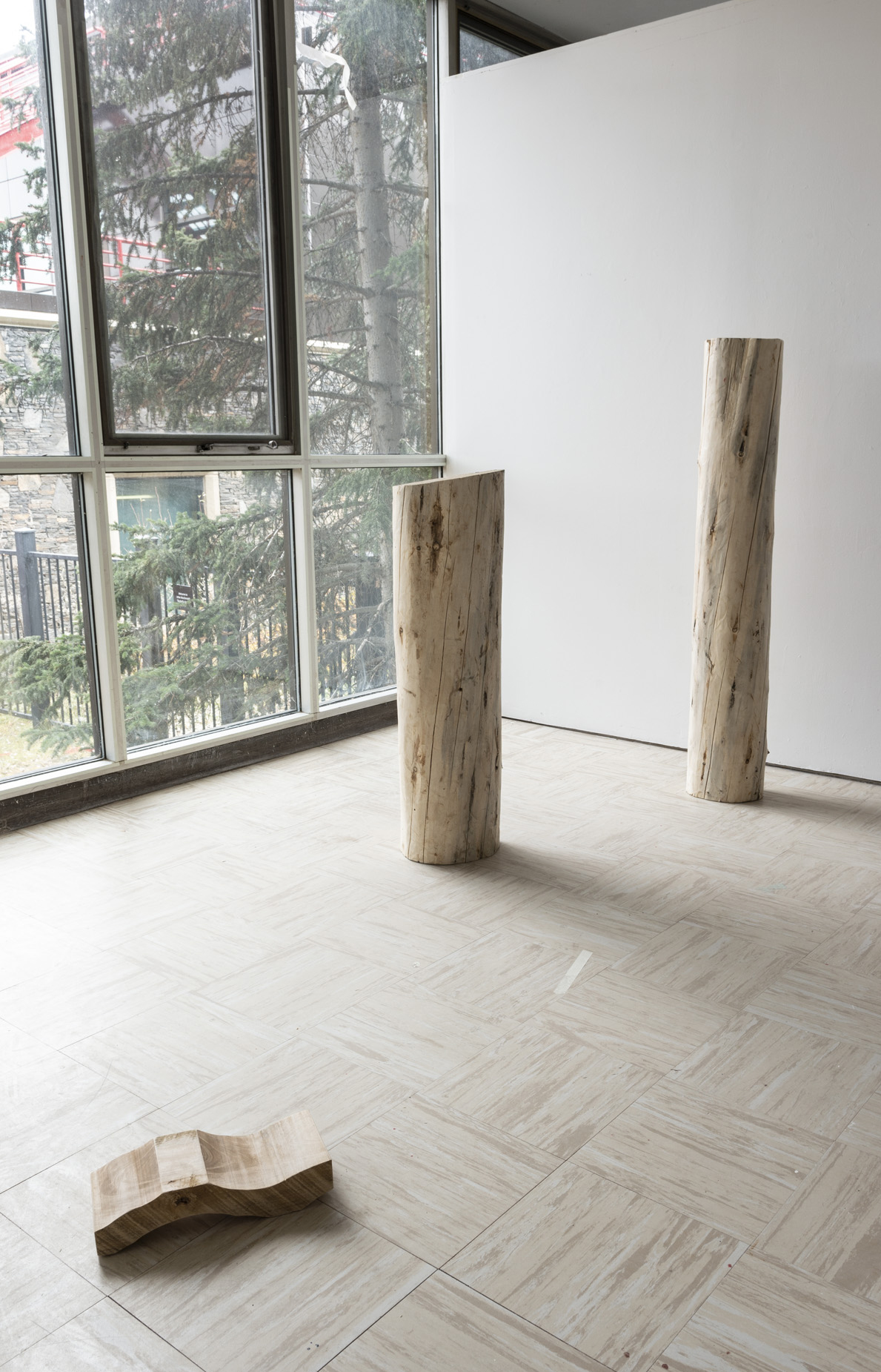
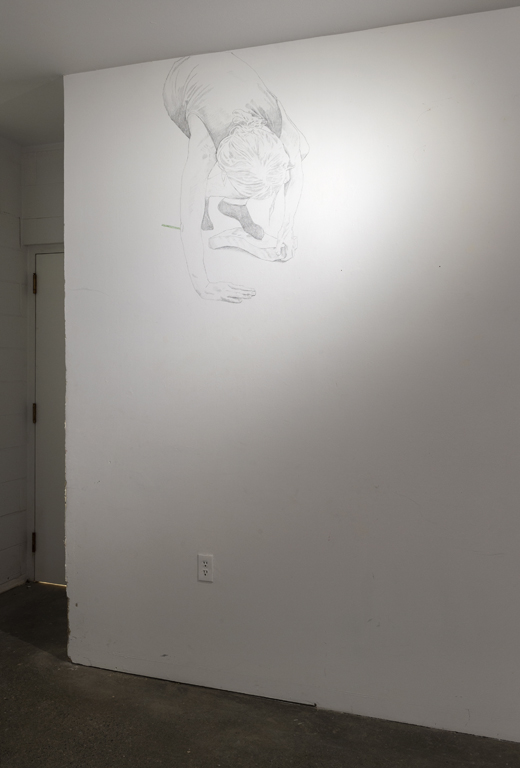
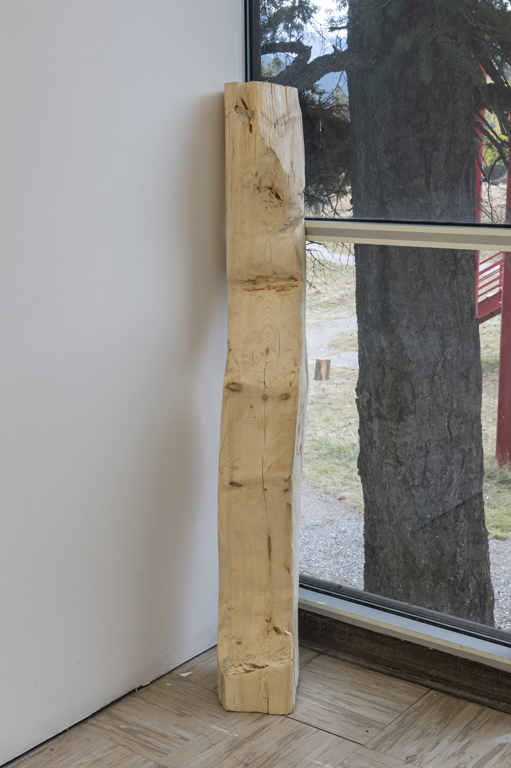
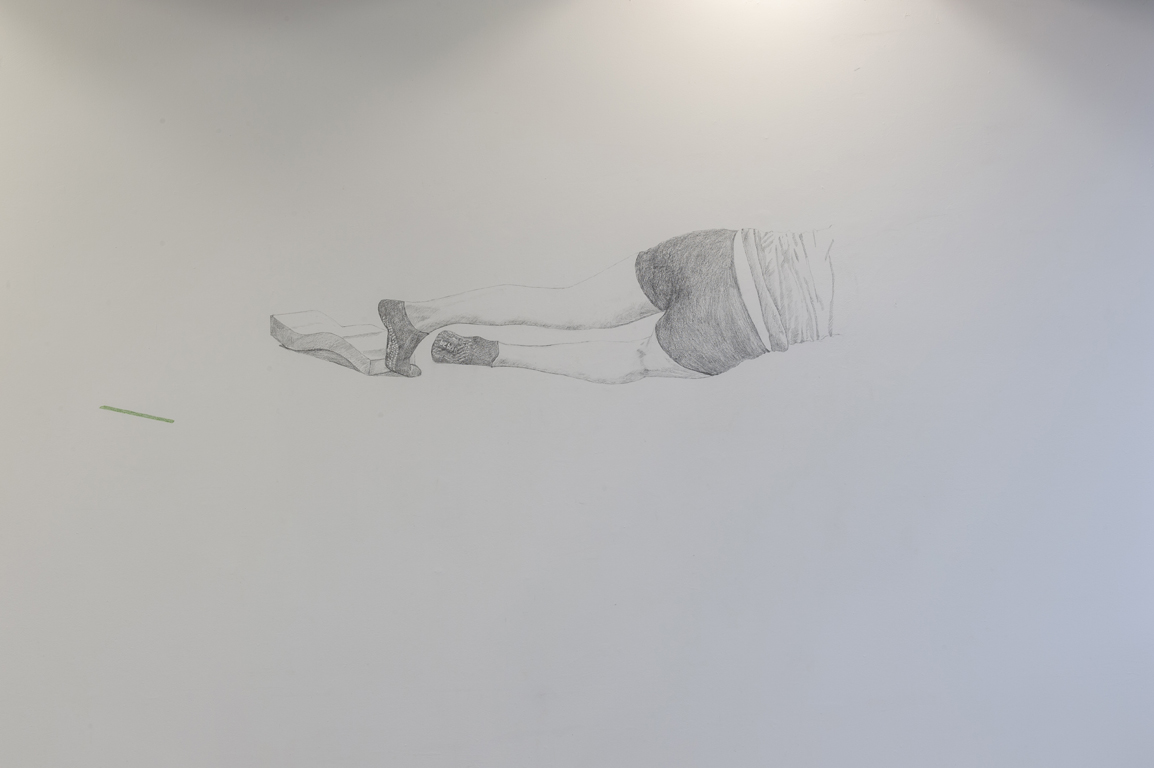
fractal renditions 2022
sound is the starting point, screened during a Circus of Object event, Winnipeg
vimeo link: huricanne & landscape
running time: 1:20
![]()
![]()
![]()
sound is the starting point, screened during a Circus of Object event, Winnipeg
vimeo link: huricanne & landscape
running time: 1:20

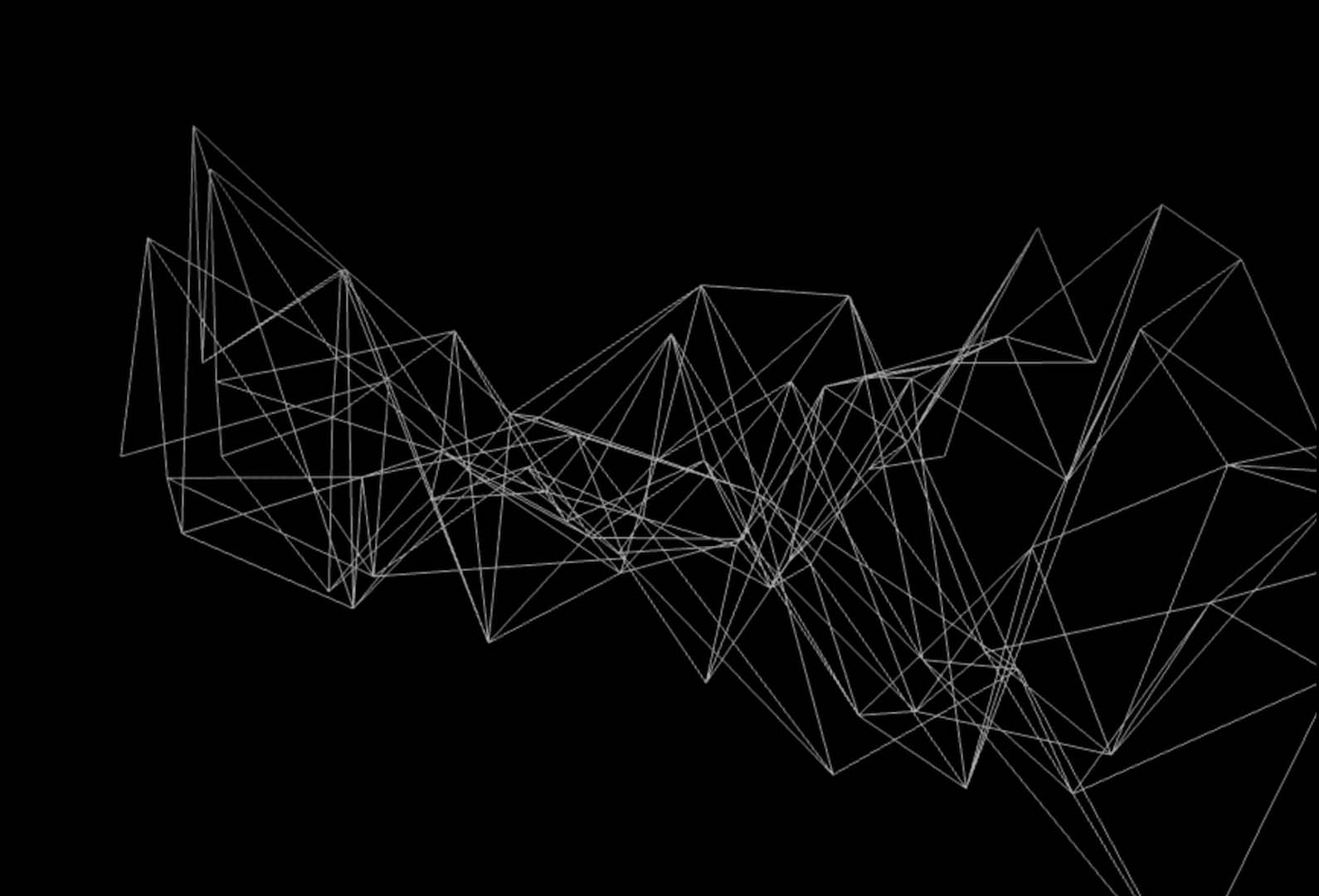

RTV rubber buckets 2010,
Residency: SE1 Studio - Bow Arts Trust, London, UK
RTV rubber buckets is inspired by Propeller Island – An Evolving Art Space. Buckets are a necessary tool on a ship, to bail water in the case of a leak or spring. Buckets would be useful to bail one out of an art emergency. The rubber buckets reflect the futile action of bailing water on a leaky boat.
![]()
Residency: SE1 Studio - Bow Arts Trust, London, UK
RTV rubber buckets is inspired by Propeller Island – An Evolving Art Space. Buckets are a necessary tool on a ship, to bail water in the case of a leak or spring. Buckets would be useful to bail one out of an art emergency. The rubber buckets reflect the futile action of bailing water on a leaky boat.

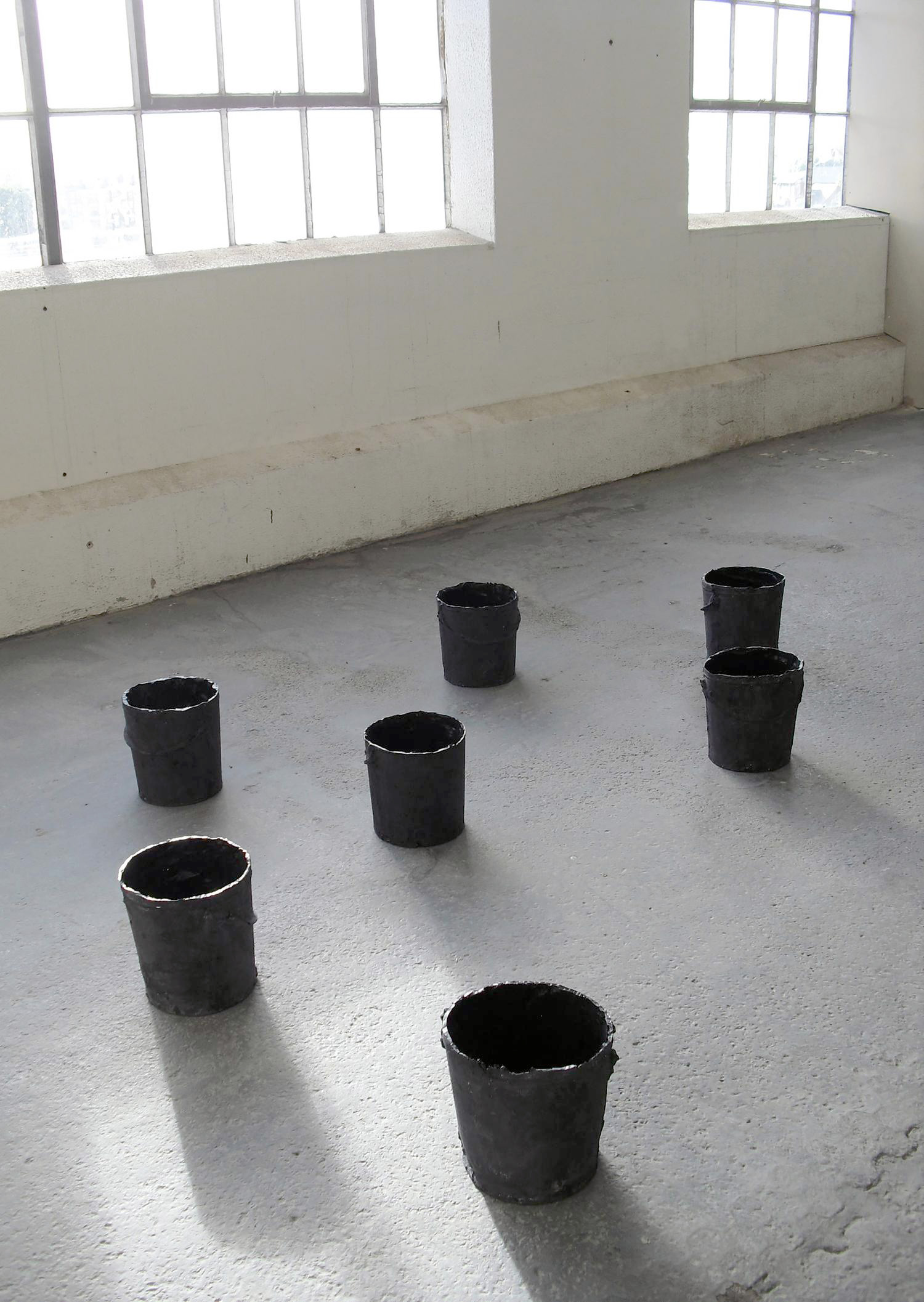

In 2009 a group of resident artists made Propeller Island - An Evolving Artspace hosted by the Brompton Design District. For one month resident artists hosted site specific installations and performances at a vacant storefront at South Kensignton Station.
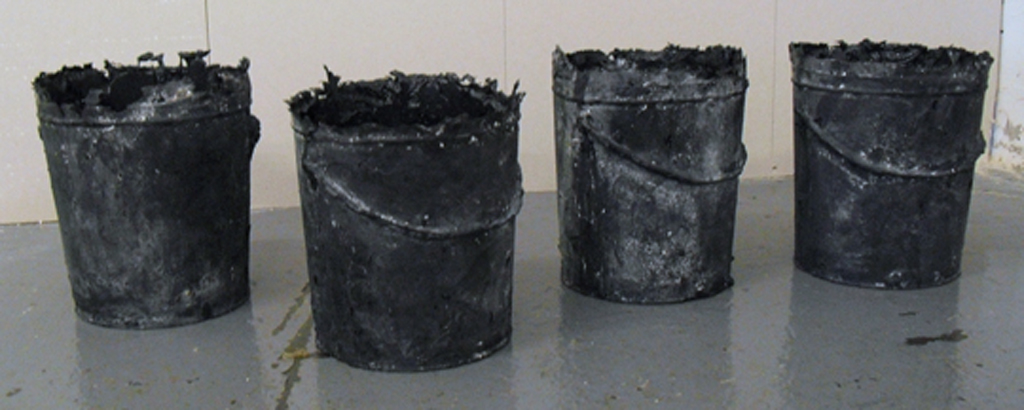
funding gratefully received from the

“score to perform” is a collaborative video formed around notions of communication. Artists Rita Evans and Nicole Shimonek experiment with a
performative score and subsequent set of parameters to create work at the time
of COVID-19 exhibited and juxtaposed alongside one another.
Octavia
Butler’s “Speech Sounds” is a starting point for the collaboration, reflecting
on how, in the story, a pandemic takes away a civilization’s capacity to
communicate in written and spoken language. People communicate through gesture
using symbols to introduce themselves to one another.
This
work questions around what new languages are potentially formed with the
technologies we are all currently using, what is lost and what is gained across
this medium. It relays around ideas of the politics and proximity of touch and
how this effects the human body. Funded by the Manitoba Arts Council.
“leaky rad and the studio visit” is a “studio visit” that explores the relationship of mark making, the build environment and body movement.
This video premiered in June 2020 at Drawing Us In II: A Virtual Artist Residency, organized by the Bakehouse Art Complex in Miami, Florida in collaboration with L’AiR Arts International Residency in Paris, France
link to video:

Read more about the premiere this June at L’AiR Arts
http://www.lairarts.com/blog/drawing-us-in-virtual-arts-residency
Leaky Rad (Performance for Sculpture Phase 2) Trackings and Trappings, PlugIn Summer Institute 2019
gesture, movement, drawing collage, experiment, pools, radiator
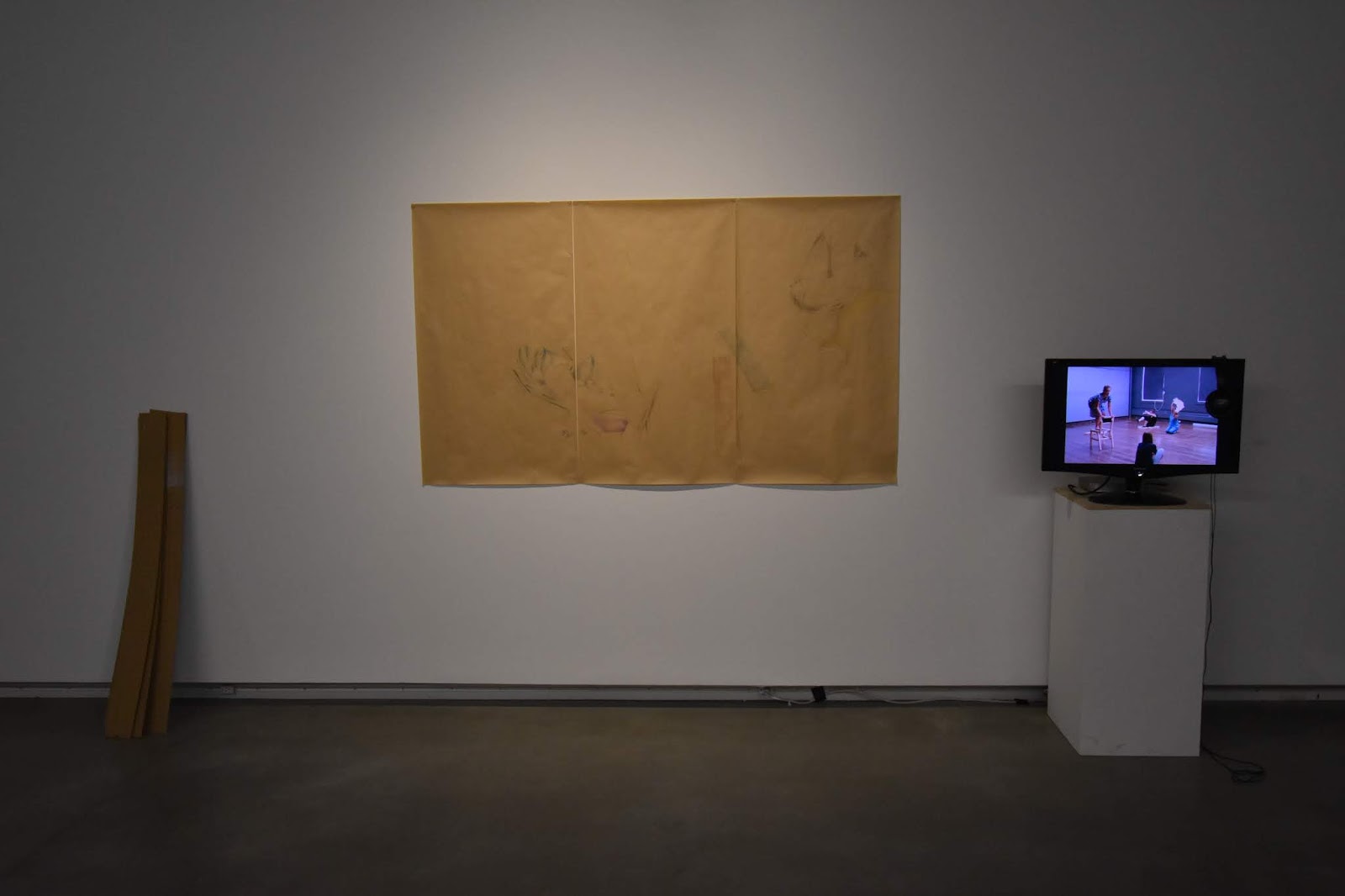
Leaky Rad (Performance for Sculpture) explores concepts of shared space and motion. In Leaky Rad I invited the general public to engage with performance prop. Photographs of this experiment were taken and drawn for temporary exhibition spaces. Alongside the drawings I made sculptures relating to this experience. The drawings and sculptures convey the fleeting notion of time-based action. The final installation is actual and insinuated remnants of performance activities
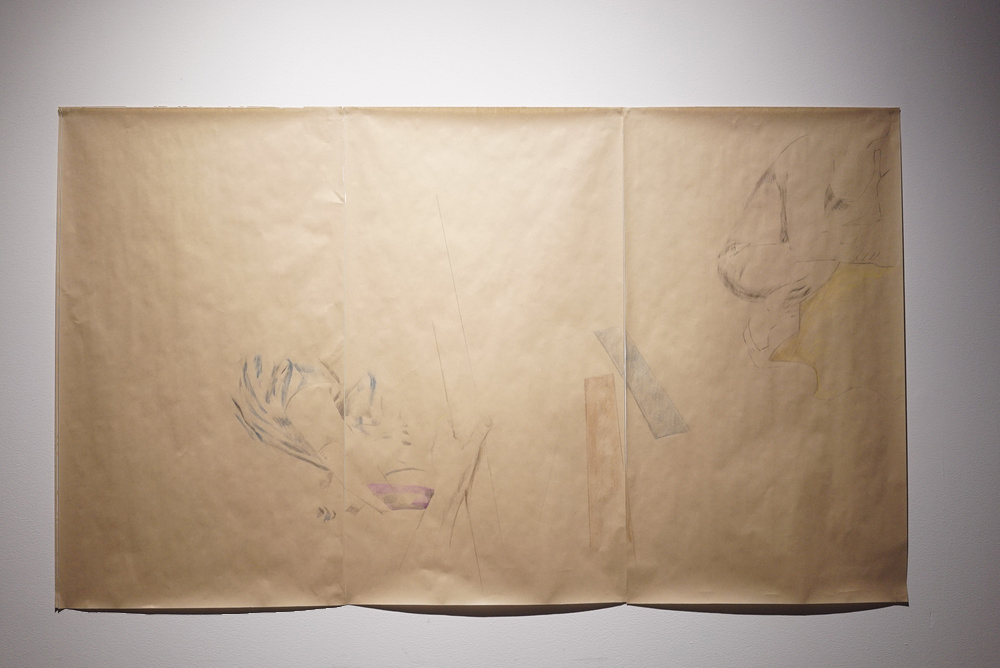

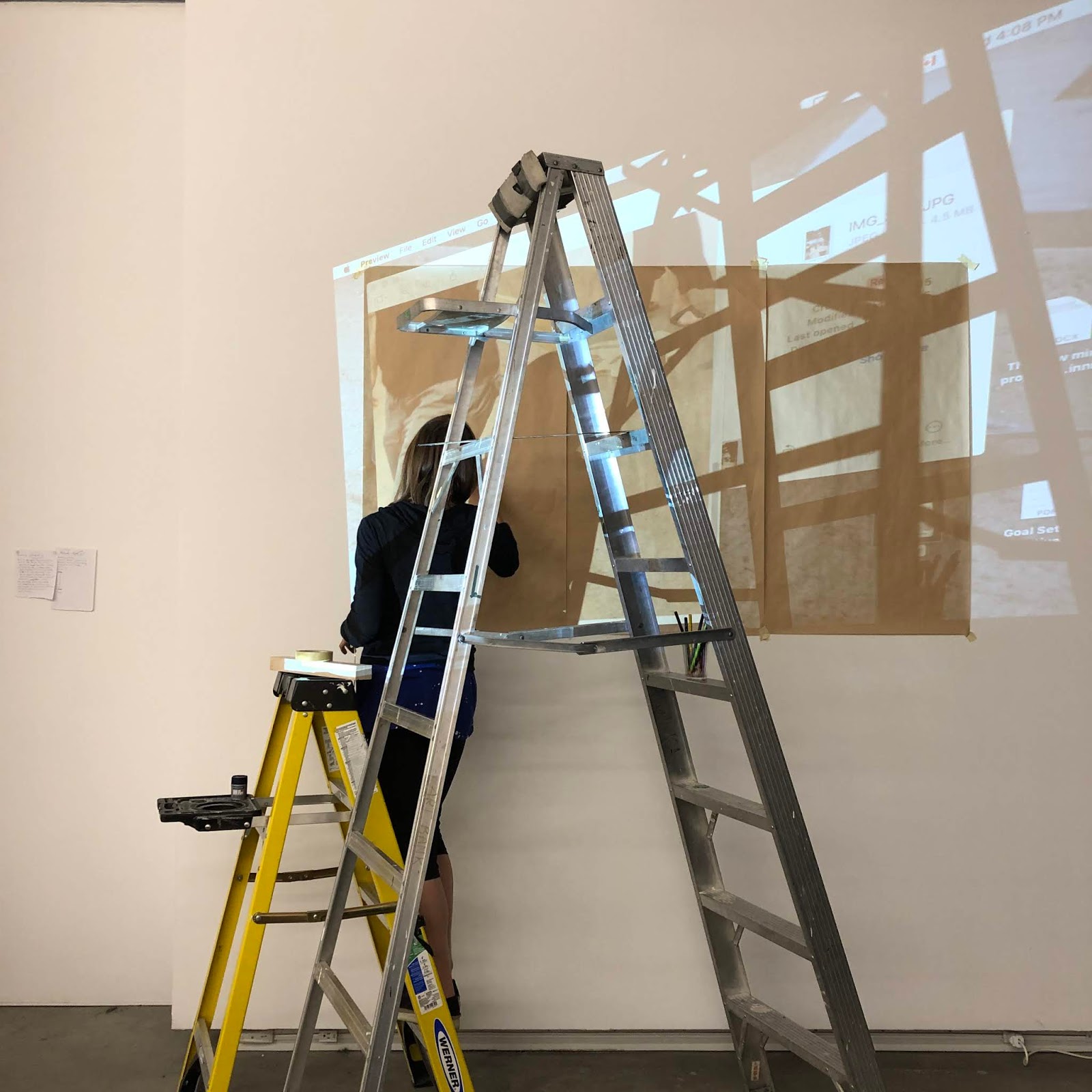

link to installation video
Credits:
Performance Facilitator: Hannah Arras
Sound: Suture: Greg Hanec and Sarah-Lynne Otsuji
Performers/participants: Leigh Anne Parry, Carol Seburn, Carly Zelinsky, Becca Meecham, Sheila Terra, Heidi Phillips, Nicole Shimonek
Spaces: XCues Cafe and Billiards. The Output
Produced during Trackings and Trappings, Plugin Summer Institute.
Finishing funds from the Wendy Geller Fund Video Pool Media Arts Centre
Credits:
Performance Facilitator: Hannah Arras
Sound: Suture: Greg Hanec and Sarah-Lynne Otsuji
Performers/participants: Leigh Anne Parry, Carol Seburn, Carly Zelinsky, Becca Meecham, Sheila Terra, Heidi Phillips, Nicole Shimonek
Spaces: XCues Cafe and Billiards. The Output
Produced during Trackings and Trappings, Plugin Summer Institute.
Finishing funds from the Wendy Geller Fund Video Pool Media Arts Centre
2010 Plugin Summer Institute with Post Commodity
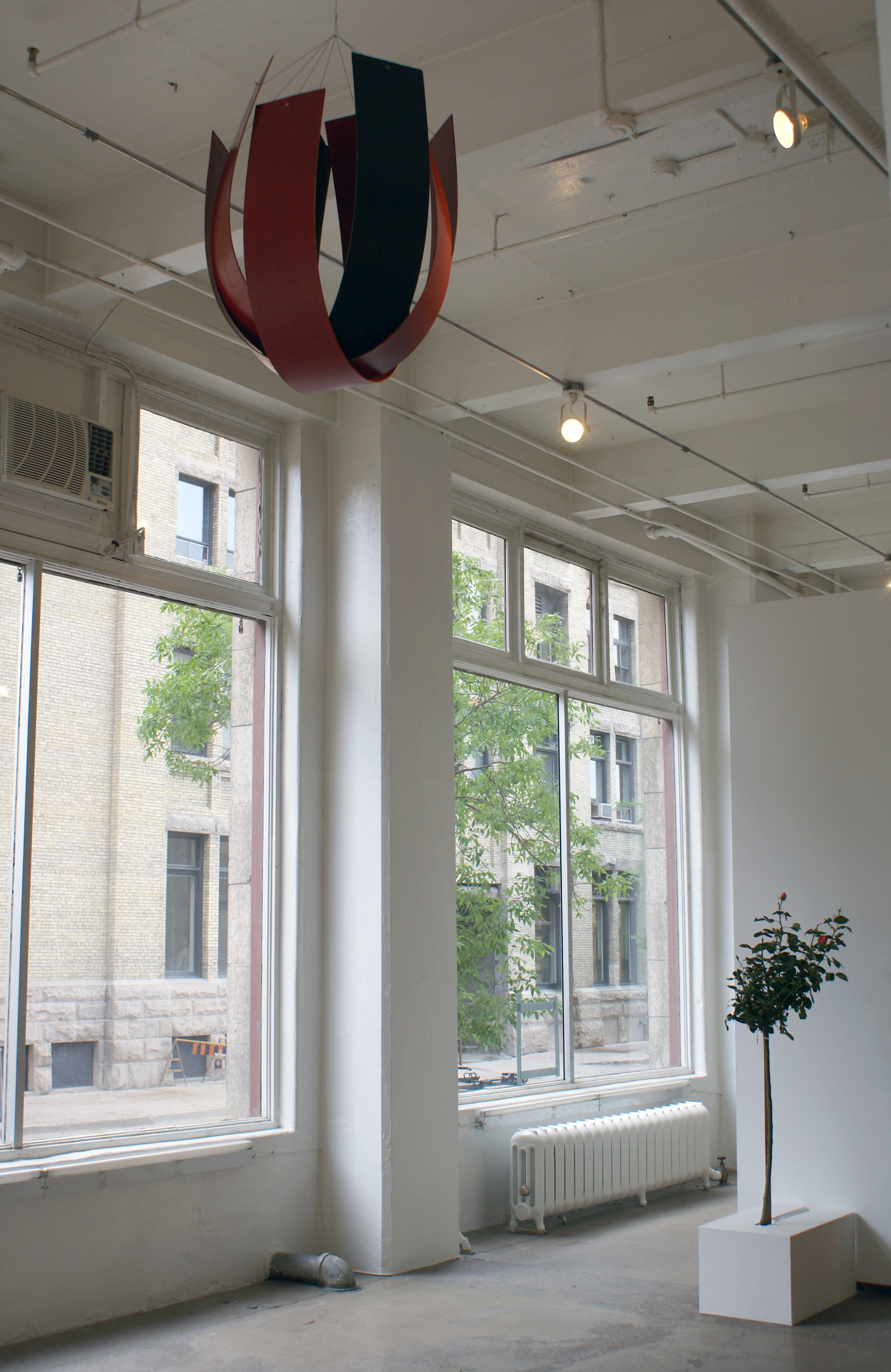
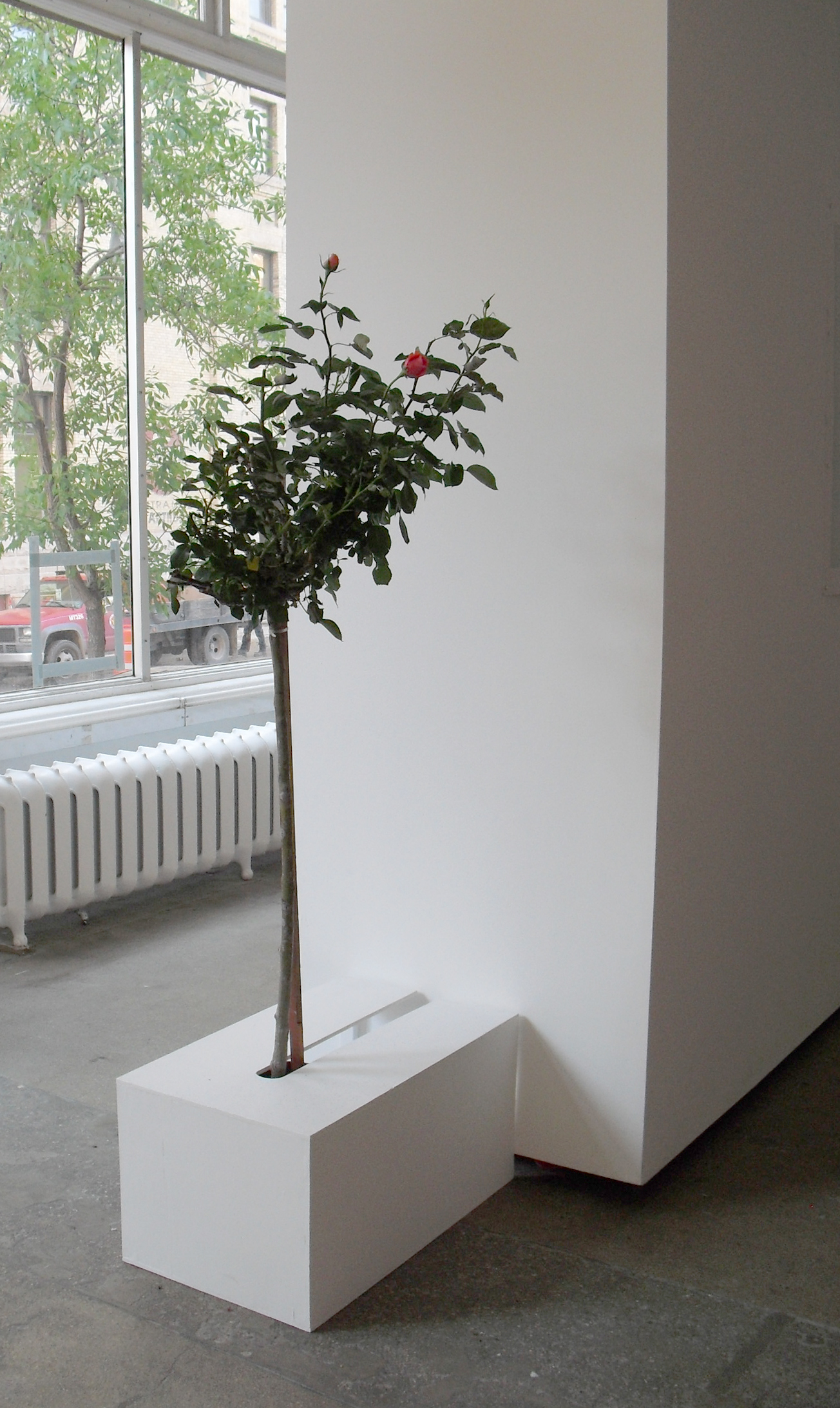
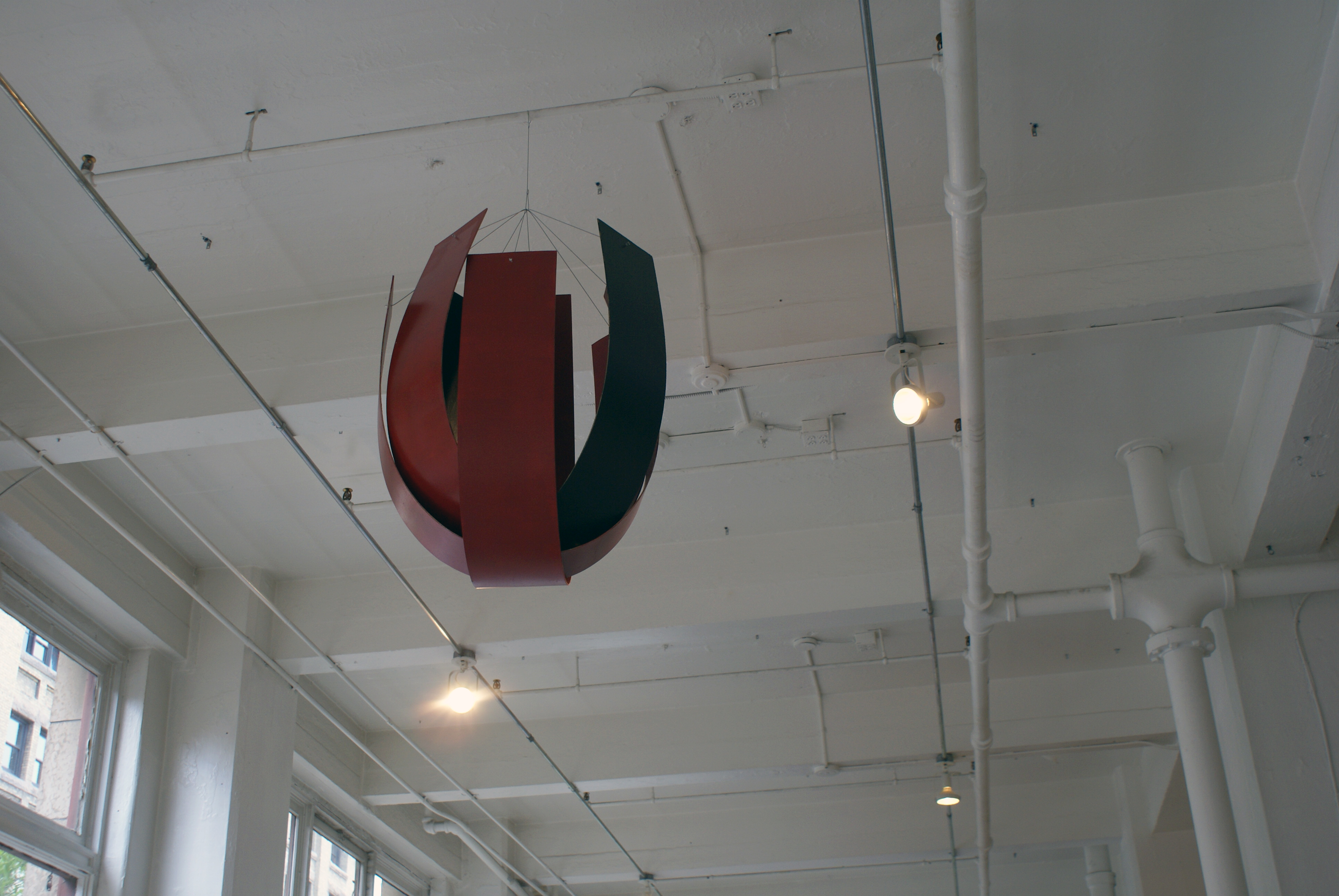
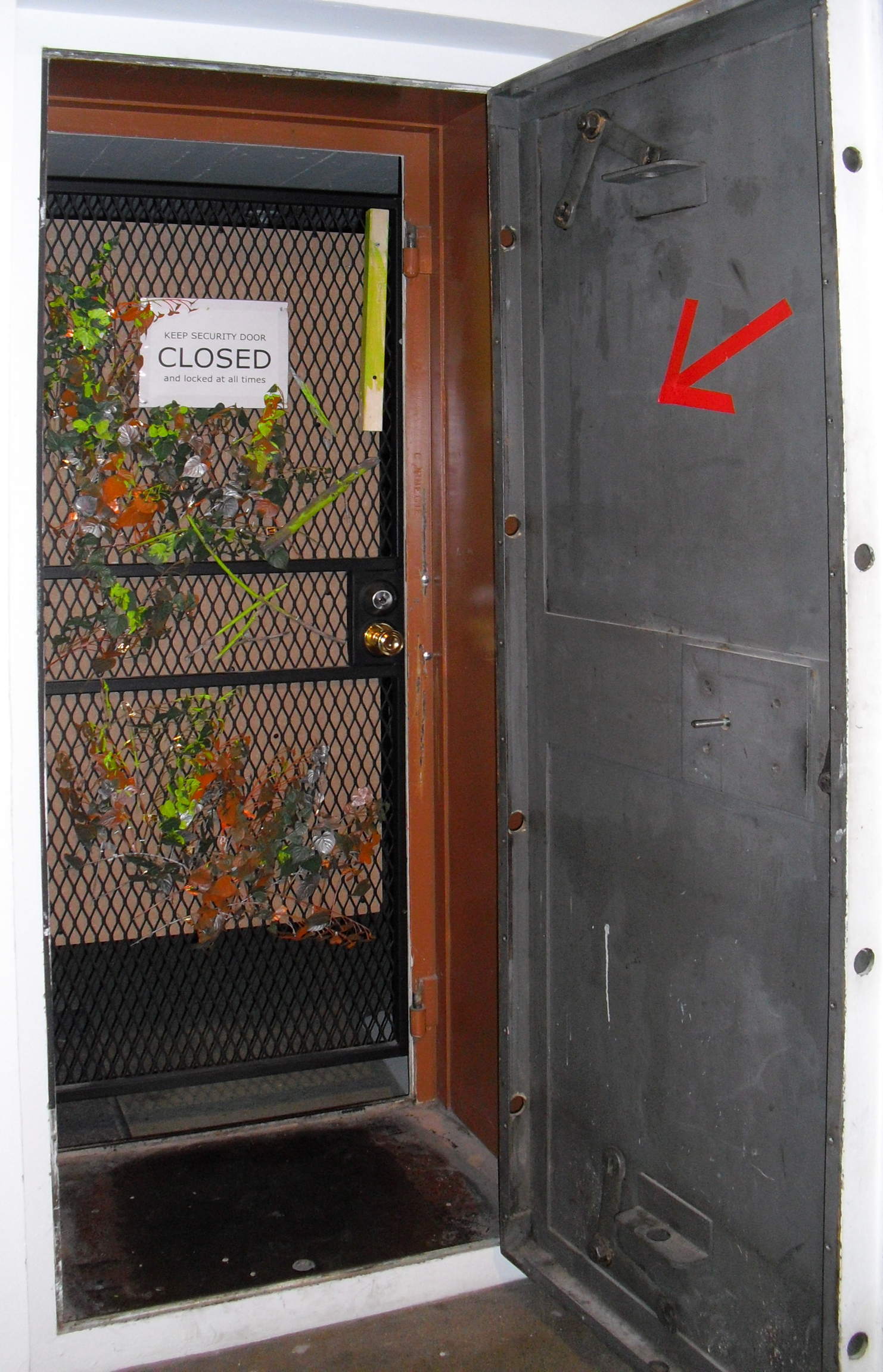
Fire and Tea Rose Hybrid are symbols of what was present before. Inspired by plants growing through concrete, I imagined the tree and leaves inhabiting and taking space in the gallery. Impacted by the rigorous discussions on origin and nature, I made a sculptural mdf symbol for fire.
collaborative project: With artists Leslie Supnet and architect Zephyra Vun to make T.A.P.E. Temporary Authority Placement Exercise. We used an accessible material, tape, to create interventions in various spaces and situations in Winnipeg. Ideas of messaging, territory, transition, and position were explored in video performances. We each brought our own respective disciplines to the process.
collaborative project: With artists Leslie Supnet and architect Zephyra Vun to make T.A.P.E. Temporary Authority Placement Exercise. We used an accessible material, tape, to create interventions in various spaces and situations in Winnipeg. Ideas of messaging, territory, transition, and position were explored in video performances. We each brought our own respective disciplines to the process.
